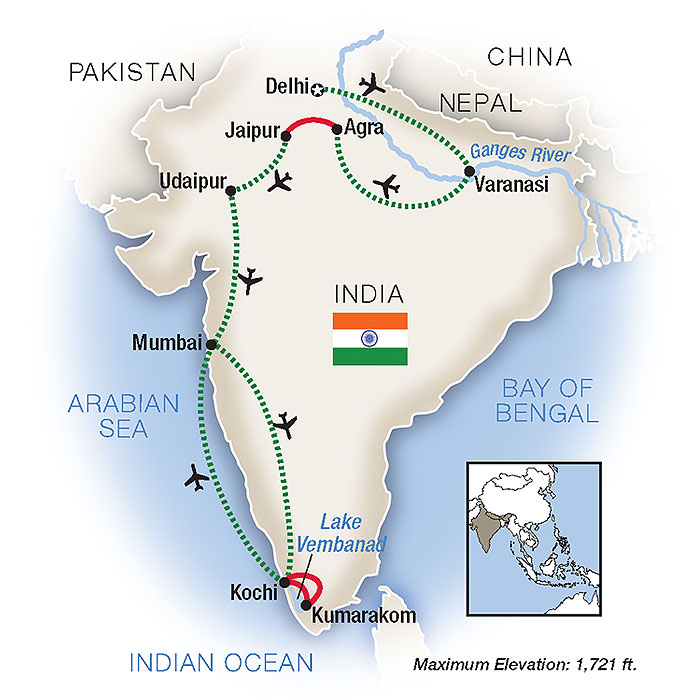
A Portrait of India
October 20 - November 6, 2024
Mike and Judy Henderson
I will leave this map on the top of the page just for reference.

++++++++++++++++++++++++++++++++++++++++++++++
10/30/2024 (Wednesday, to Kochi) Diwali eve! Today is a travel day. We were supposed to fly to Bangalore, and then to Kochi, but there was an aircraft problem, so Annie got us tickets to Hyderabad, with a follow-on to Kochi. It meant that we had to leave a bit earlier, about 8:30am, but it all worked out.
Additionally, for this segment of the tour, we packed our duffel bag for four days of travel, and our big suitcases are to be taken to Mumbai (formerly known as Bombay).
[Update note: The map Tauck now has on their webpage about this trip now shows a flight to Hyderbad and then to Kochi, instead of an intermediate stop in Mumbai shown on the original map. But the itinerary section of the webpage describes the flight as going through Bangalore.]
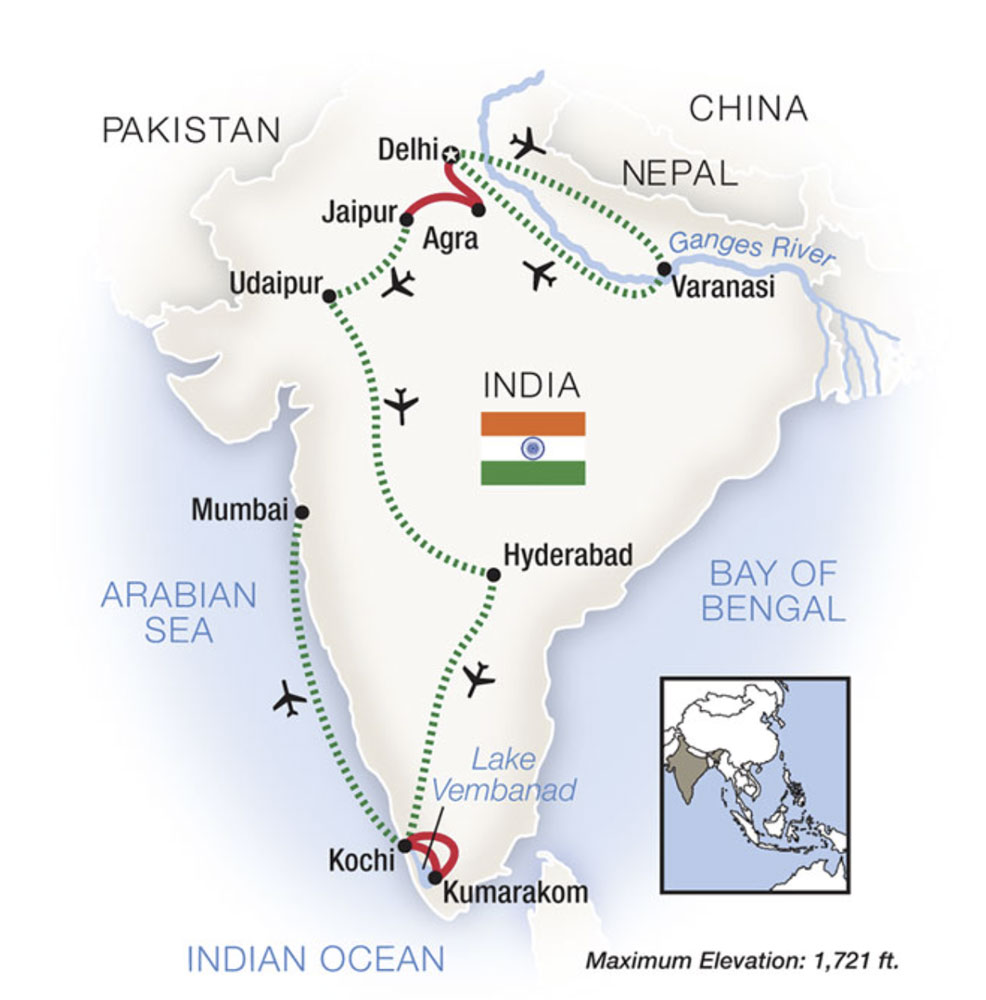
-------------------------------------------
For anyone taking this trip in the future: The airline, IndiGo, has a weight limit on carry-on bags of 7kg (about 15 pounds), but none of the flights enforced that limit. I saw some really big bags being carried on.
On one flight, the agent wanted me to check my bag, but I told him that I had batteries in the suitcase and could not check it. He let me carry it on. Judy had the same experience with a different flight.
-------------------------------------------
As we were checking out of the hotel, I took this picture of a Diwali decoration in the hotel. Very elaborate and artistic.

Judy beside a Diwali decoration at the exit.
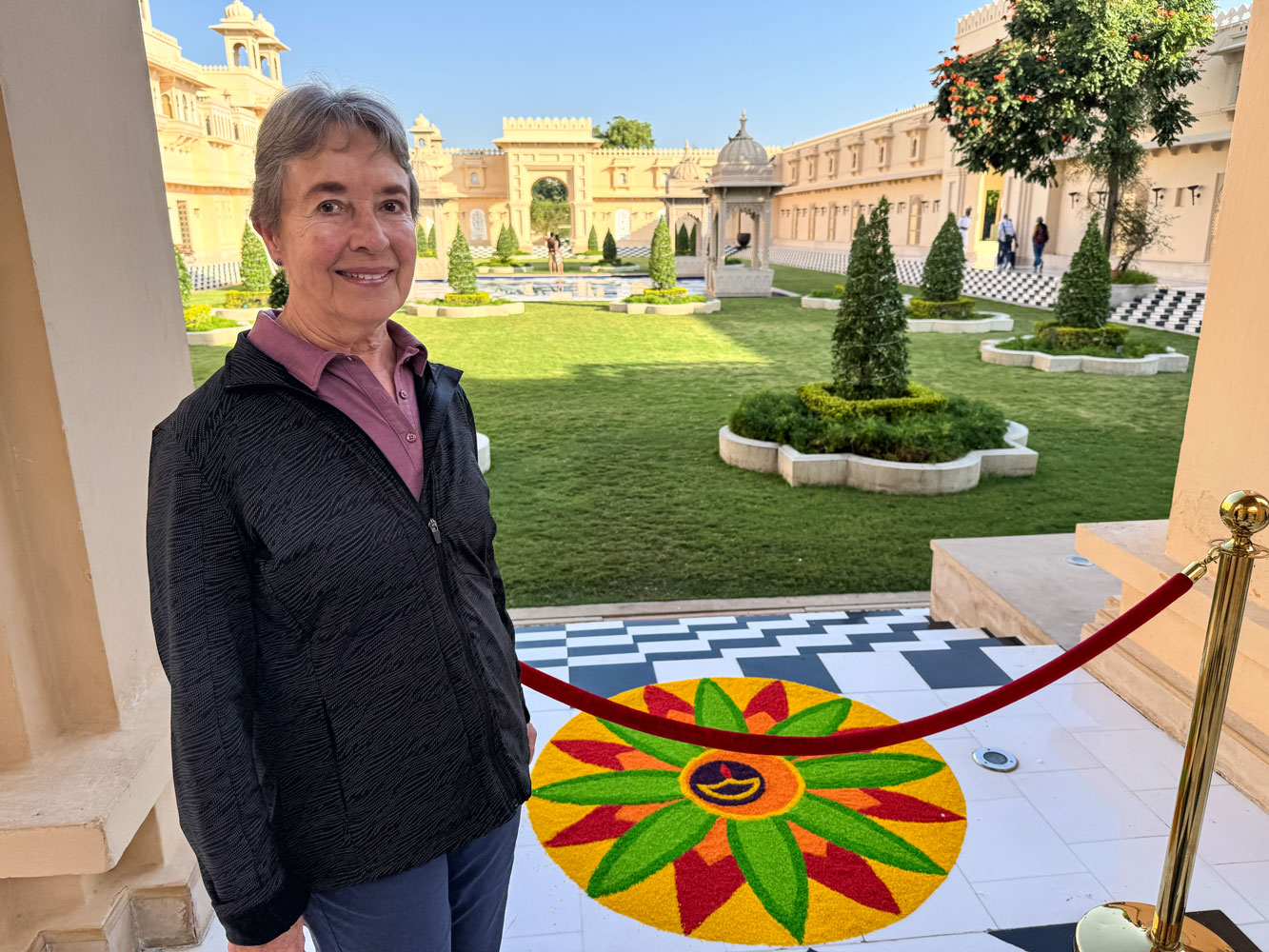
Some of the hotel staff saying "Goodbye" as the bus pulled out.
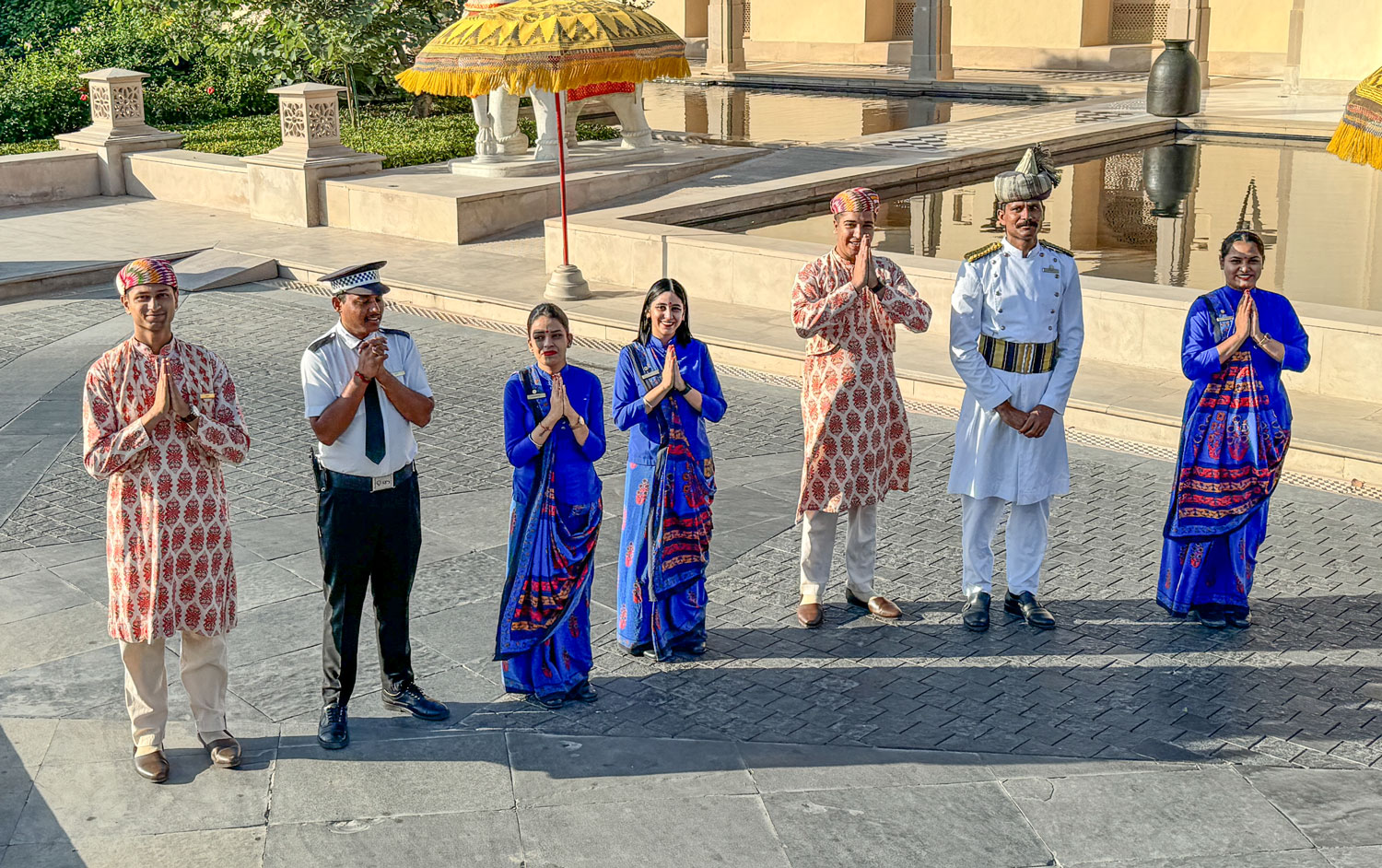
The Udaipur Airport is not huge, and it's clean and modern. We were there in plenty of time, got through security without any problems, and boarded the plane on time, about 10:30am. It's an Airbus A321, which is a stretched version of the A320. The flight was not full and most of us had seats either to ourselves or no one in the middle seat.
When we arrived in Hyderabad we had a tight connection and had to go through security again, but everyone made it easily and we actually had to wait for a while before boarding. This flight was on an Airbus A320, which is a very good, reliable airplane. It departed about 1:30pm.
We arrived in Kochi on time, about 3:30pm, and boarded a bus for a ride to the Grand Hyatt. It's a nice hotel but does not have the charm of the hotels we stayed in in northern India.
Here's an aerial view of the hotel.

Our room was large and well appointed. It had a few quirks. The curtains were motorized and it was confusing about how to get them to close. There was a master switch for the lights and when you used it, the room was DARK. Going to the bathroom at night required a flashlight. On the second night we learned how to leave one light on.
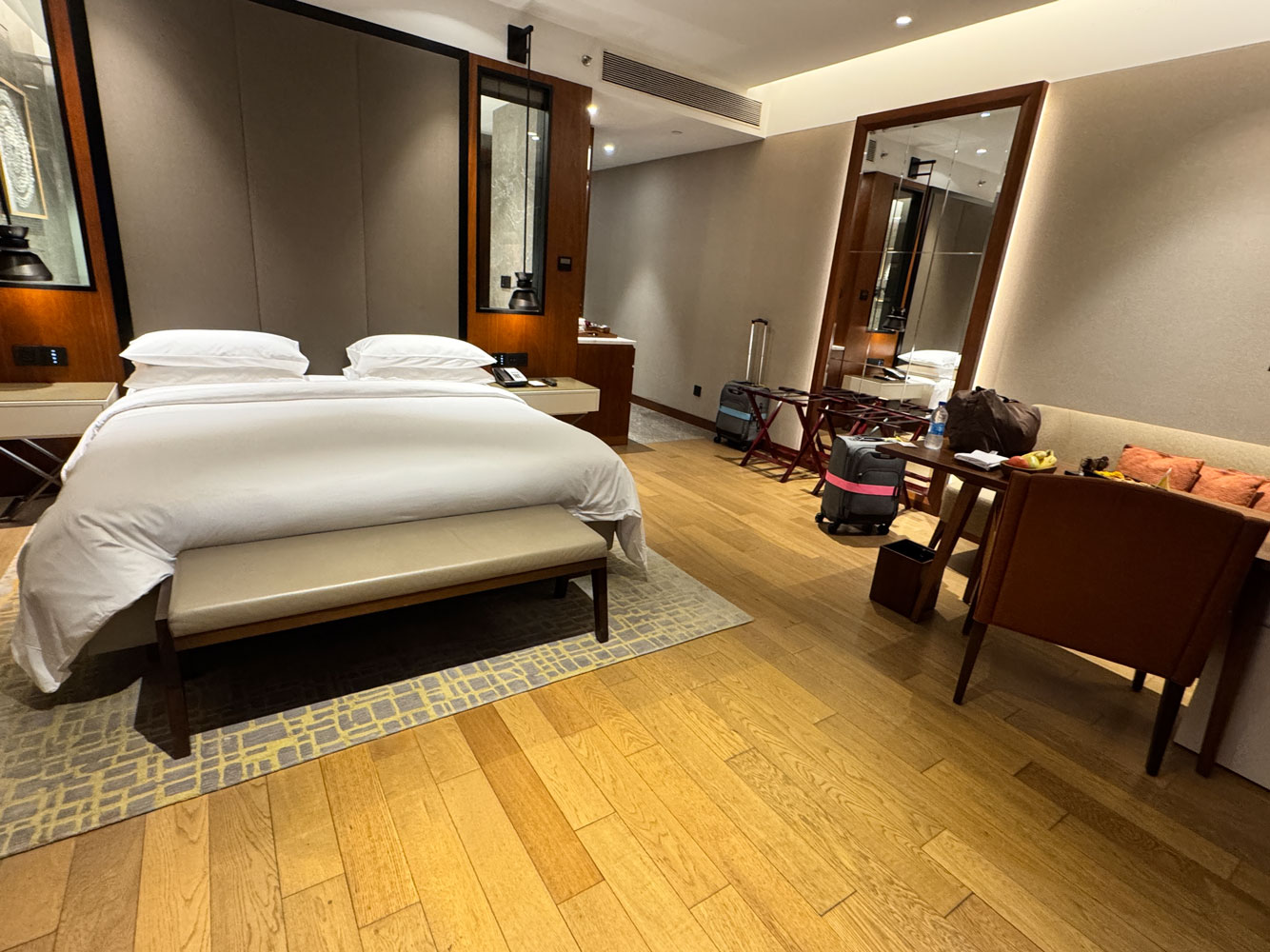
After settling in, we gathered for a sunset boat cruise of the harbor area. The boat in this picture is not the boat we cruised on. Ours was tied to this boat - we walked through this one to reach it. I'll have a picture of one like ours later.
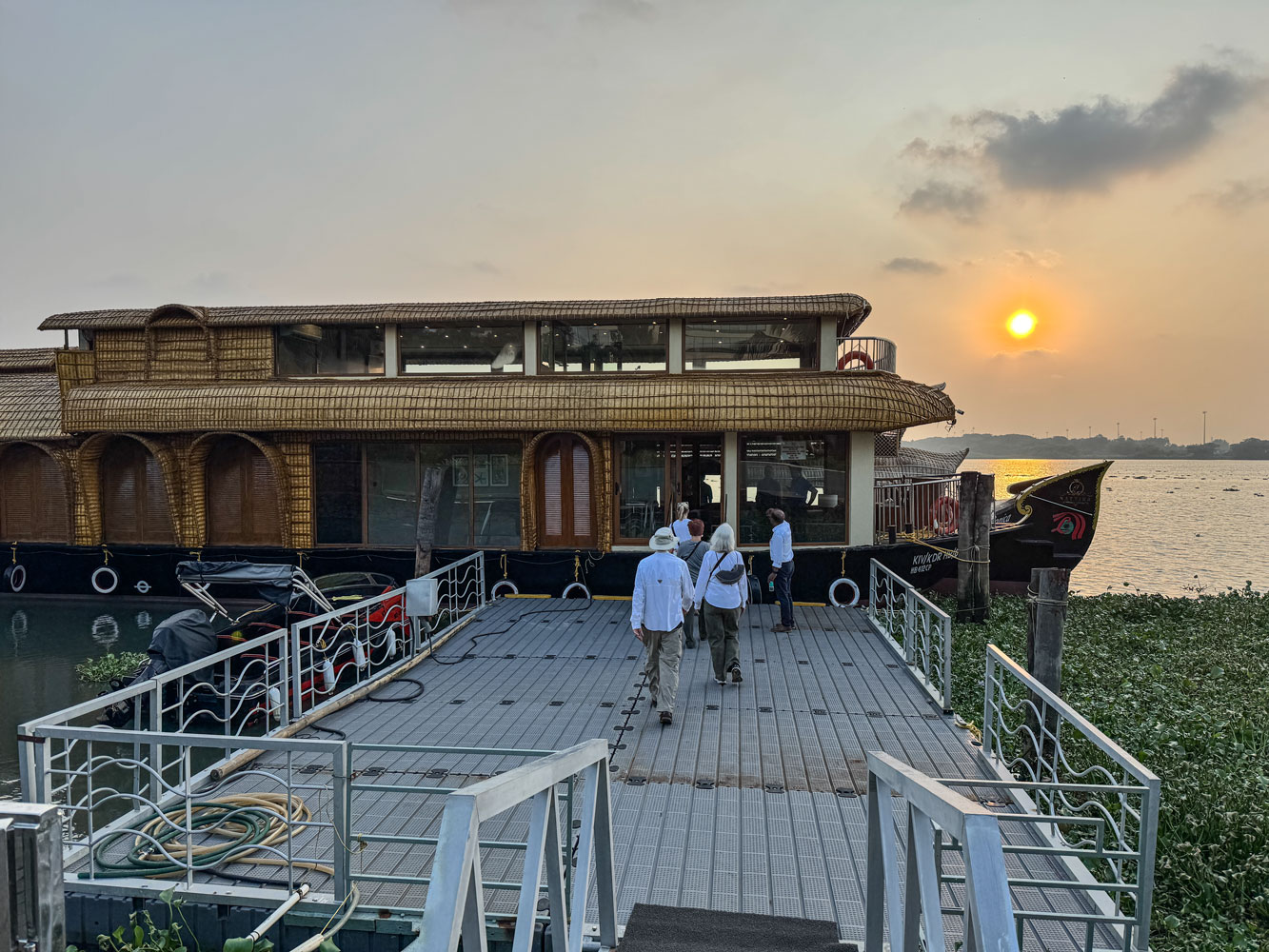
We sailed toward the commercial dock area.
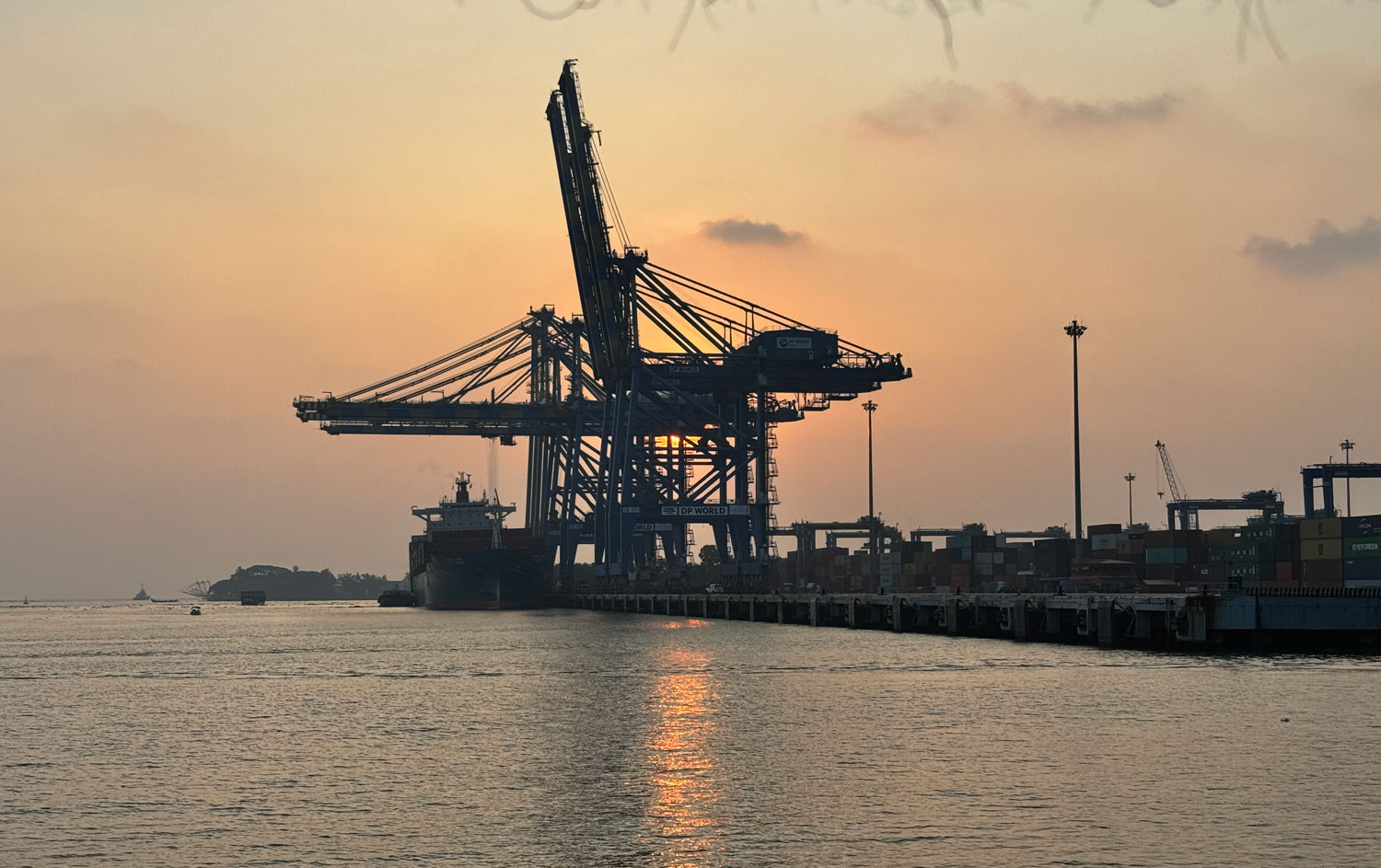
This boat was similar to ours. Note the water hyacinths forming lumps in the water. It is an invasive plant and can block waterways. It must be cleared on a regular basis. I'm from south Louisiana, and water hyacinths had been introduced to the swamps there. Someone had the bright idea of releasing nutria in the swamps to eat the hyacinths. The nutria loved the swamp and their population exploded but they were causing erosion problems with their dens and eating all the vegatation, not just the hyacinths.
But at the same time, the alligator population had declined to dangerously low levels, primarily because of over hunting. Louisiana put a moratorium on hunting the alligators for a while, but what really brought them back was the nutria. The nutria were excellent alligator food. The nutria still cause a lot of damage to the environment but it's not as bad as it once was.
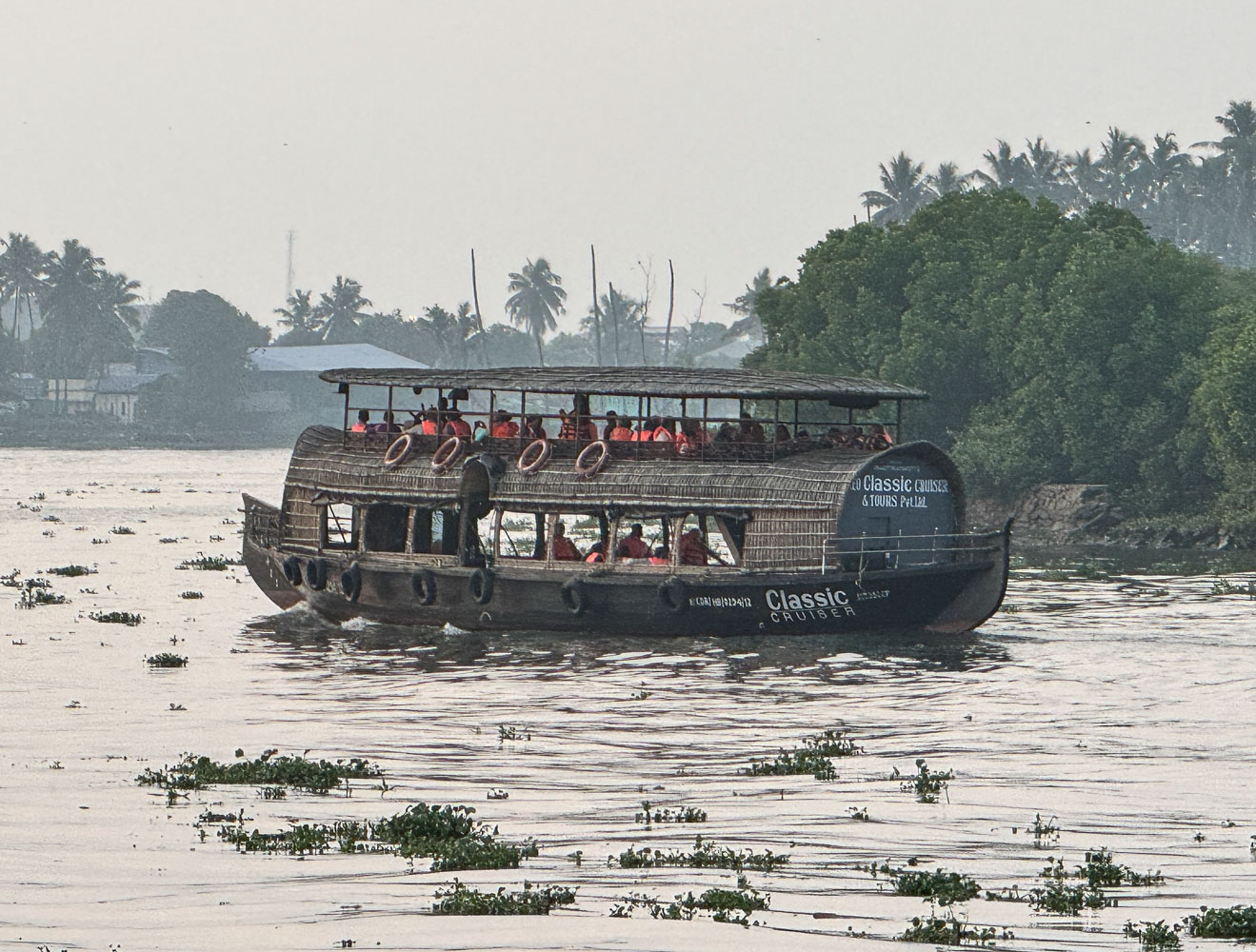
These are triangular Chinese fishing nets, used by some of the fishermen here.

One of the fishing boats of the area. They are returning after fishing all day.
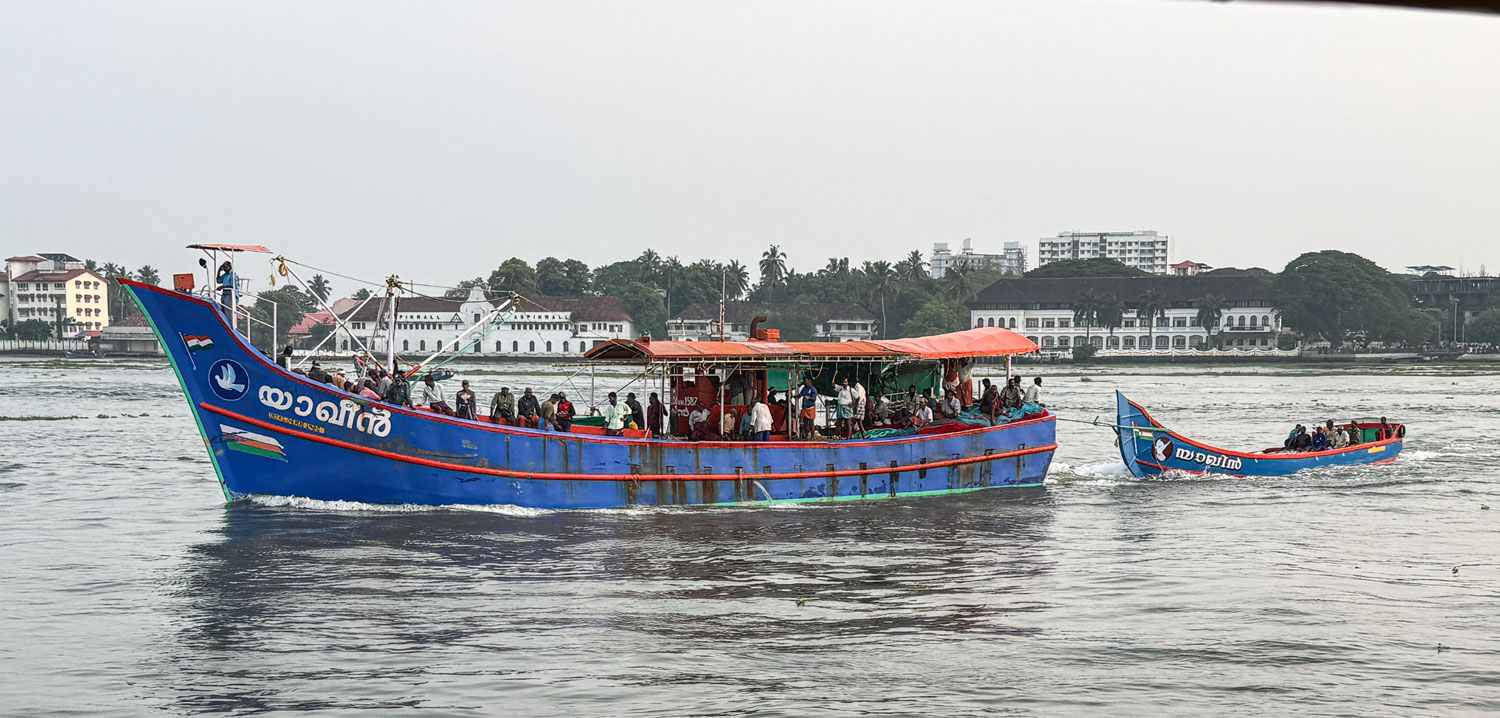
The fishing boats tie up at the dock to unload their catch.
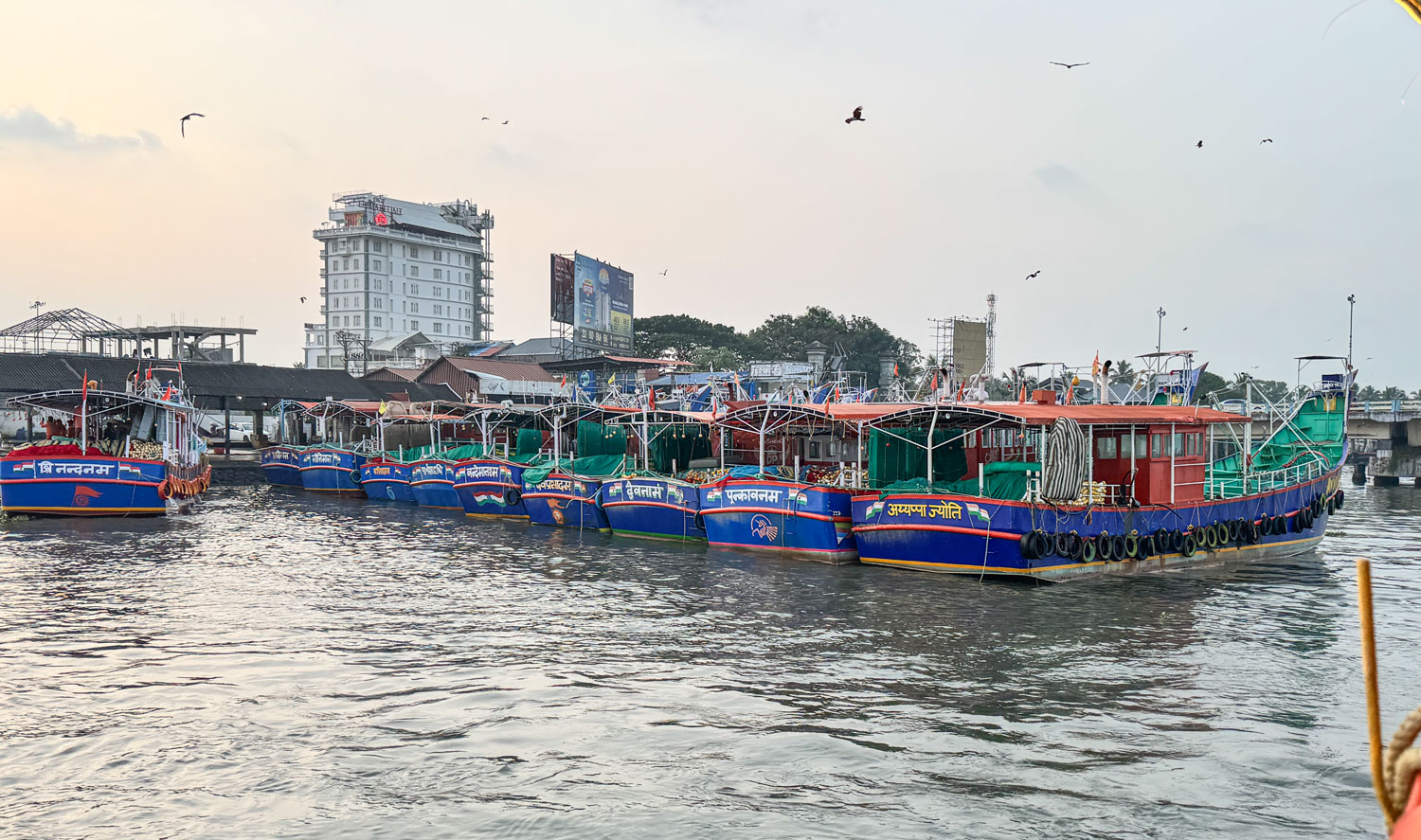
A view of the same boats from the bow. Water hyacinths are everywhere.
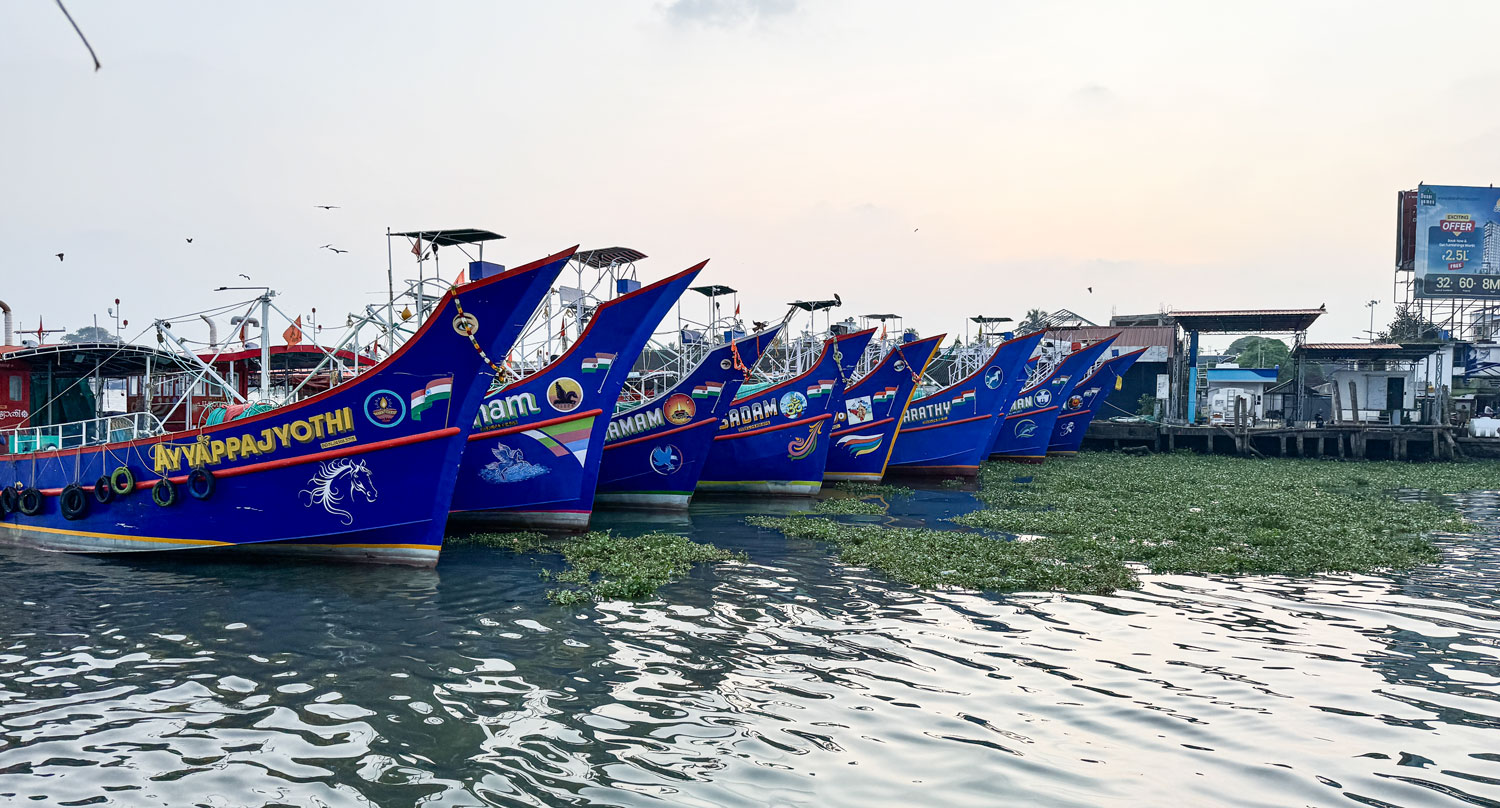
These men were washing their nets.
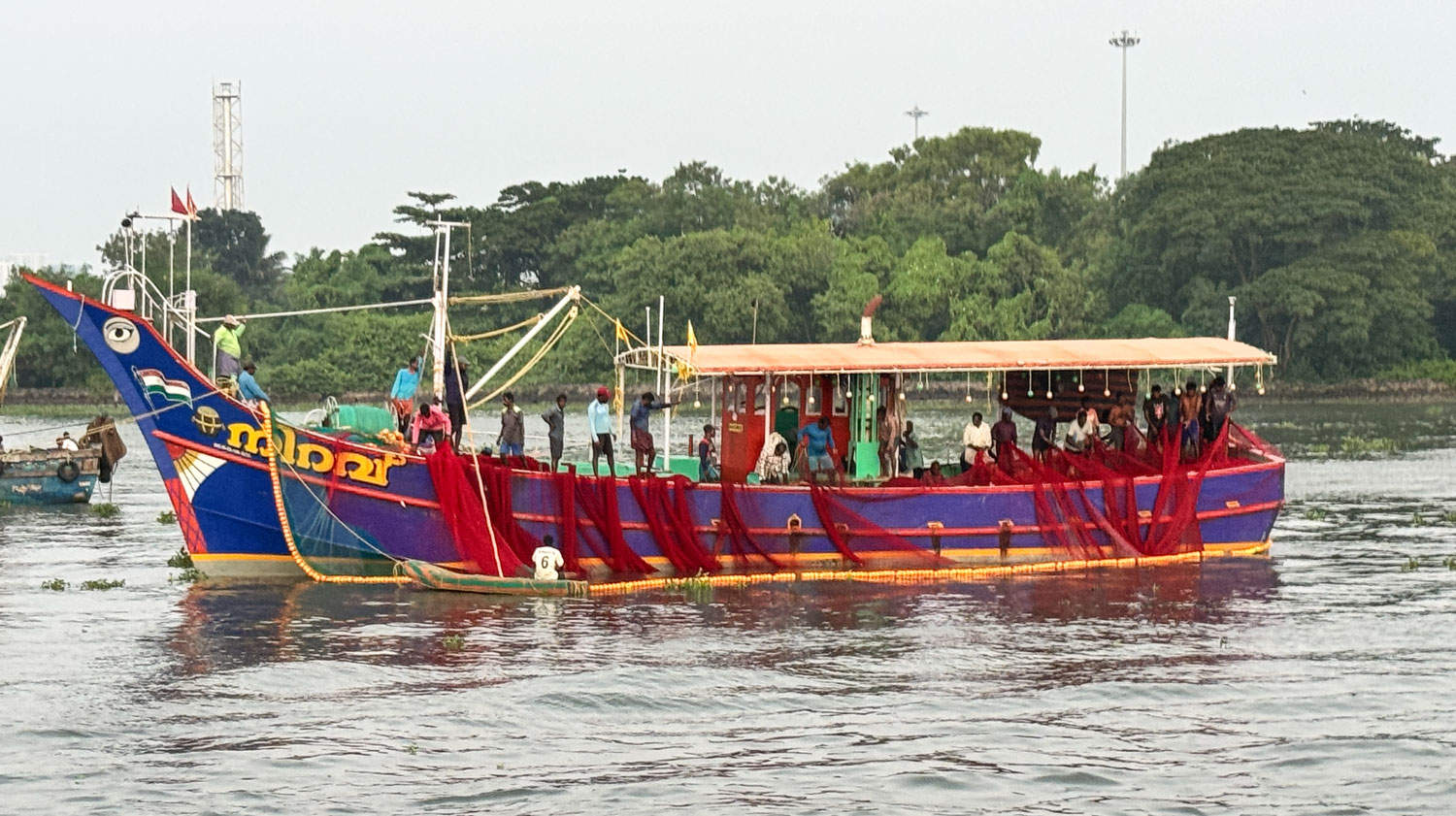
We headed back to the hotel and Judy and I went to dinner at the Malabar restaurant. The problem with that restaurant was that if you order off the menu - instead of doing the Indian buffet - it takes about 30 minutes to get your food. Judy's seabass was good, and I enjoyed a meat lover's pizza.
After dinner it was to bed.
++++++++++++++++++++++++++++++++++++++++++++++
10/31/2024 (Thursday, Kochi) Today is Diwali. However, I learned that Diwali is celebrated by most people on the third day of the Diwali period so Diwali actually started on October 29th.
This morning, we had a talk by Dr. Anthony about Kerala and the spice trade.
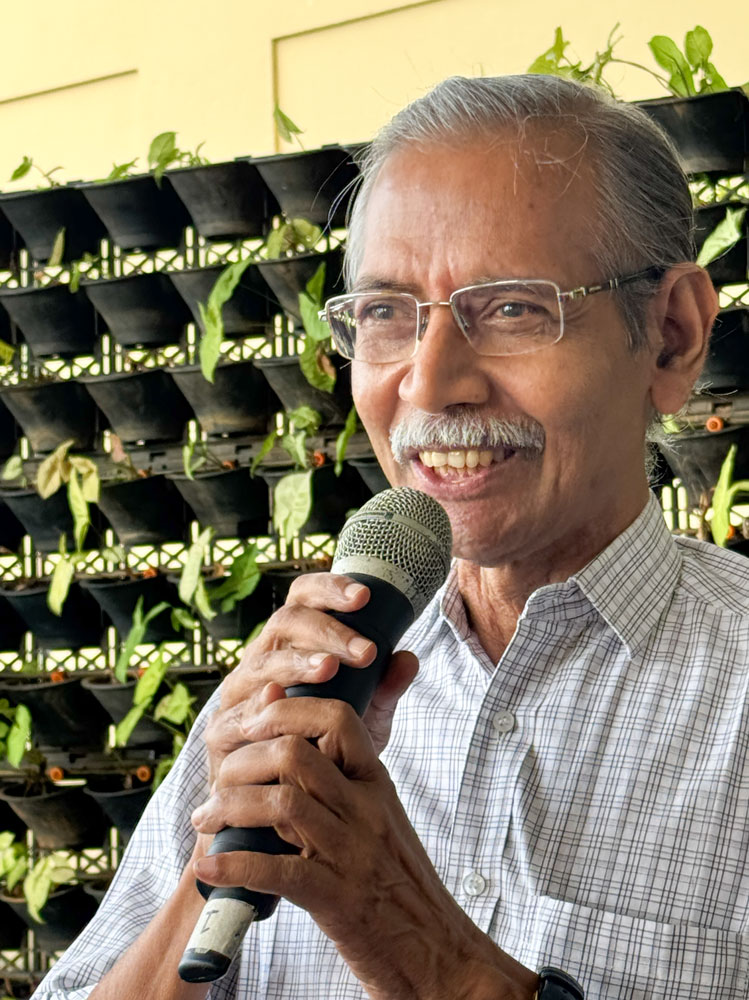
The spice trade goes back to antiquity, at least to 1500BC. Some of the major spices traded were black pepper, cinnamon, cardamom, ginger, nutmeg, star anise, clove and turmeric.
For European trade, the spices were shipped via the Red Sea, or overland via the incense route.
In 1498, Vasco da Gama pioneered the route around the Cape of Good Hope, which opened the trade to Europeans. Portugal was able to maintain an essential monopoly on the spice trade until 1815.
Dr. Anthony also pointed out that this area is more Christian than other parts of India because the Portuguese were interested is "saving souls" as well as spice.
Unfortunately, because of my hearing problems and Dr. Anthony's accent I could only understand parts of his talk but I researched the subject after we returned to the hotel. For more information, please see the articles that I've linked to.
After the talk, we boarded a boat....
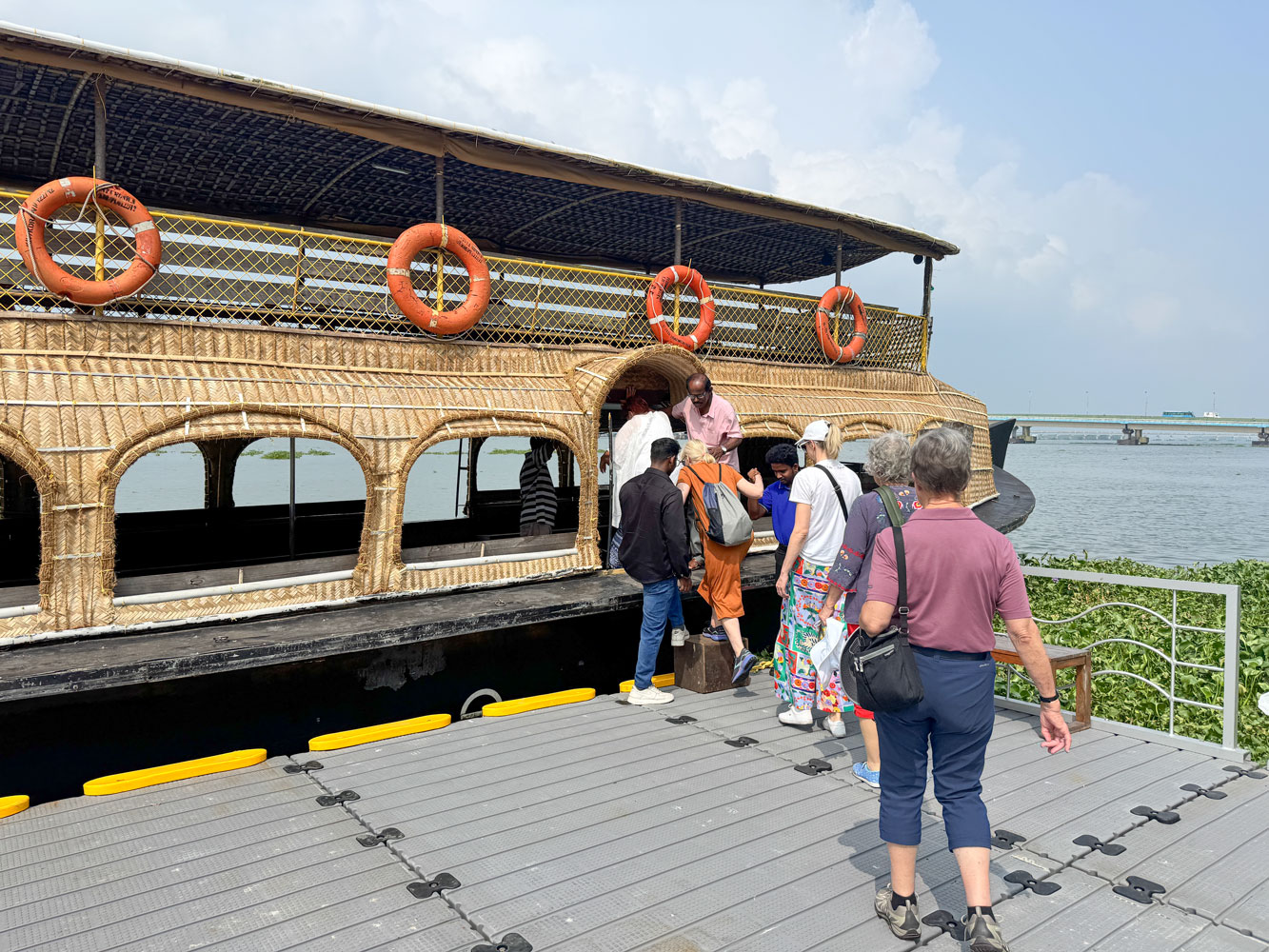
Which took us to Fort Kochi where we boarded the bus.
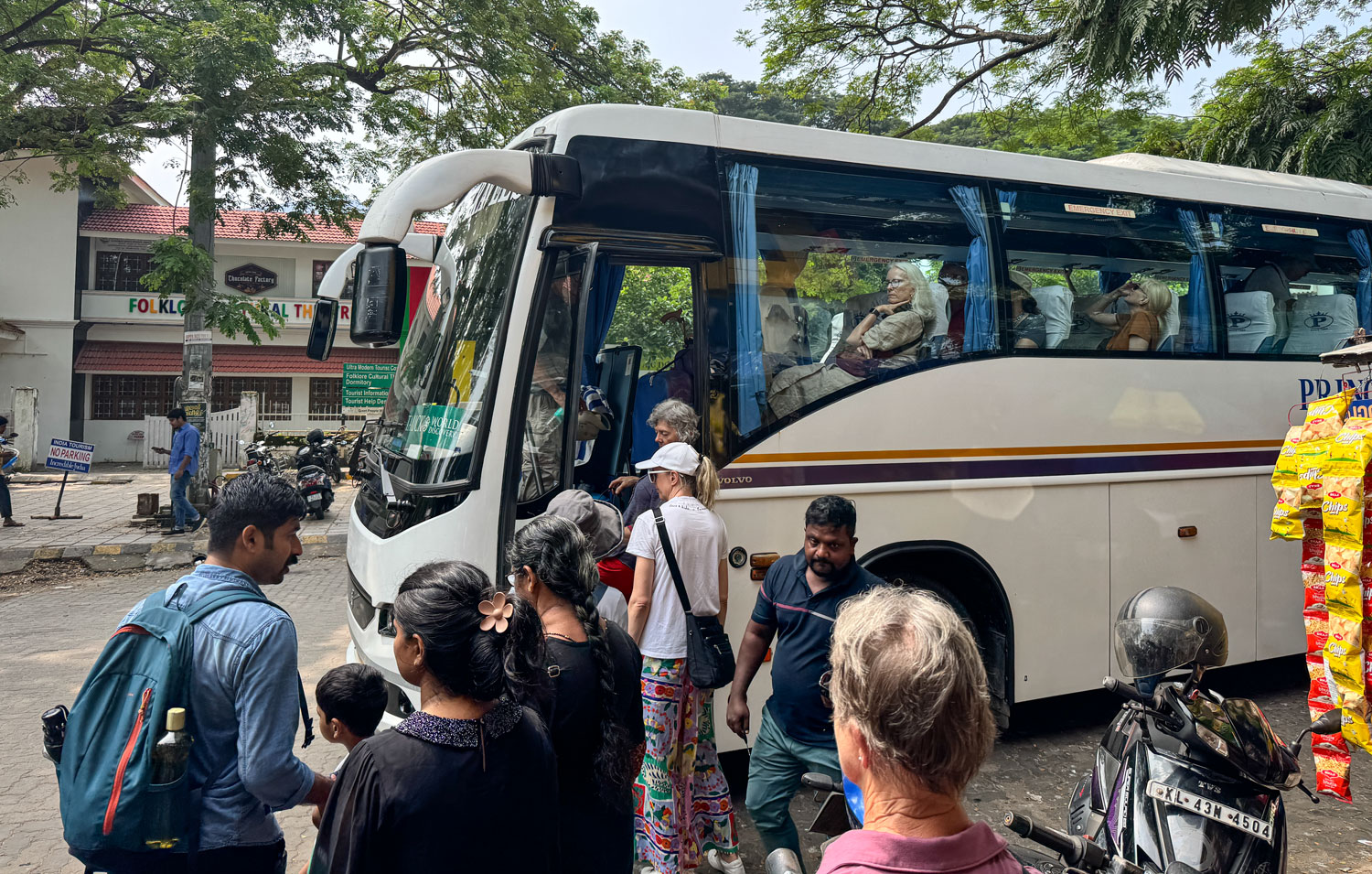
The bus took us to Nimmy and Paul's place where we would see an Indian cooking demonstration and have lunch
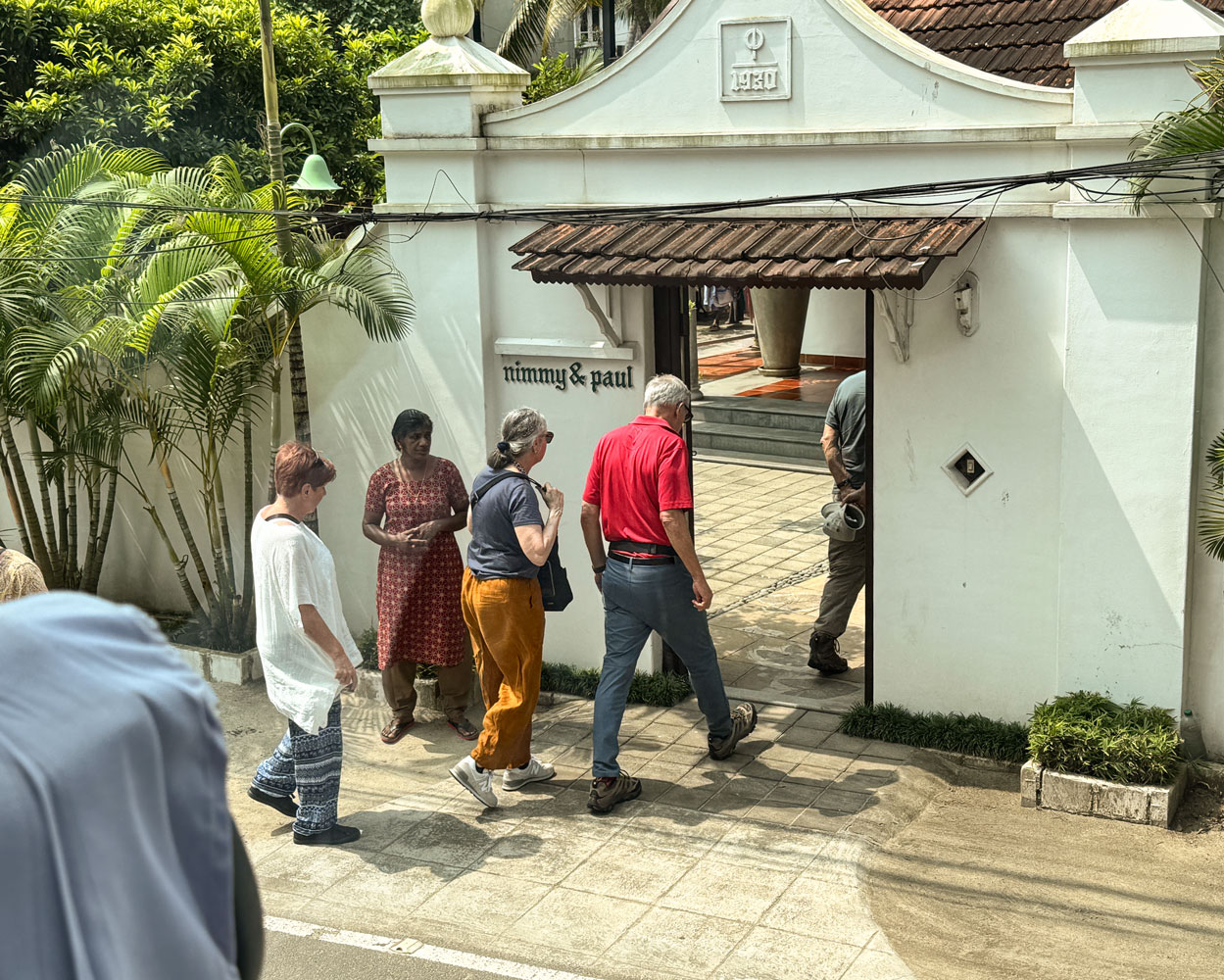
Here's Nimmy.
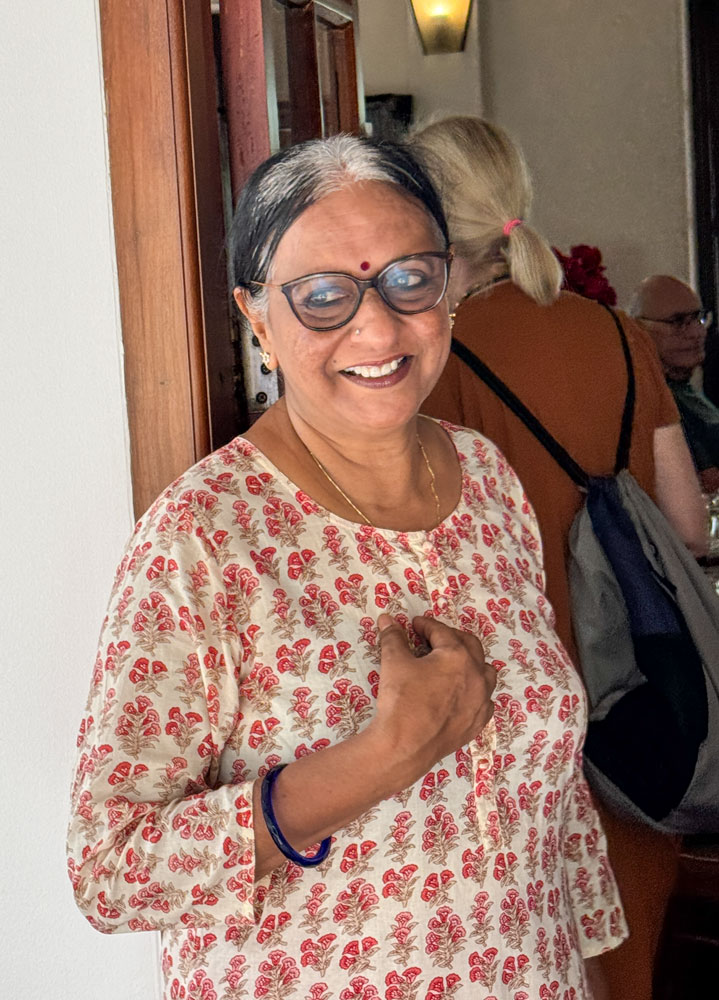
Here's her cooking demonstration area.
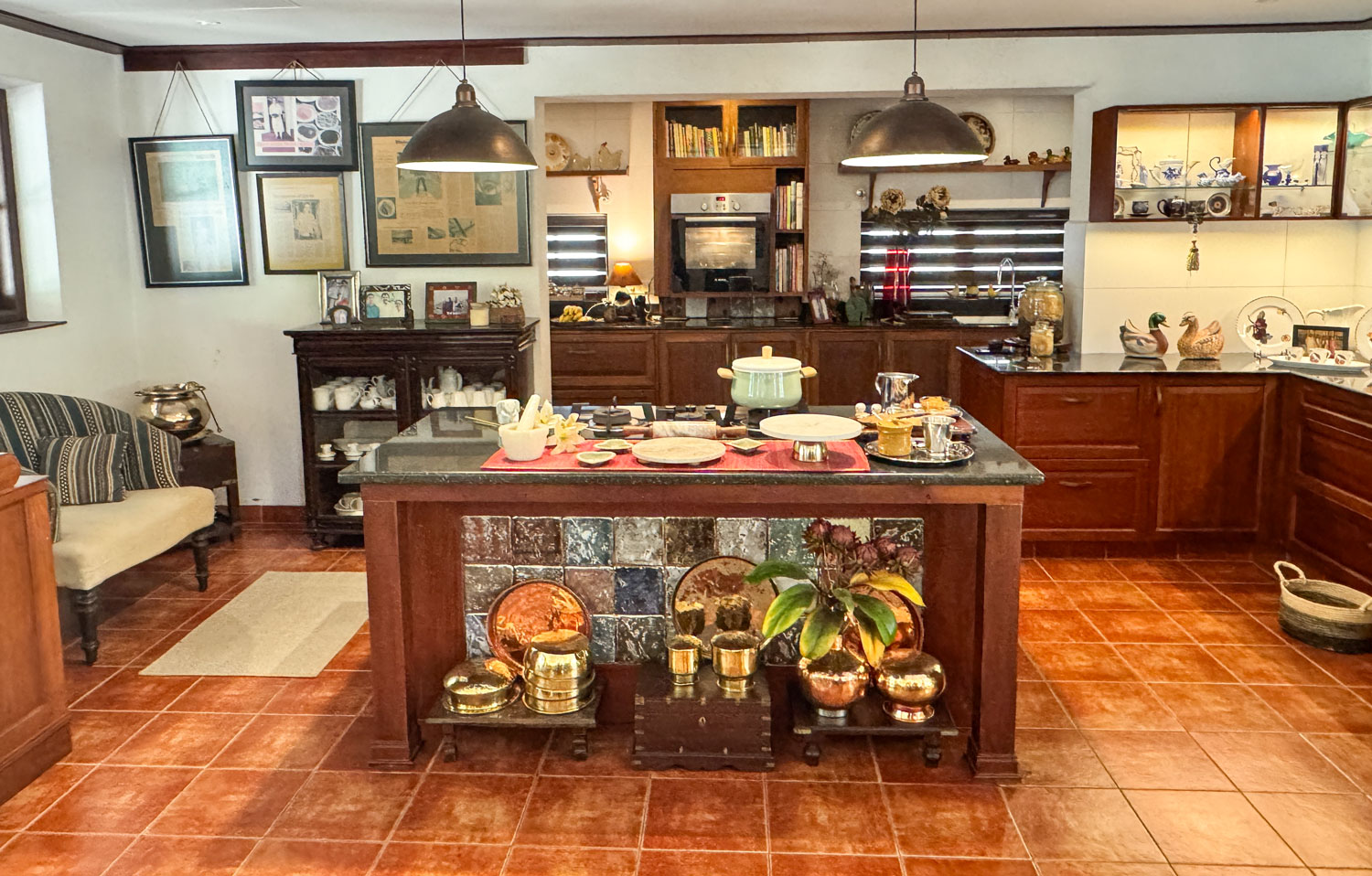
And our group.
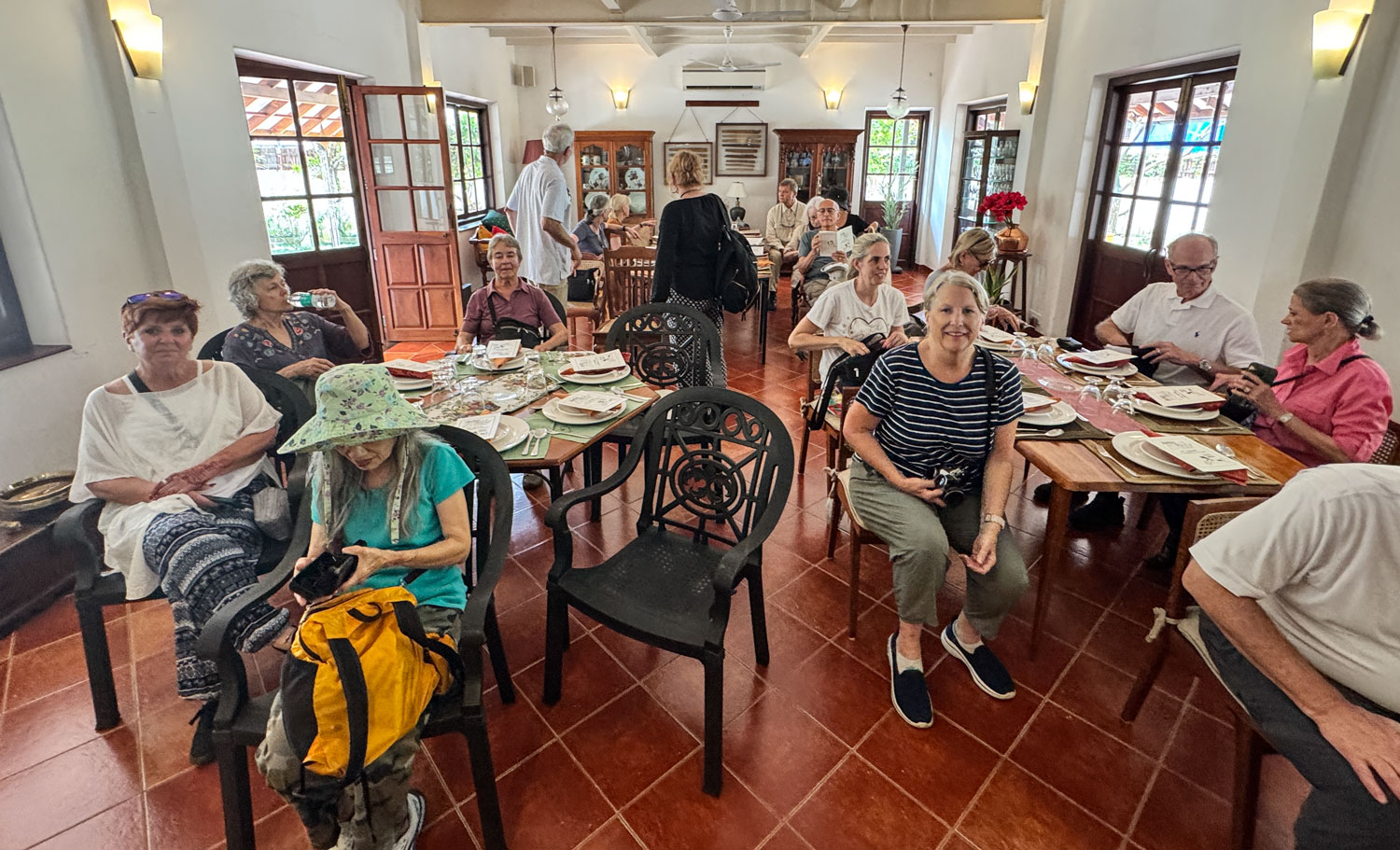
Nimmy and her assistant cooking.
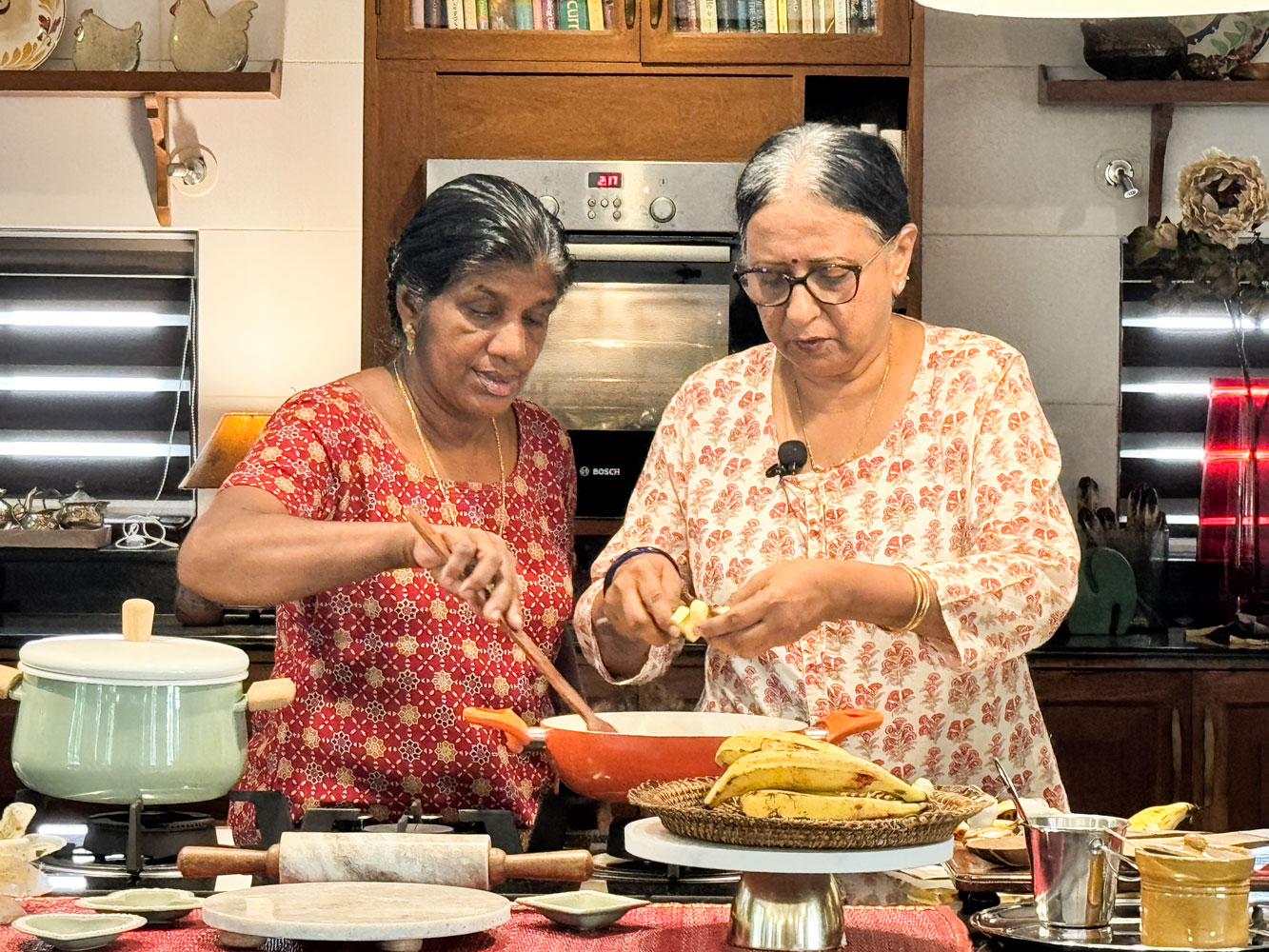
Here's Paul.
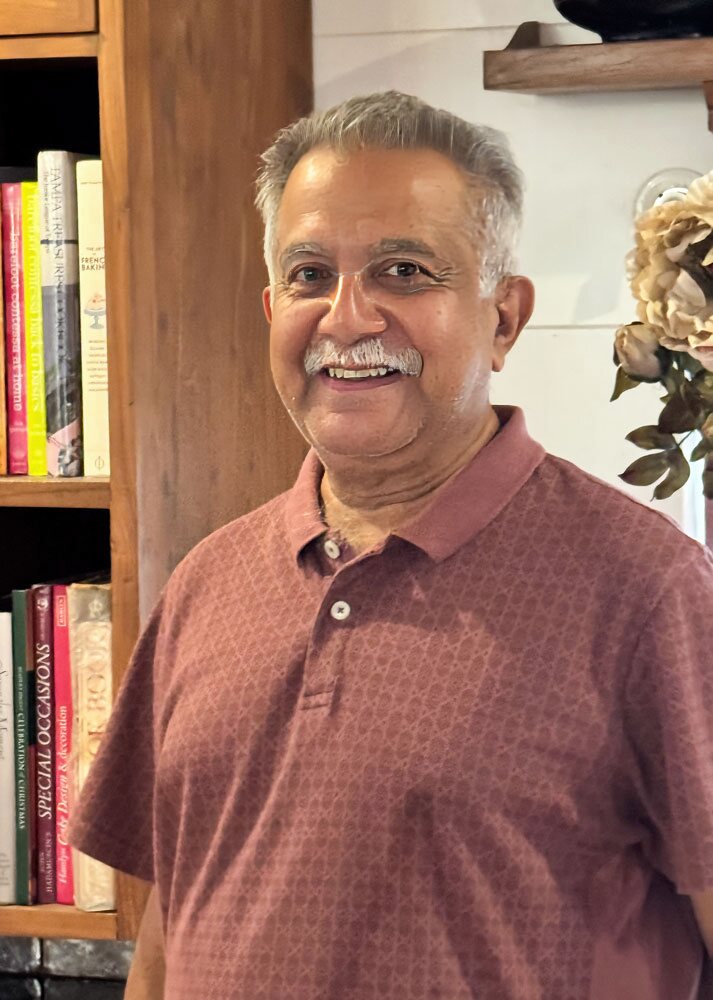
And one last picture of Nimmy.
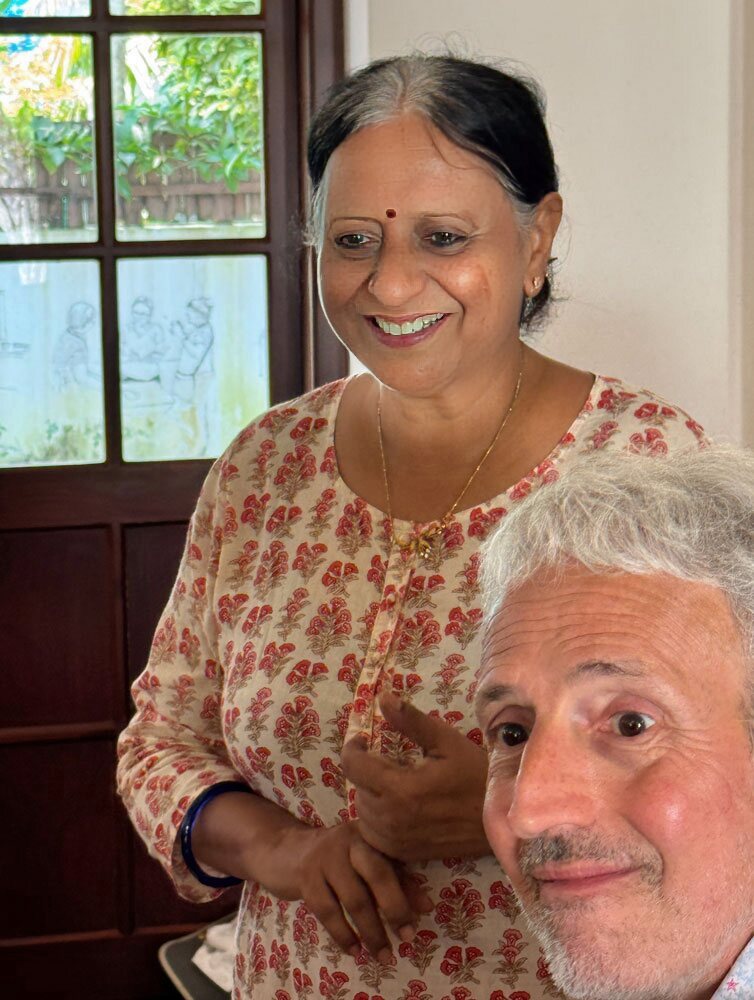
When we left Nimmy and Paul's home we went to the Mattancherry Palace, also known as the Dutch Palace.

A few of the displays. A palanquin used by a queen. She had to lie down in it while being carried.
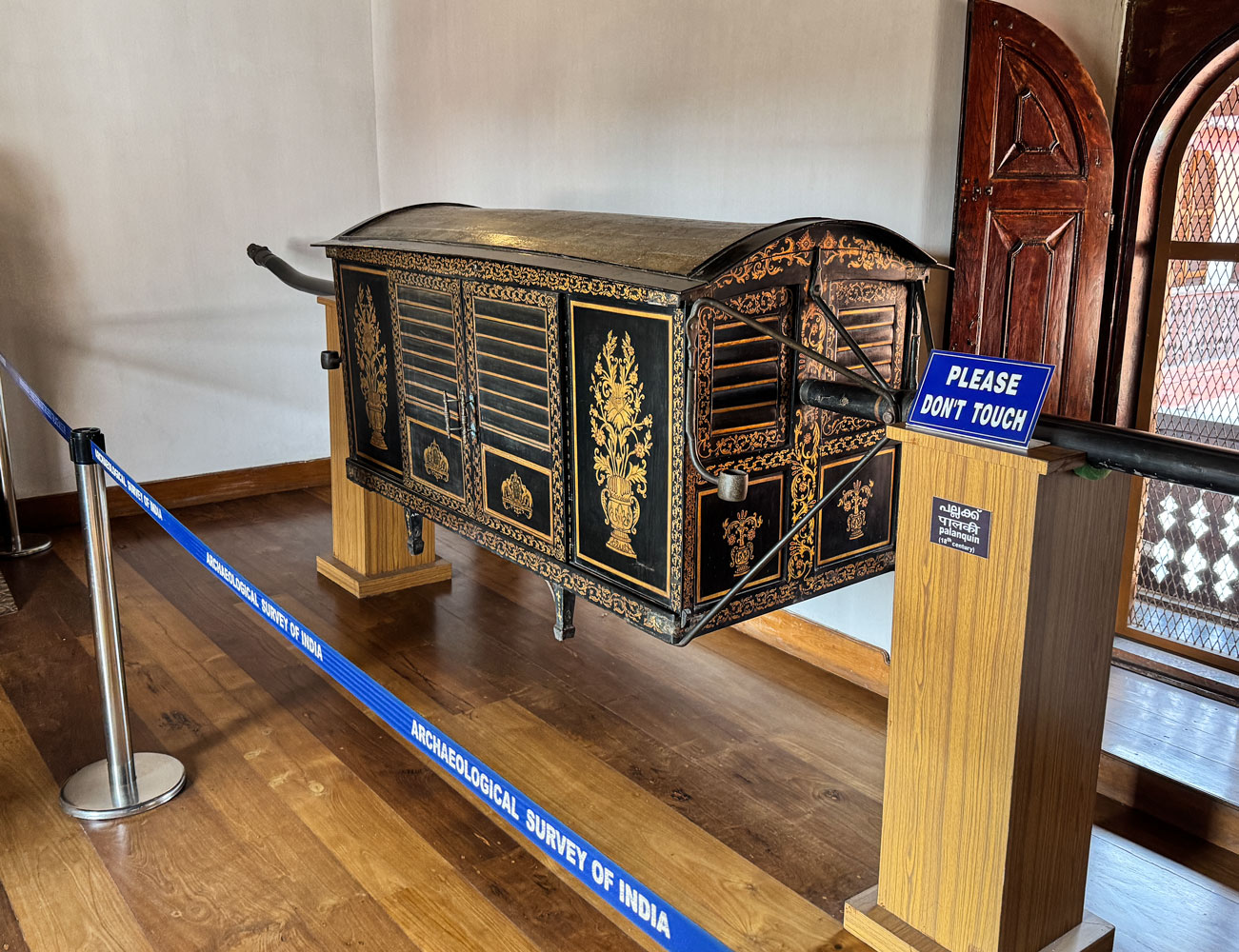
A wall painting. Maybe Shiva?
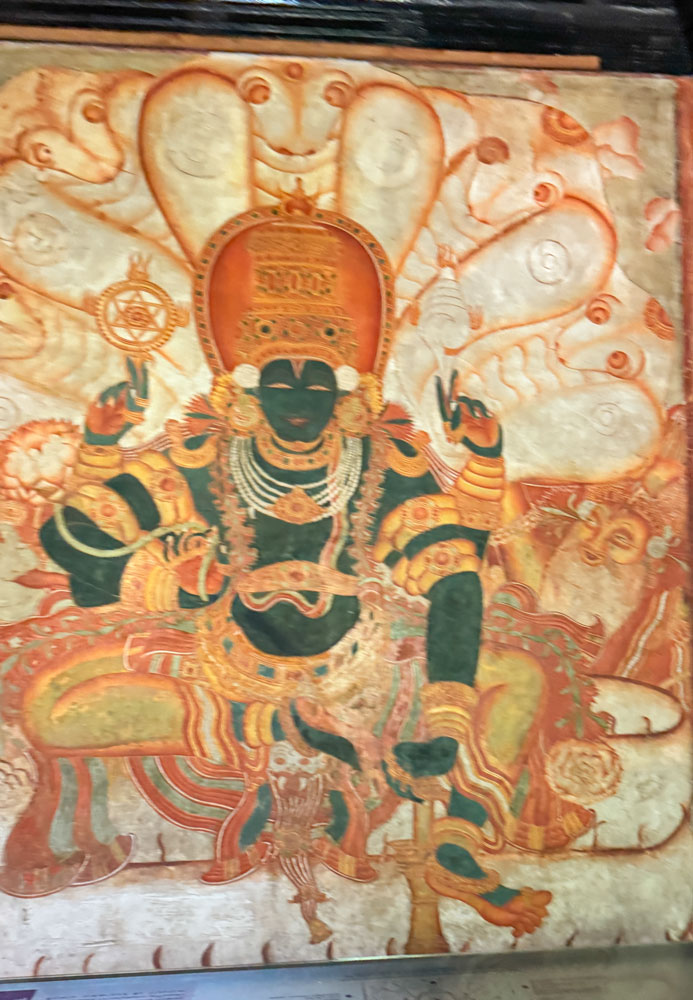
A wall hanging (fabric).
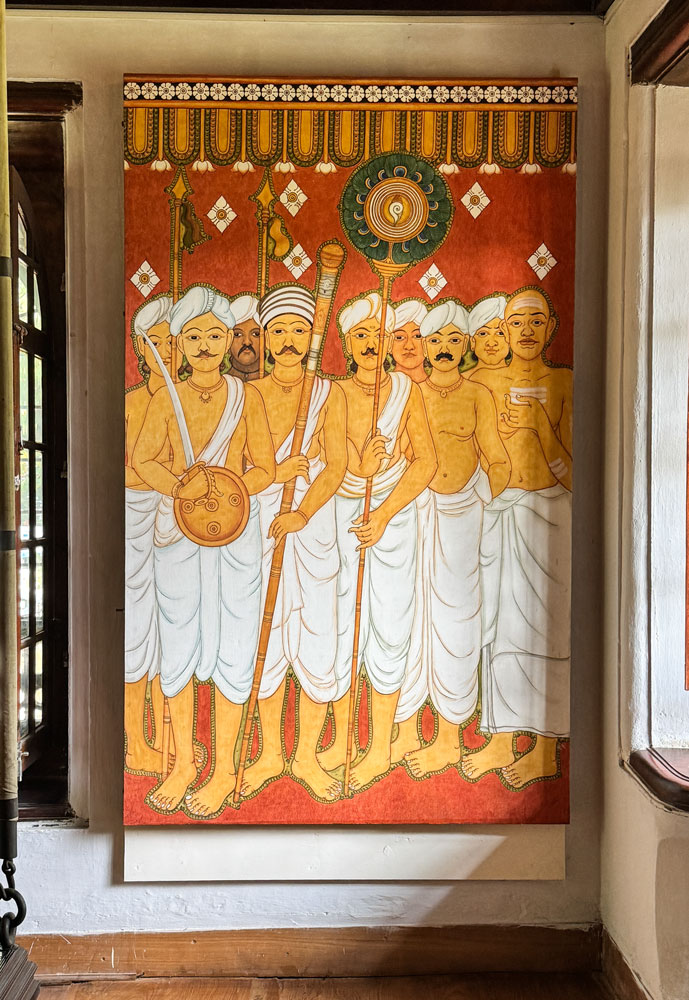
Another one.
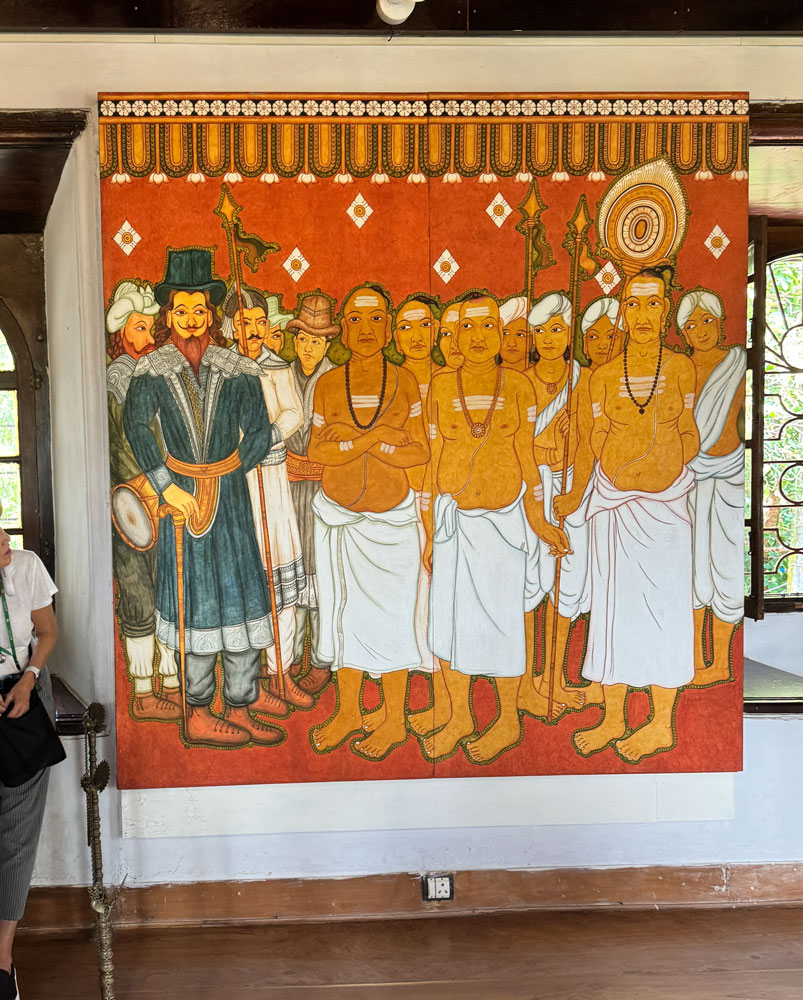
After we left the museum we walked along "Jew Street" to the Cochin Paradesi Synagogue. Yes, that's the real name of the street.
I understand there are only two Jews in Cochin now. All the rest made Aliyah (or died).
One thing that was very unusual was that we had to remove our shoes to enter the synagogue. In this case, it was to protect the old Chinese hand-painted decorative tiles on the floor.

A few views of the inside.
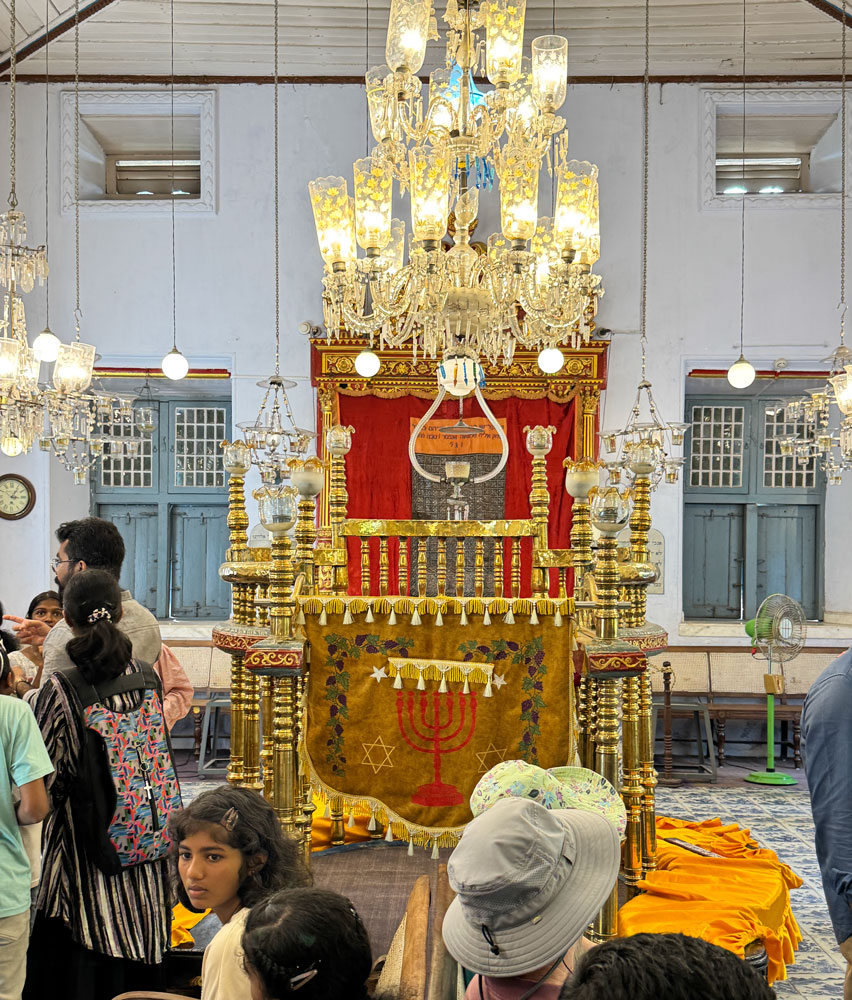
This is the bimah where the cantor stands during a service.
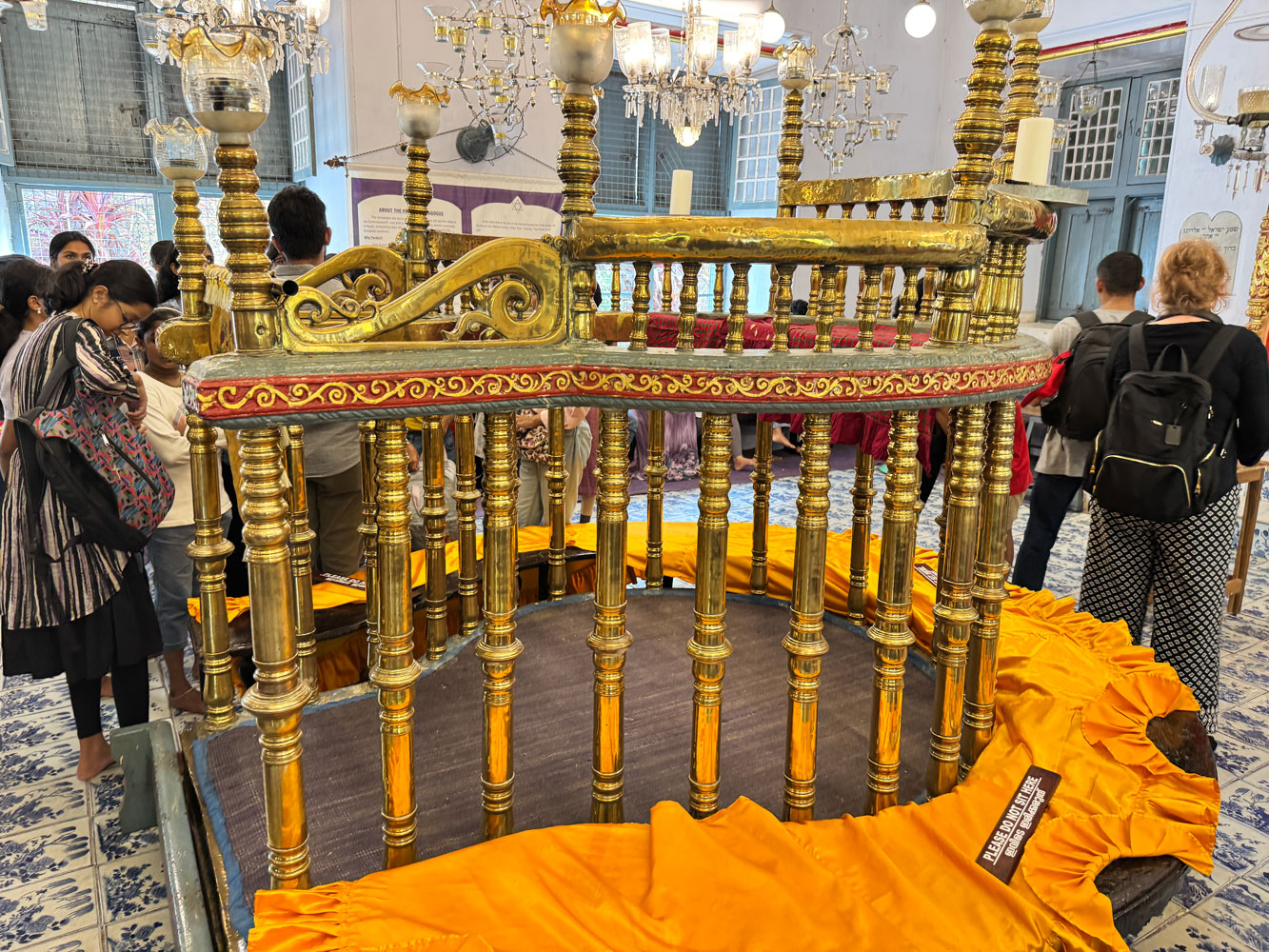
This is where the Torah was kept.
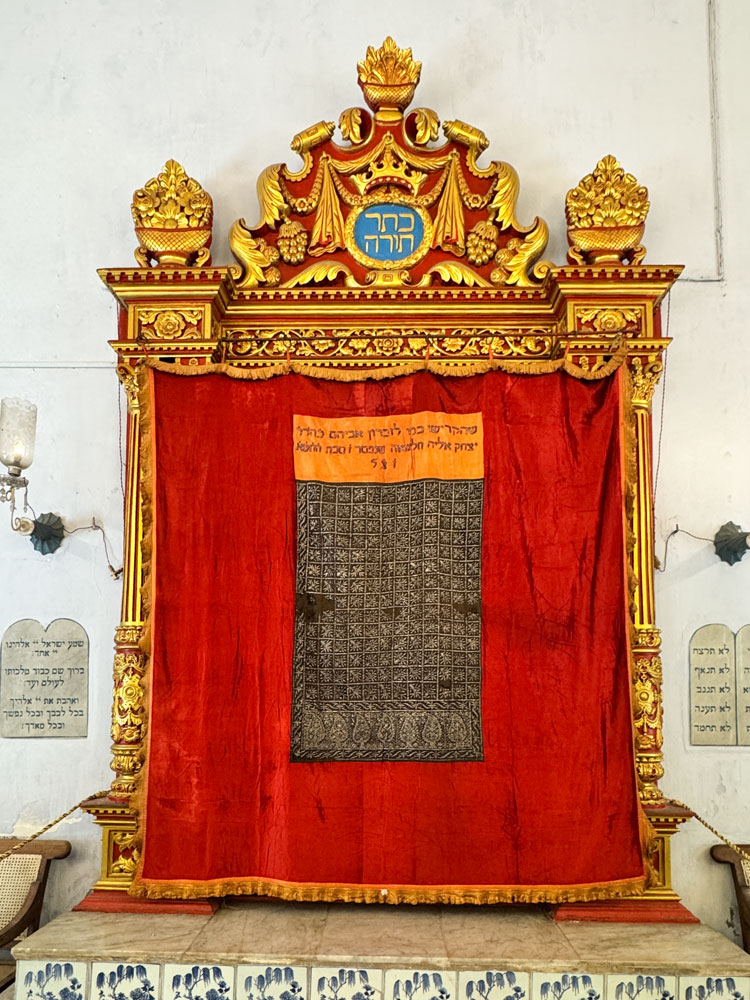
The balcony for women in the rear of the synagogue.
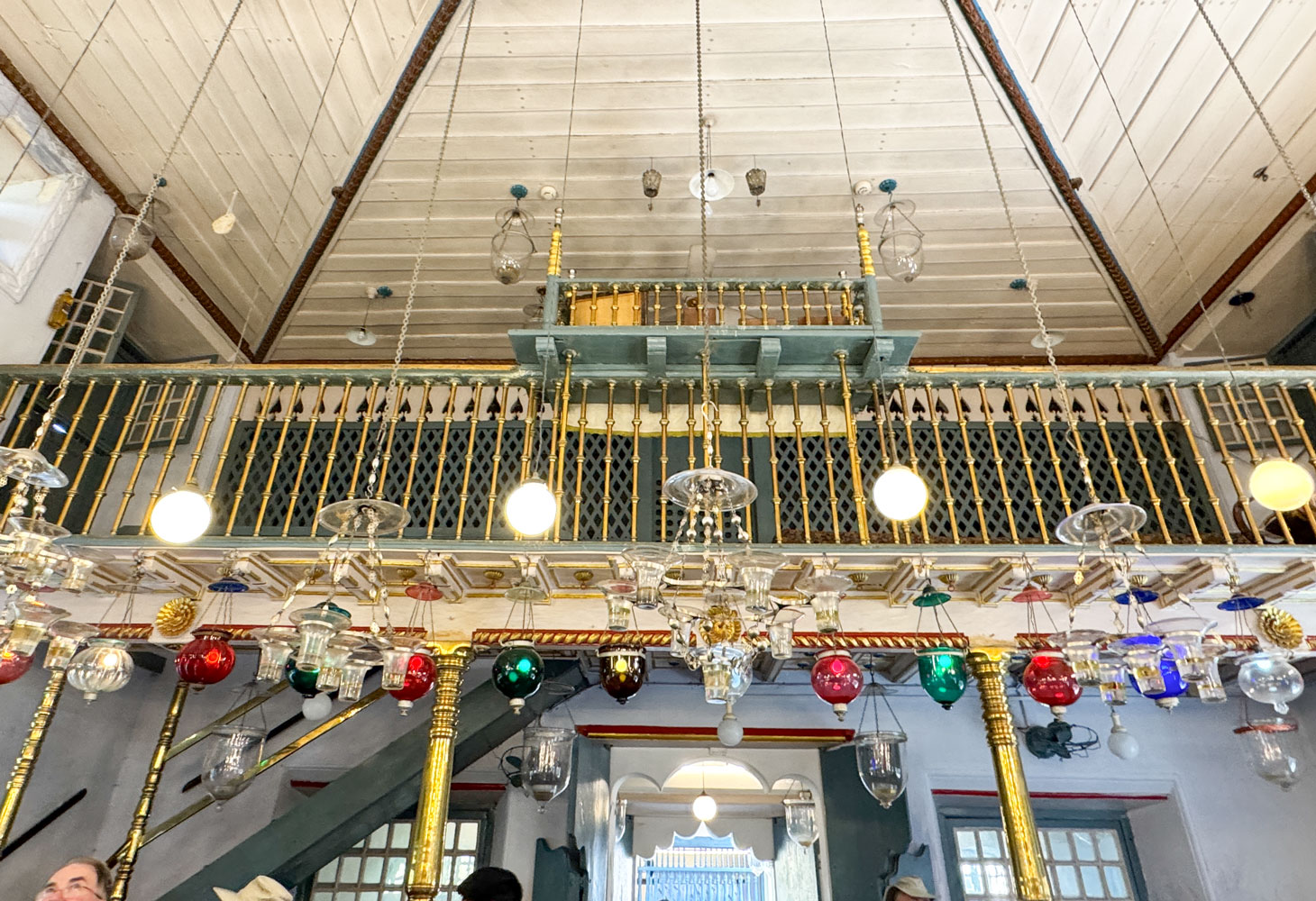
When we concluded our tour of the synagogue - and put our shoes back on - the tour guide wanted to take us to the spice market, but it was hot and I was sweating. Several of us decided to go back to the air conditioned bus.
When the rest of the group returned, the bus took us to Church of St. Francis, Kochi.
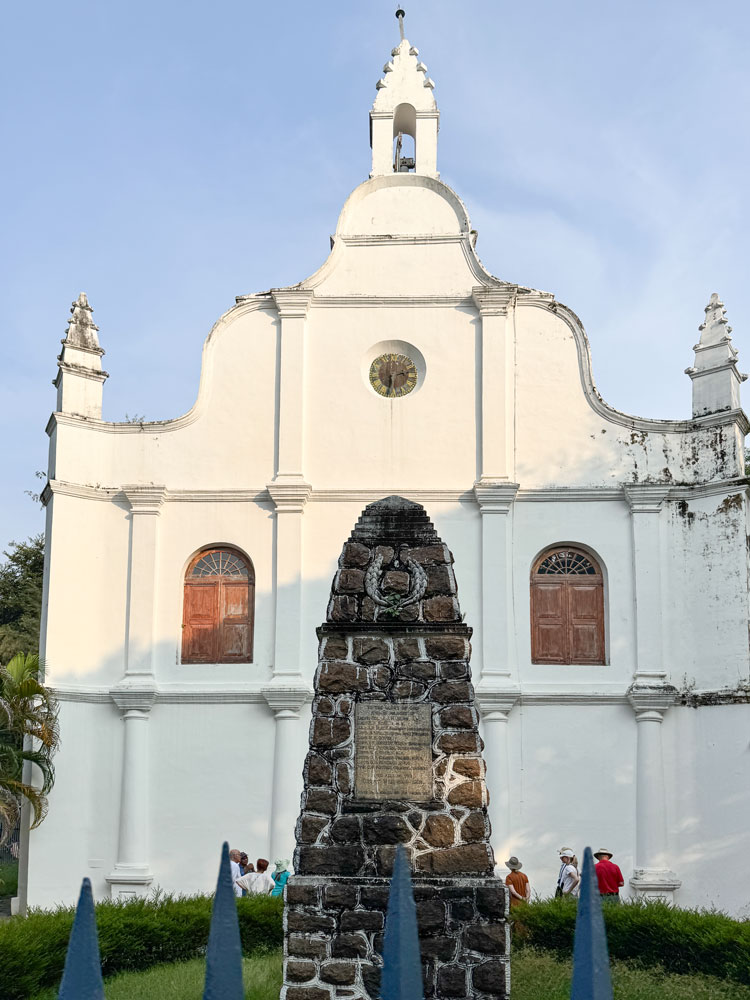
They required that we take our shoes off to enter the main part of the church. I have hiking shoes that I double knot, and was not willing to go through removing them again, so I just took one picture from the back of the church. The interior was quite plain, but it was initially the burial site of Vasco de Gama, who died in 1524. His remains were moved to the Jerónimos Monastery in Belém, Portugal in 1539.
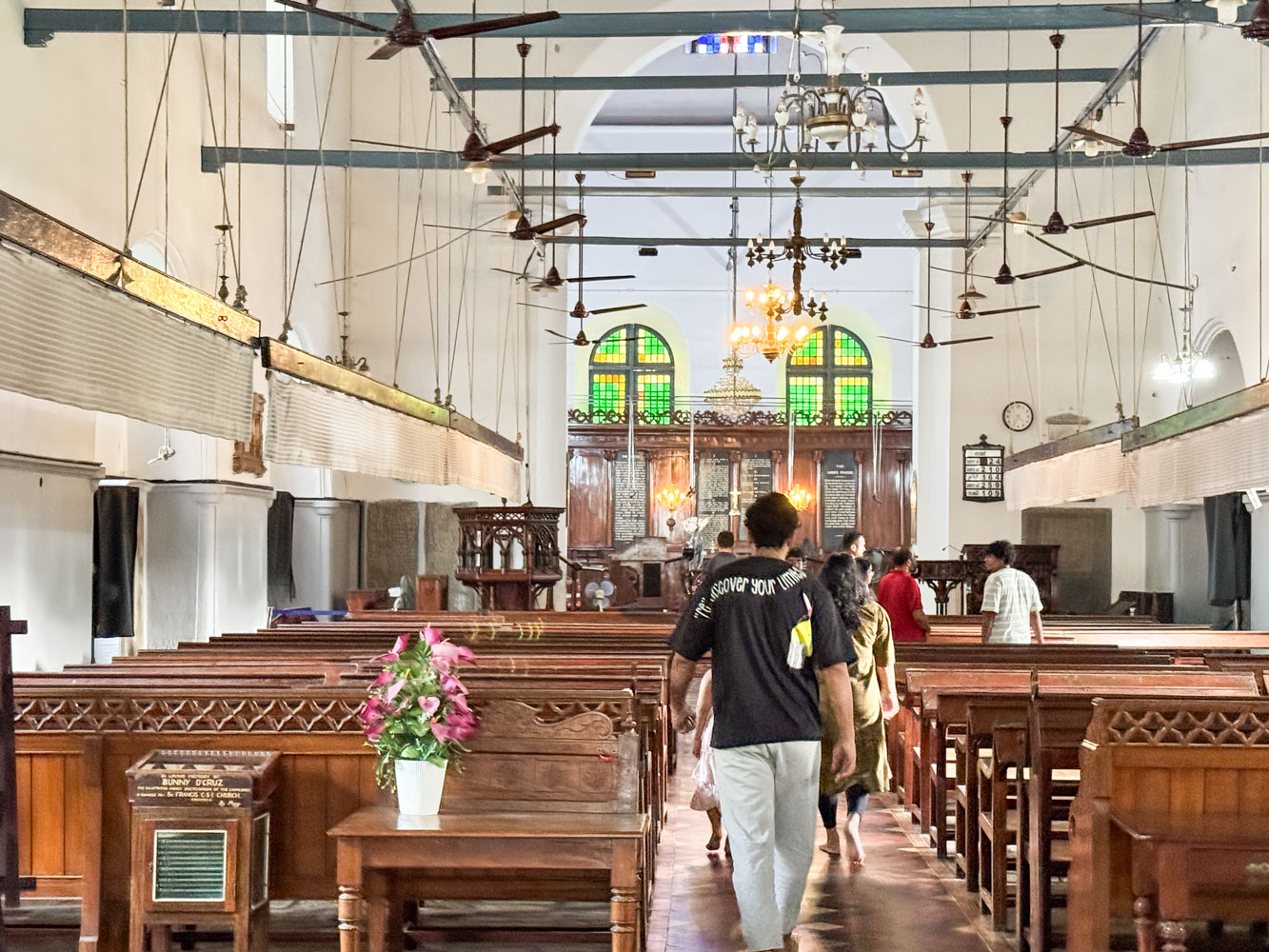
The bus worked its way back to the dock where the boat was waiting for us and we took it back to the hotel. Here it is, pulling into the dock to pick us up.
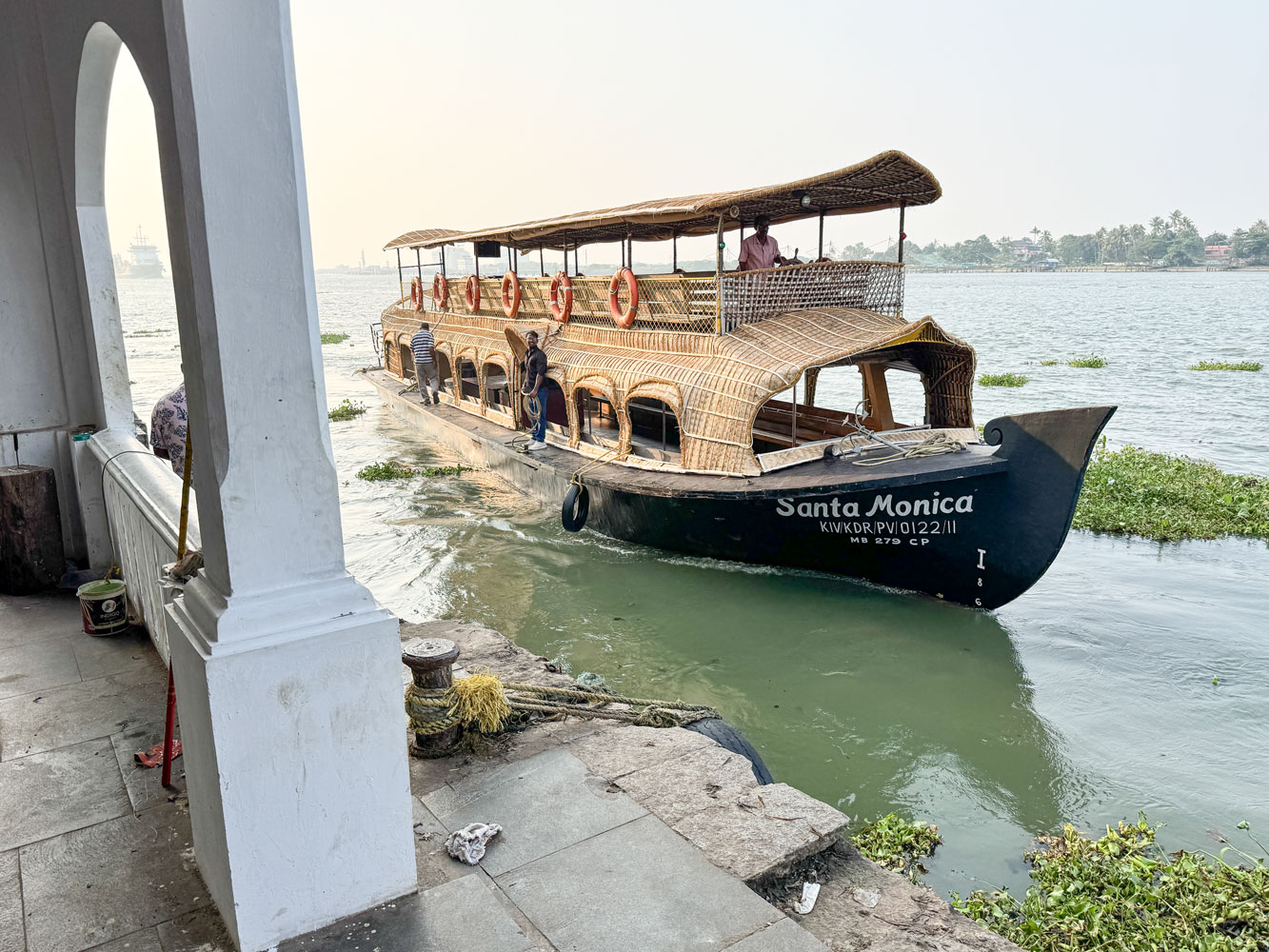
In the evening we had dinner in the restaurant on the roof level. I didn't take any pictures of our table, but Joan and Phil were at the next table and I took a picture of them.

That was our day. It was not all that interesting.
++++++++++++++++++++++++++++++++++++++++++++++
11/1/2024 (Friday, to Kumarakom) Today is a travel day. We had bag pickup at 8:15am, and we left the hotel about 9am. We have a two and a half hour bus ride, and then a two and a half boat ride to Kumarakom, a tourist village.
The bus ride was long but interesting, because India is building an elevated road along the route and I was able to see what they are doing. First, reinforcing rod for the supporting structure. All pictures taken through the window of the bus.
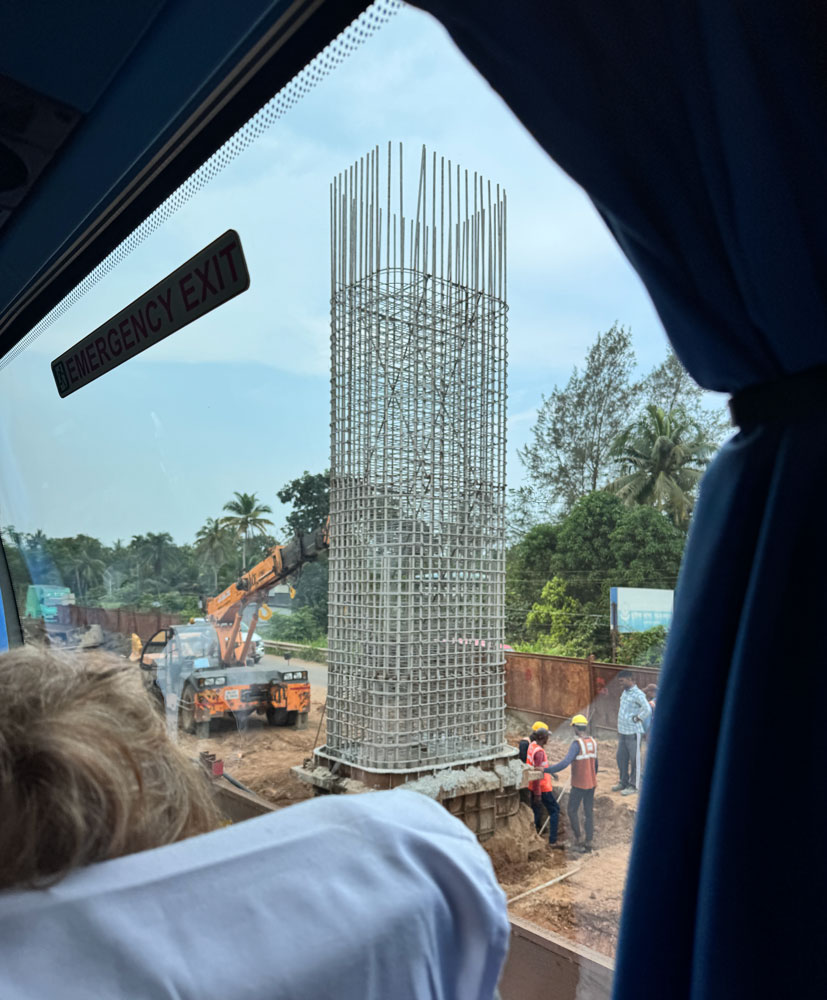
Then they erect the forms and pour the concrete.
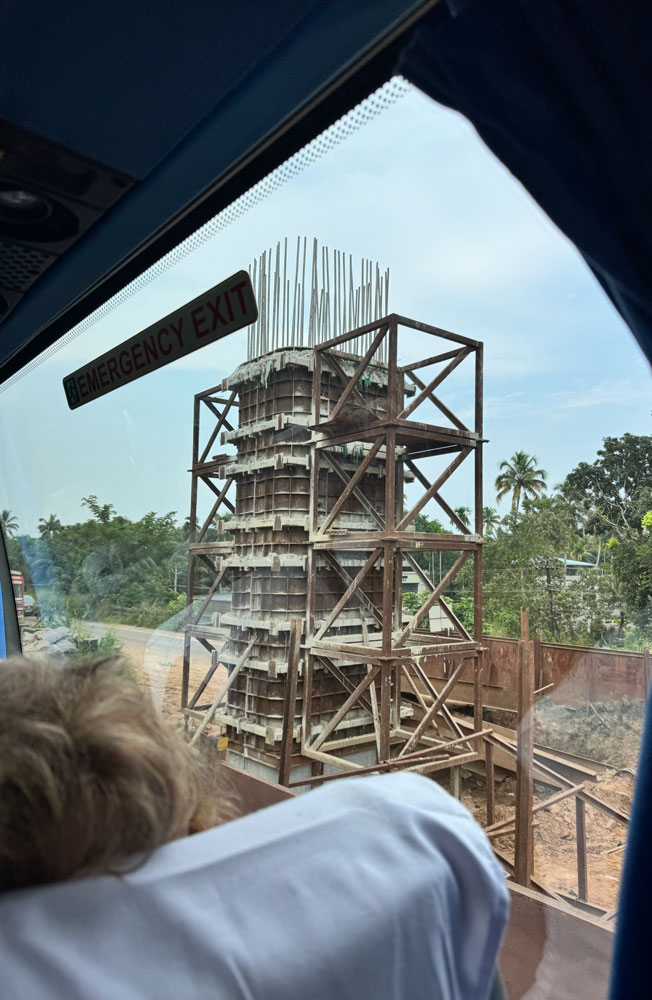
Next they erect forms for the T-top and pour concrete for that.
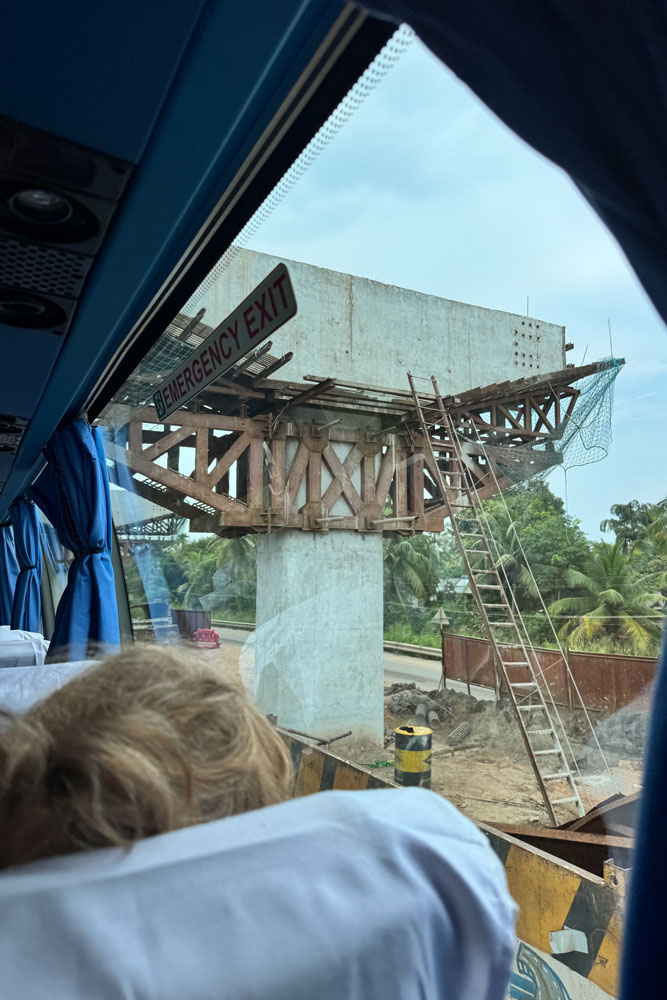
The new road goes on for miles and miles - must cost a fortune. Other than that, the bus ride was uneventful.
Eventually, we arrived at Pallathuruthy which is on the Pampa River
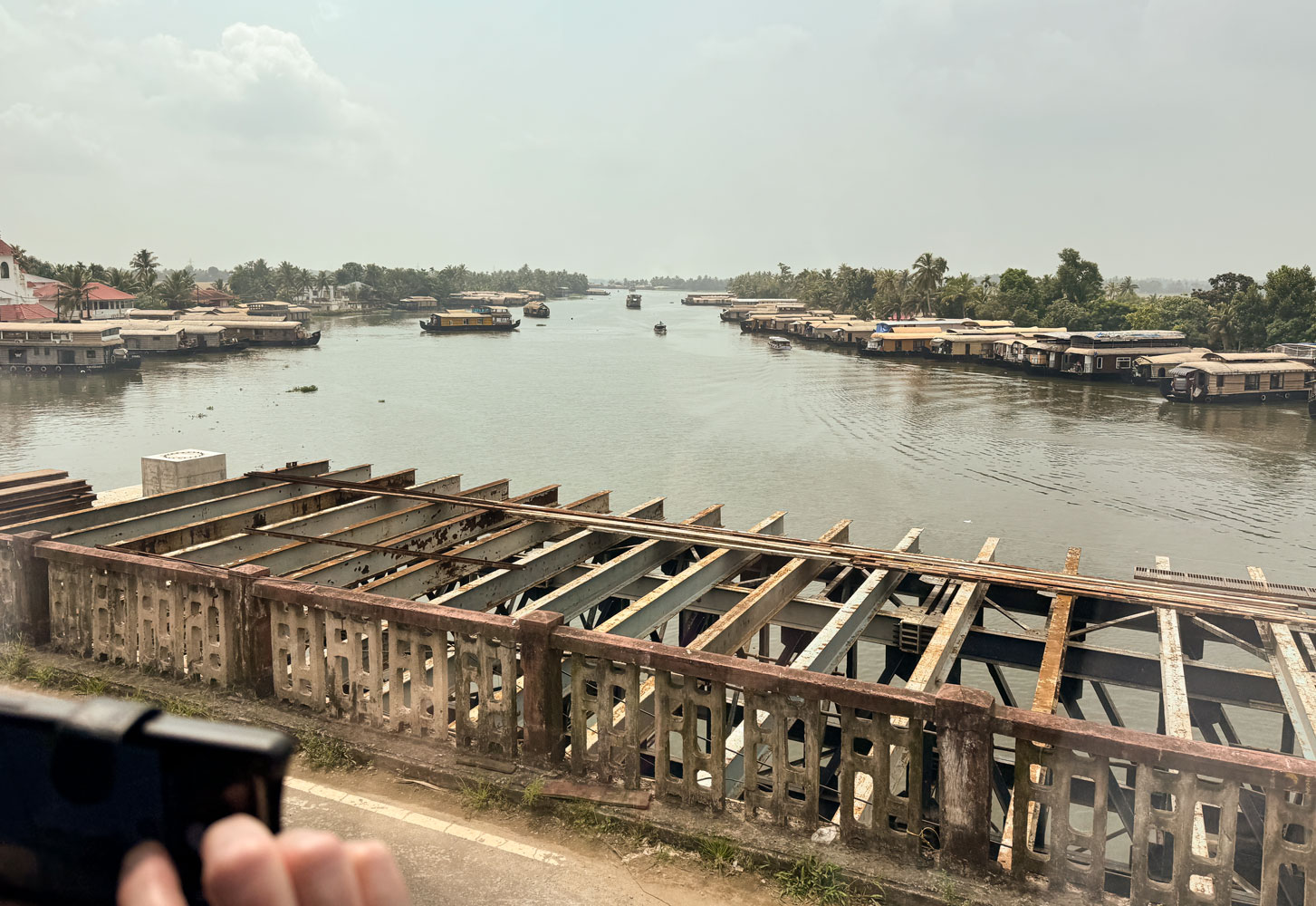
We're boarding a houseboat for the rest of the trip. Here's the boat that some of our group were on. We used two boats. I believe this boat had two sleeping cabins for guests.

Judy boarding ours, on a narrow ledge. It was about 11:20am when we boarded.
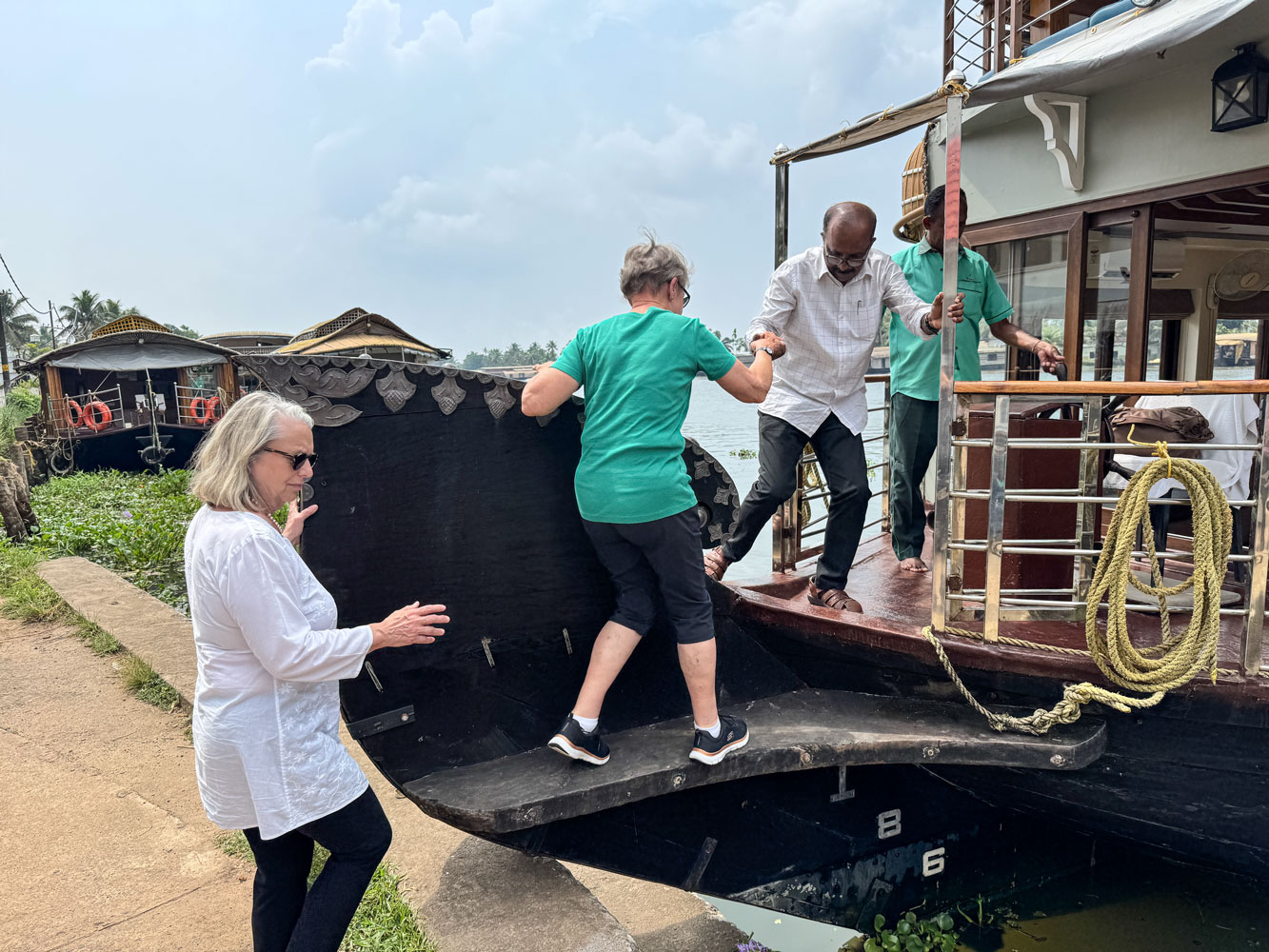
Annie did not come with us. She took the bus to the Kumarakom Lake Resort, with our luggage.
The dining room on the boat. We will have lunch on the boat.
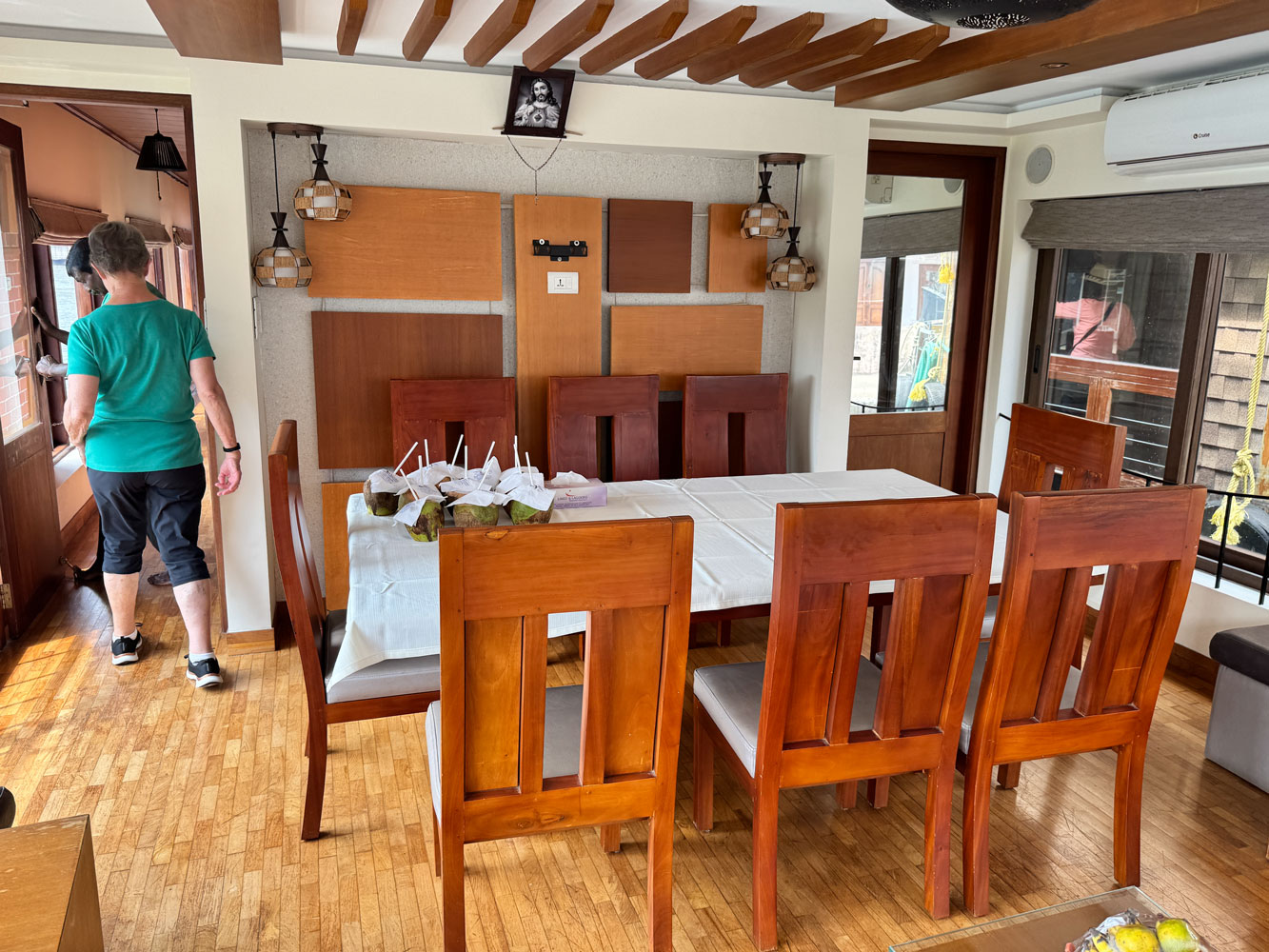
We had to pass under the road bridge as we left the docking area. Here's Judy under the bridge.
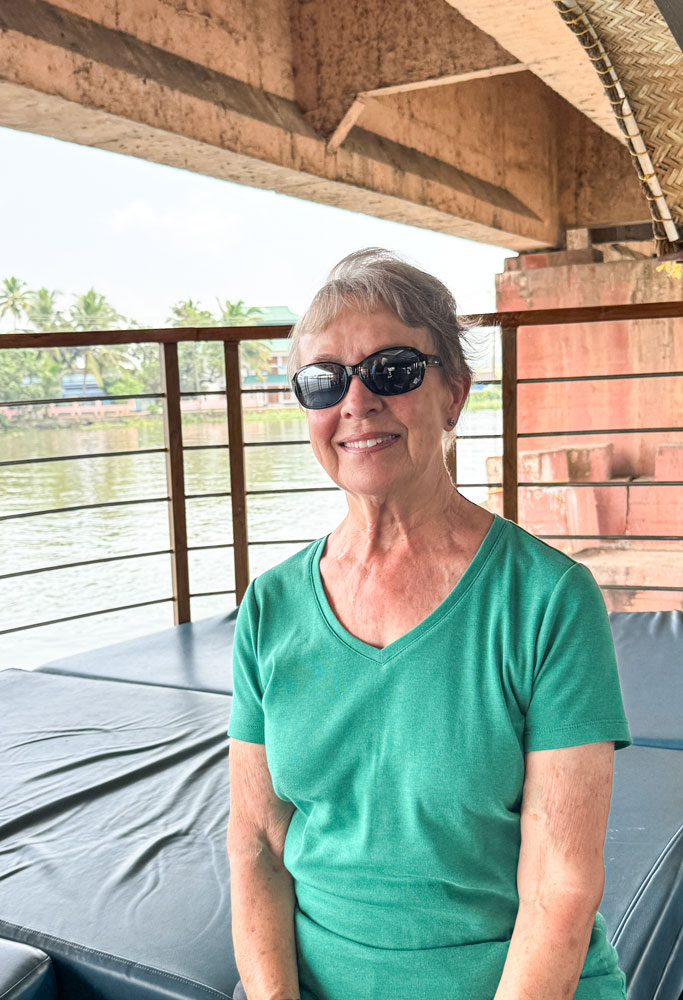
A cargo boat carrying sacks of some produce. Maybe rice. They use an engine with a long shaft, at the end of which is the propeller - exactly like the longtail boats in Thailand.
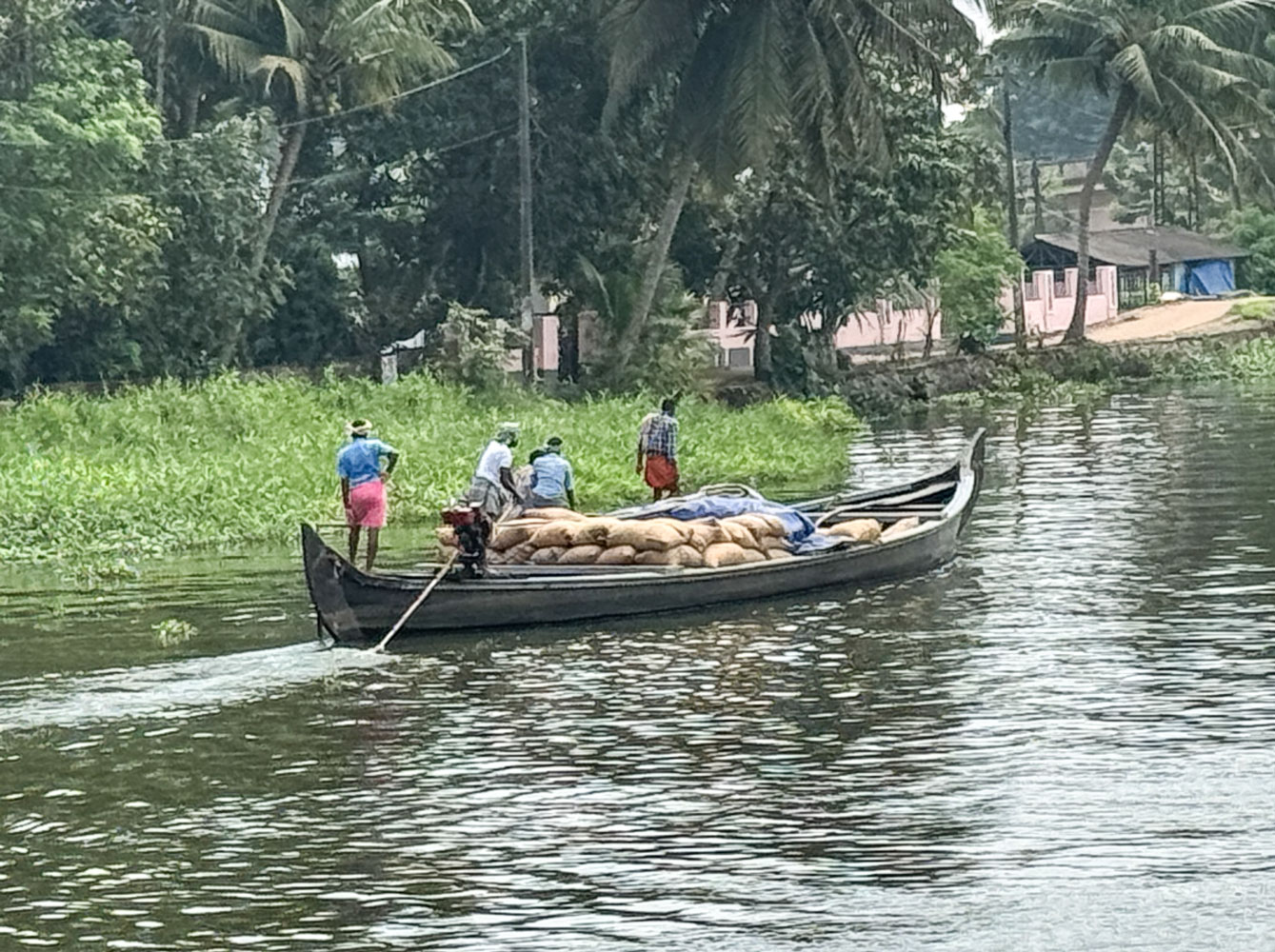
Here are some workers loading another cargo boat.
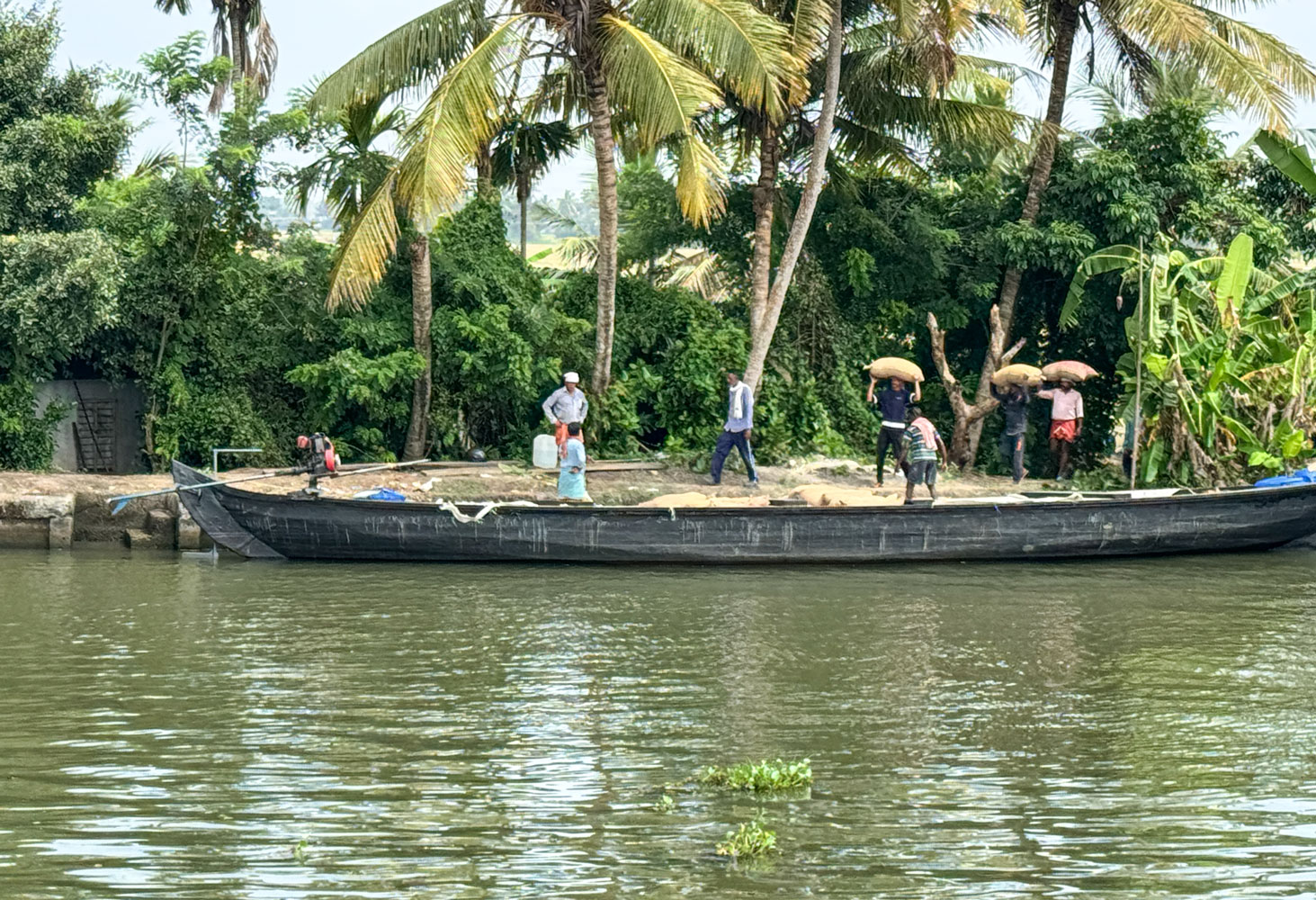
A small fishing boat with an engine with a long propeller shaft. The engine looks about the size of a lawn mower engine.
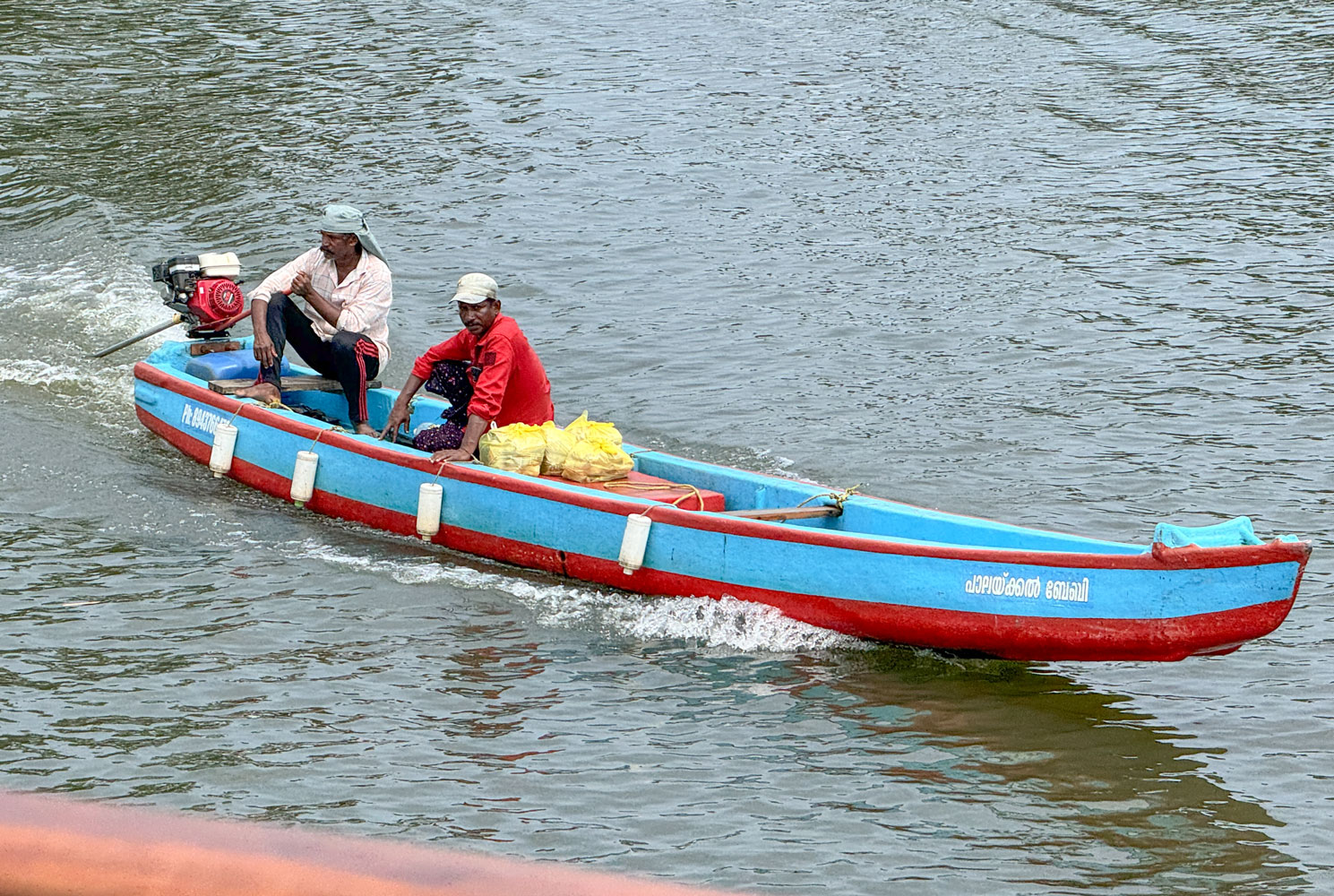
Our boat continued sailing north, eventually entering Vembanad Lake.
About 12:30pm the crew started bringing out food for us. They actually brought out more after I took this picture. Also Kingfisher beer and soft drinks.
It's all Indian food and some of it was fairly hot (spicy).
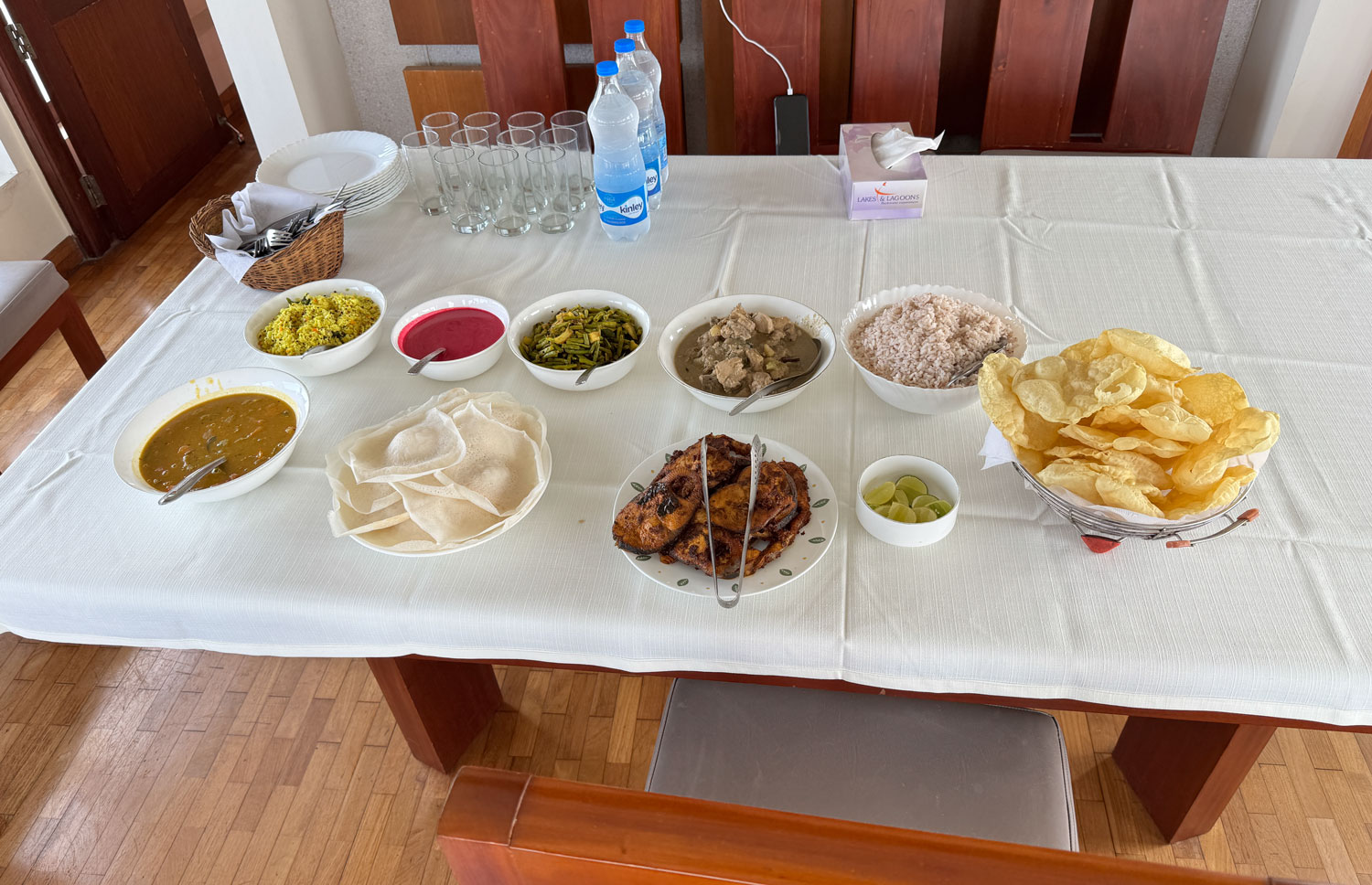
Some of our group enjoying lunch.
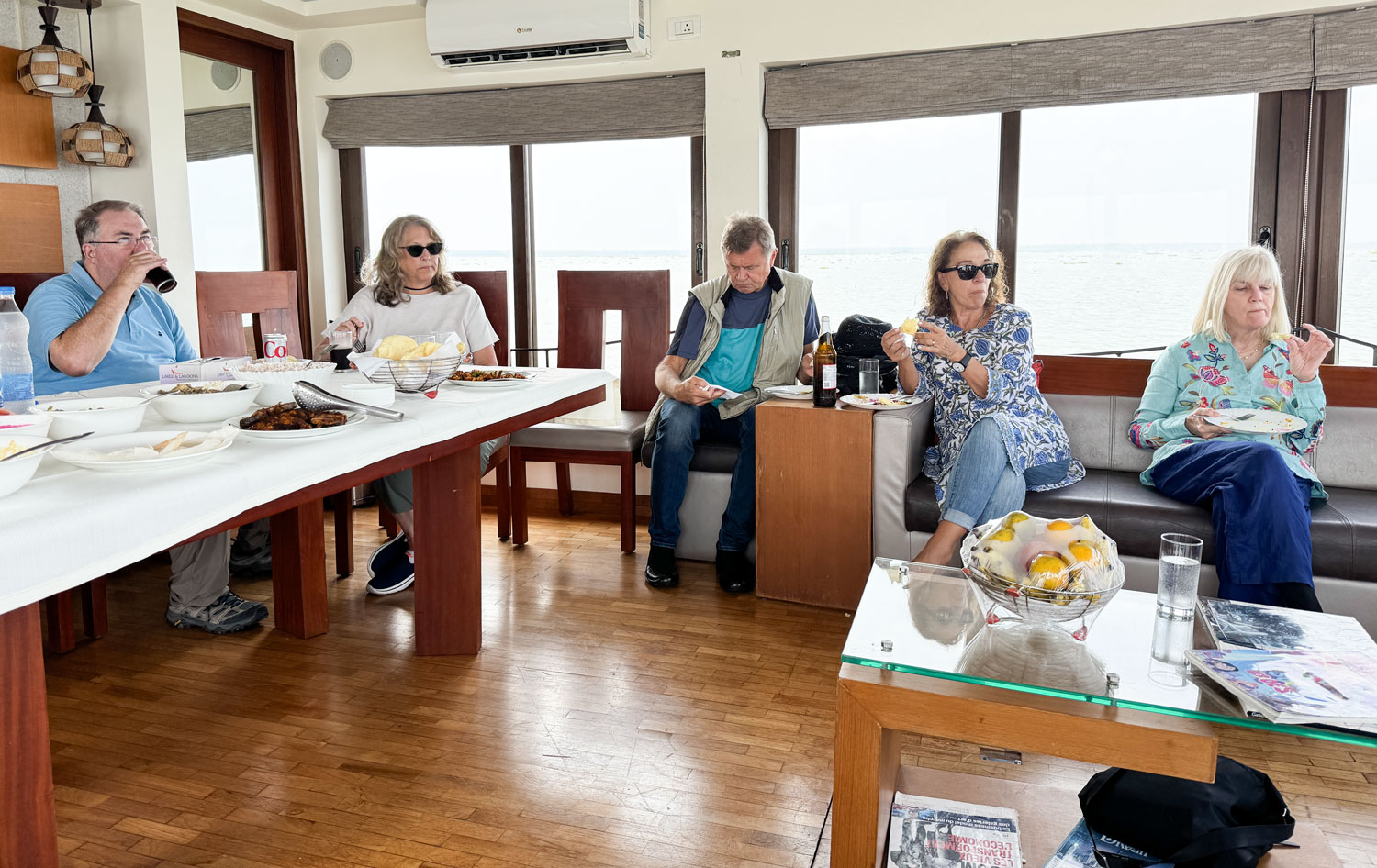
About 2pm we arrived at the Kumarakom Lake Resort. We're going to land next to the boat that's already there.
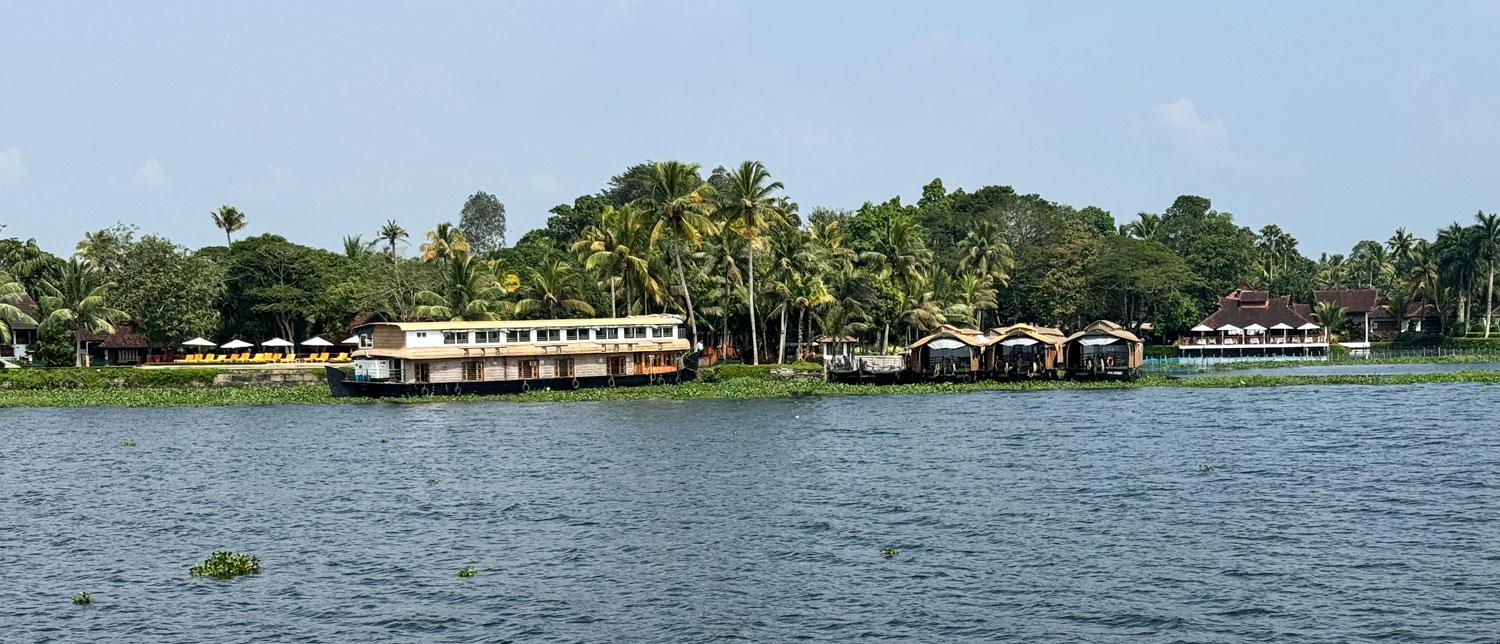
Although we arrived by boat, I'll include this picture of the automobile entrance.
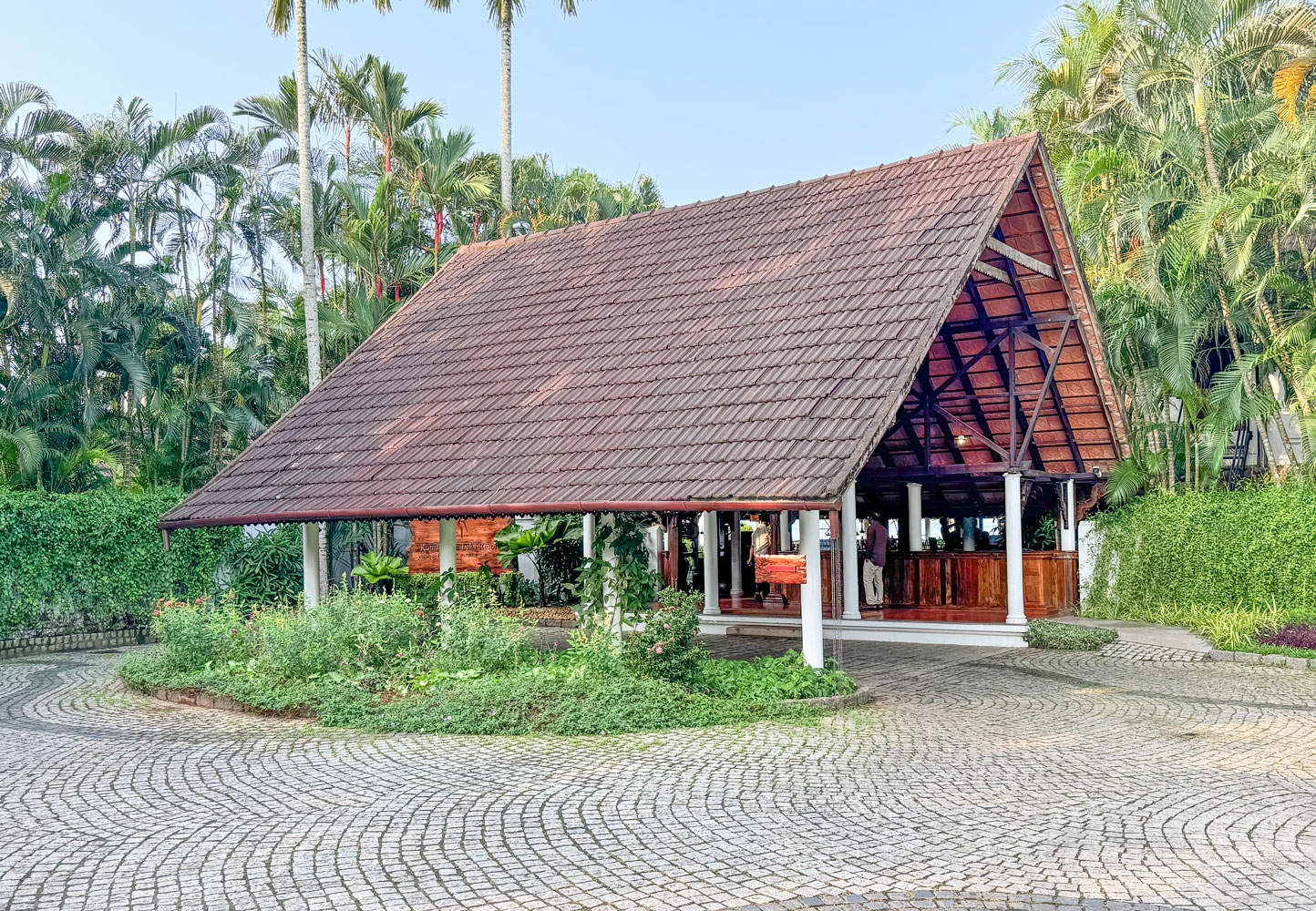
Their sign.
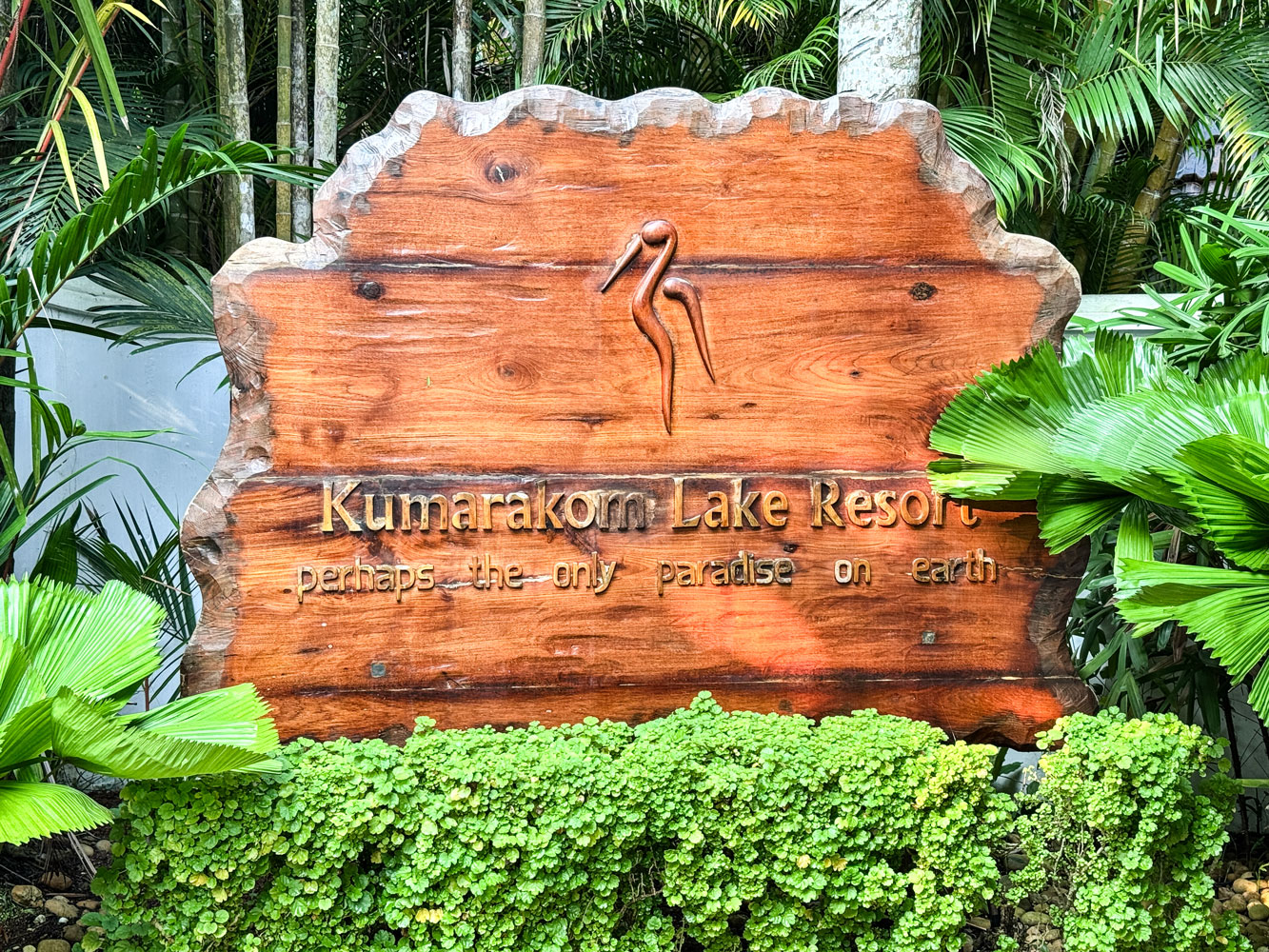
We went through the usual greeting and key distribution, and then went to our rooms. Here's ours.
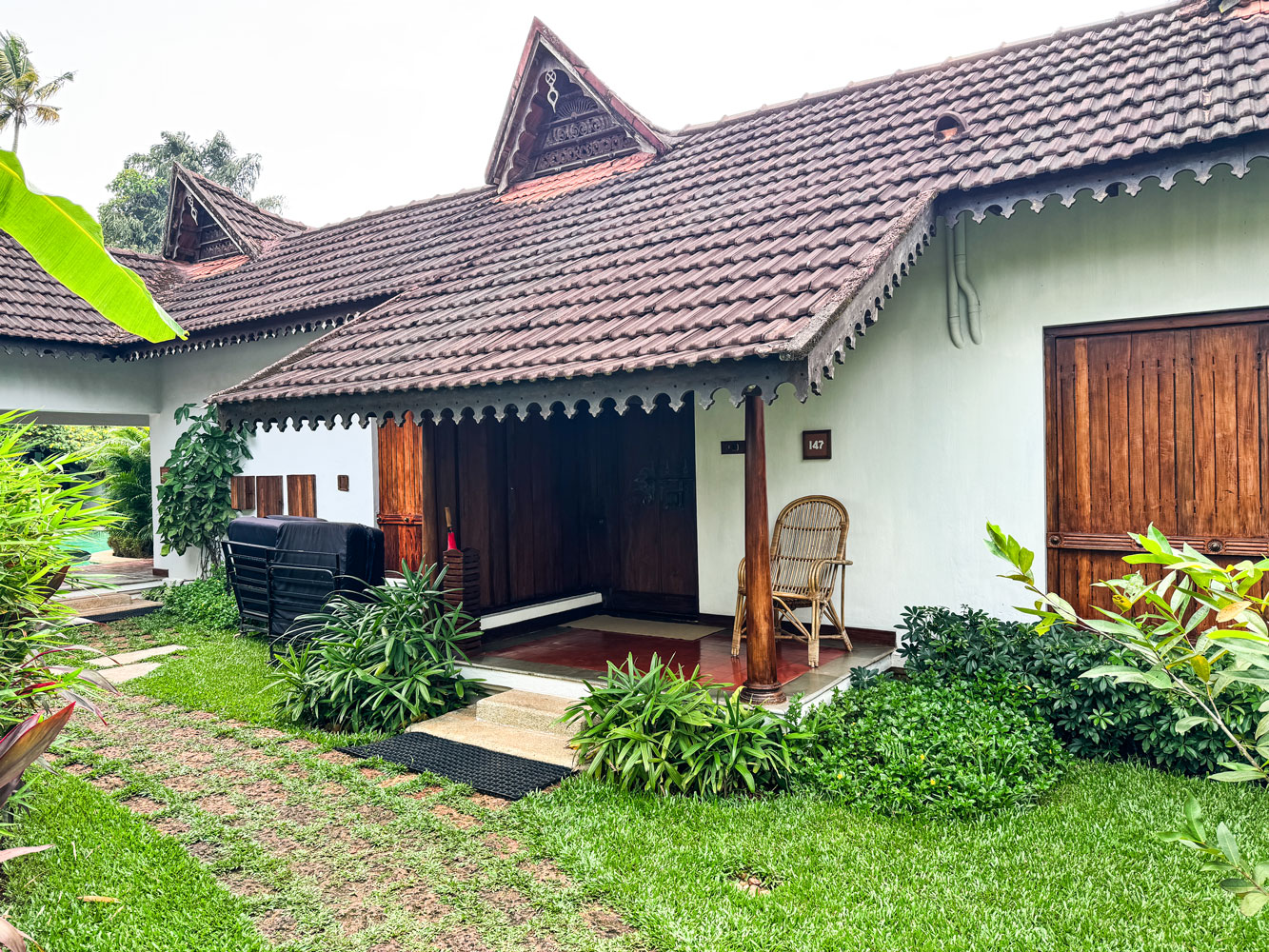
The interior of our room. It's adequately large and has most of the amenities, but no coffee maker - just that invention of the devil, the French press. The glass doors open onto the pool.
Internet access is very good, almost 50Mbps down and about 13Mbps up. The other hotels we stayed in seemed to limit each guest to about 10Mbps down. Now that people are streaming movies, I suppose they need to limit how much is allocated to each guest.
India has a very good Internet infrastructure.

The bathroom is in an enclosed courtyard attached to the cabin. Most of it is covered, except the shower. This area must never get any cold weather or they couldn't do this. It's the same as a bathroom in a hotel suite, except it's open air, and not air conditioned. I heard that mosquitoes are a problem after dark but didn't have any problems. The shower head is on the right, and the toilet is on the other side of the low wall.

Later, Judy caught me using the shower.
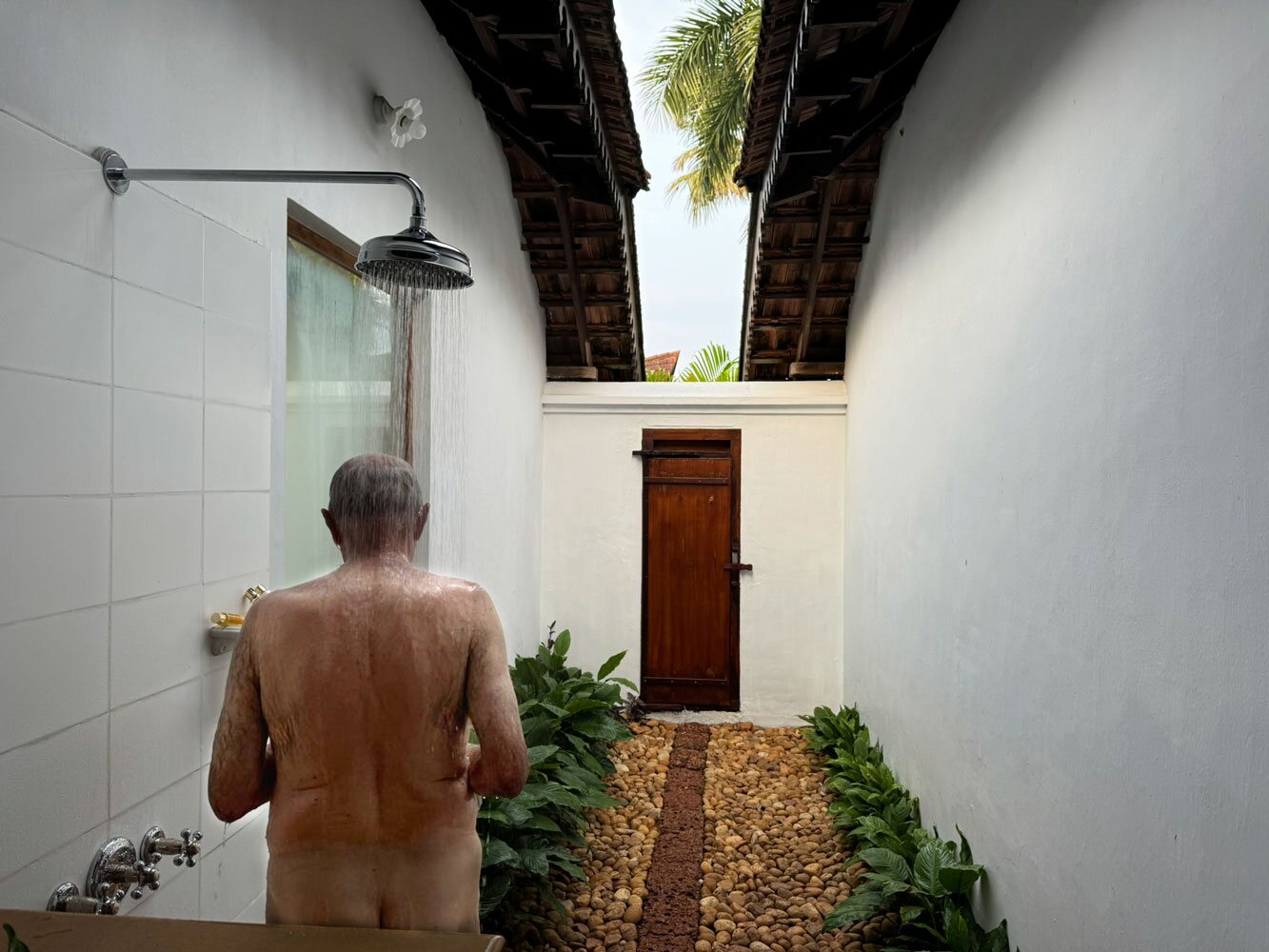
The door at the end opens to the meandering pool, which wanders past each room. They gave us a "key" for the room, but it's really not a key.

If you look at the end of the key, there are no cuts in the tab as a real key would have. It's just a tab. That means anyone's key will open any door. Because of that, we never locked the door - it would be meaningless.
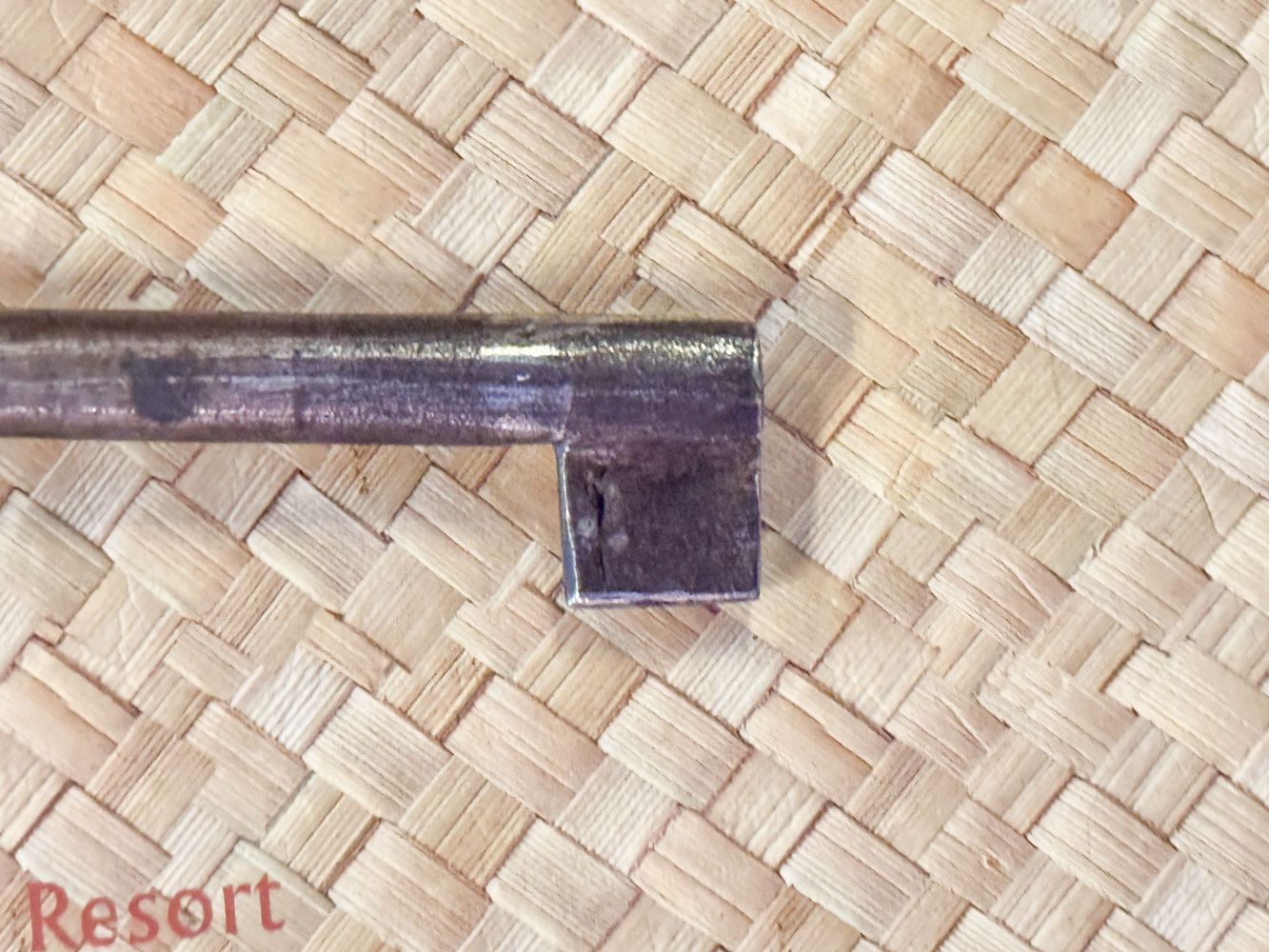
Judy went for a massage at 3pm while I stayed in the room and worked on this blog.
At 6:15pm we joined the group for dinner and a dance presentation.
Here are a few pictures of the dancers.
This was her posture at the beginning of the dance.
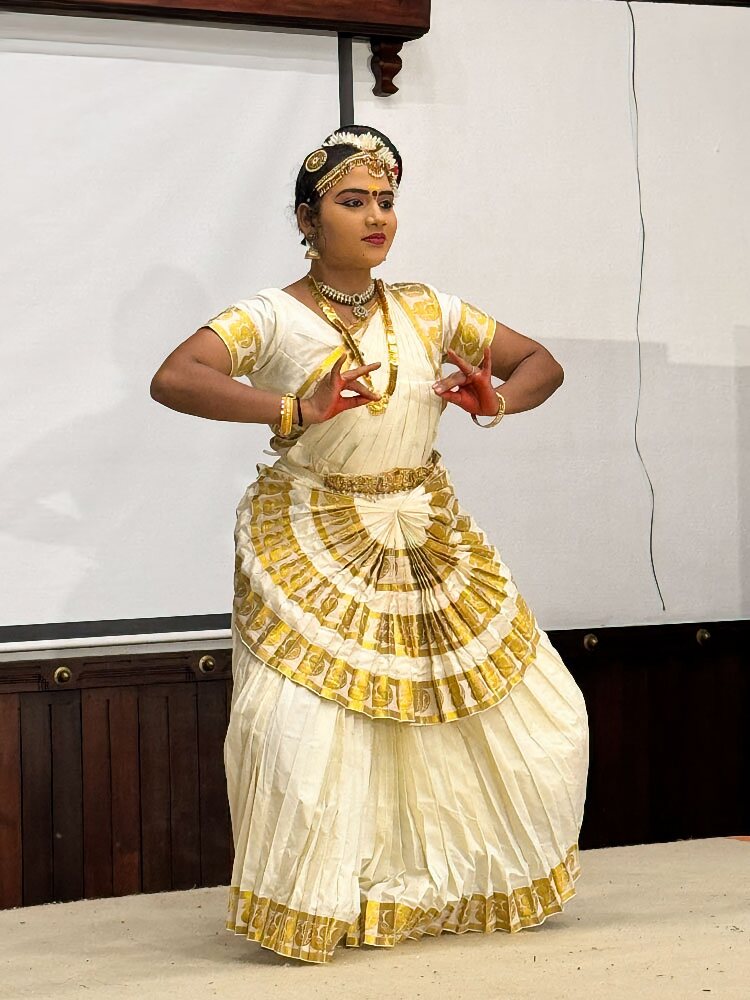
And a close-up of her.
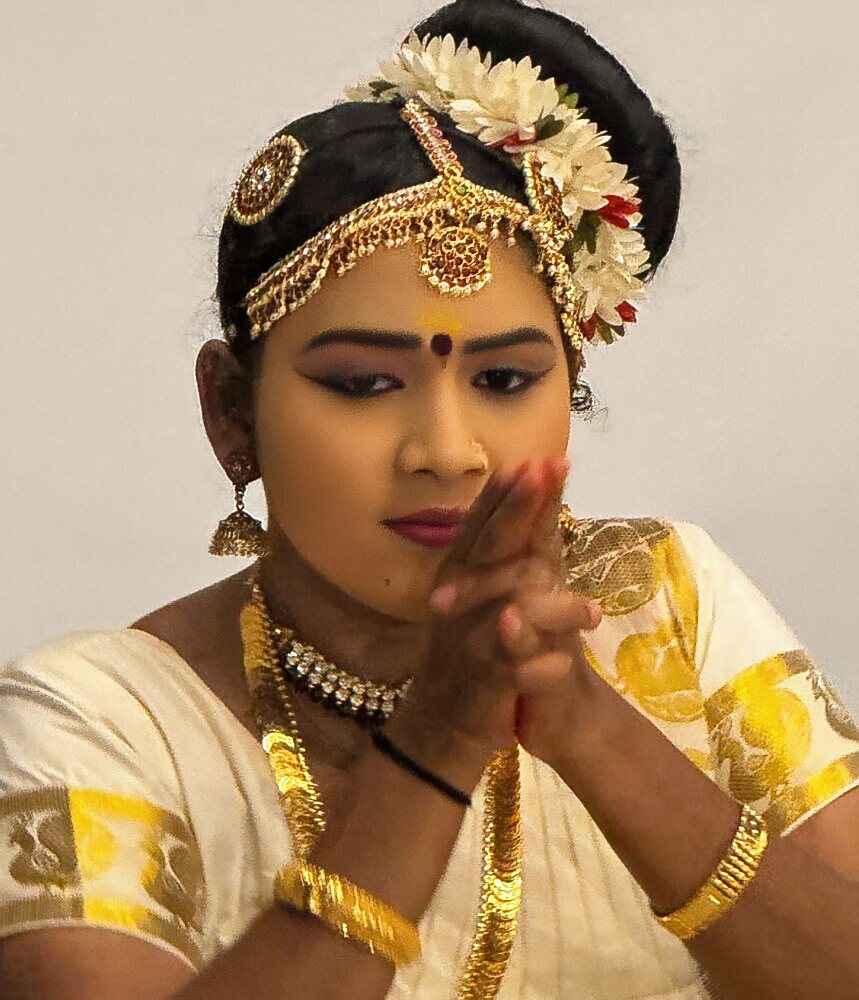
And the other dancer.
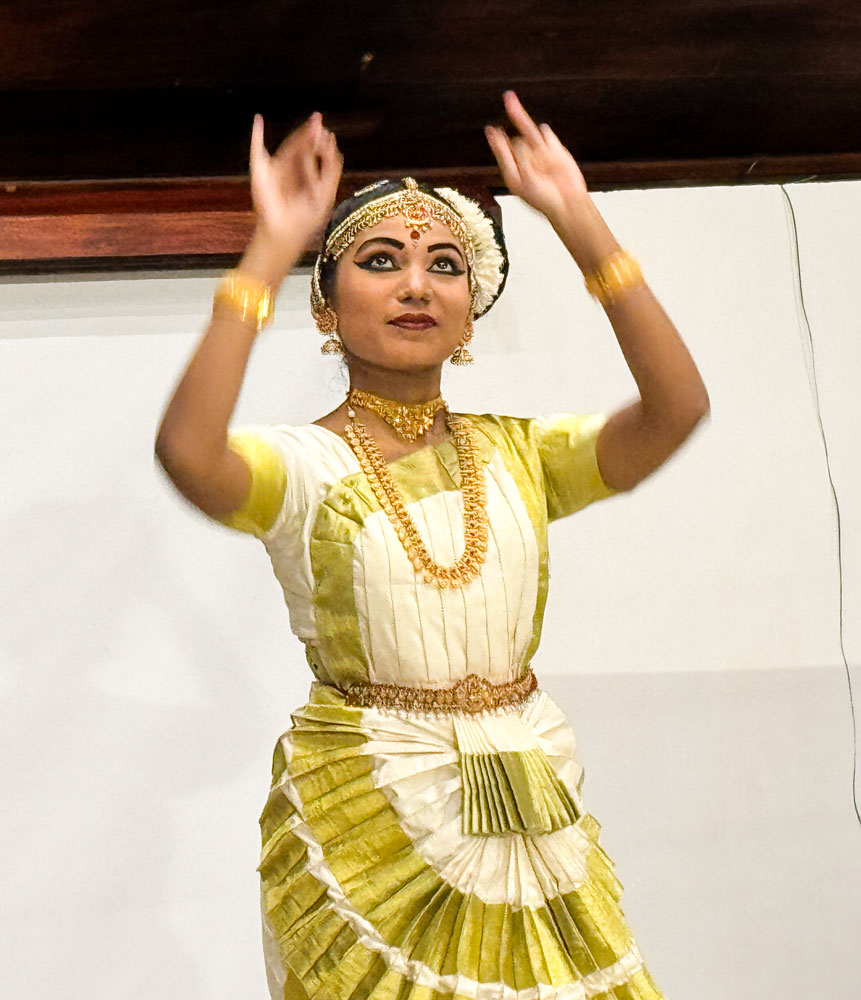
A close-up of the second dancer.
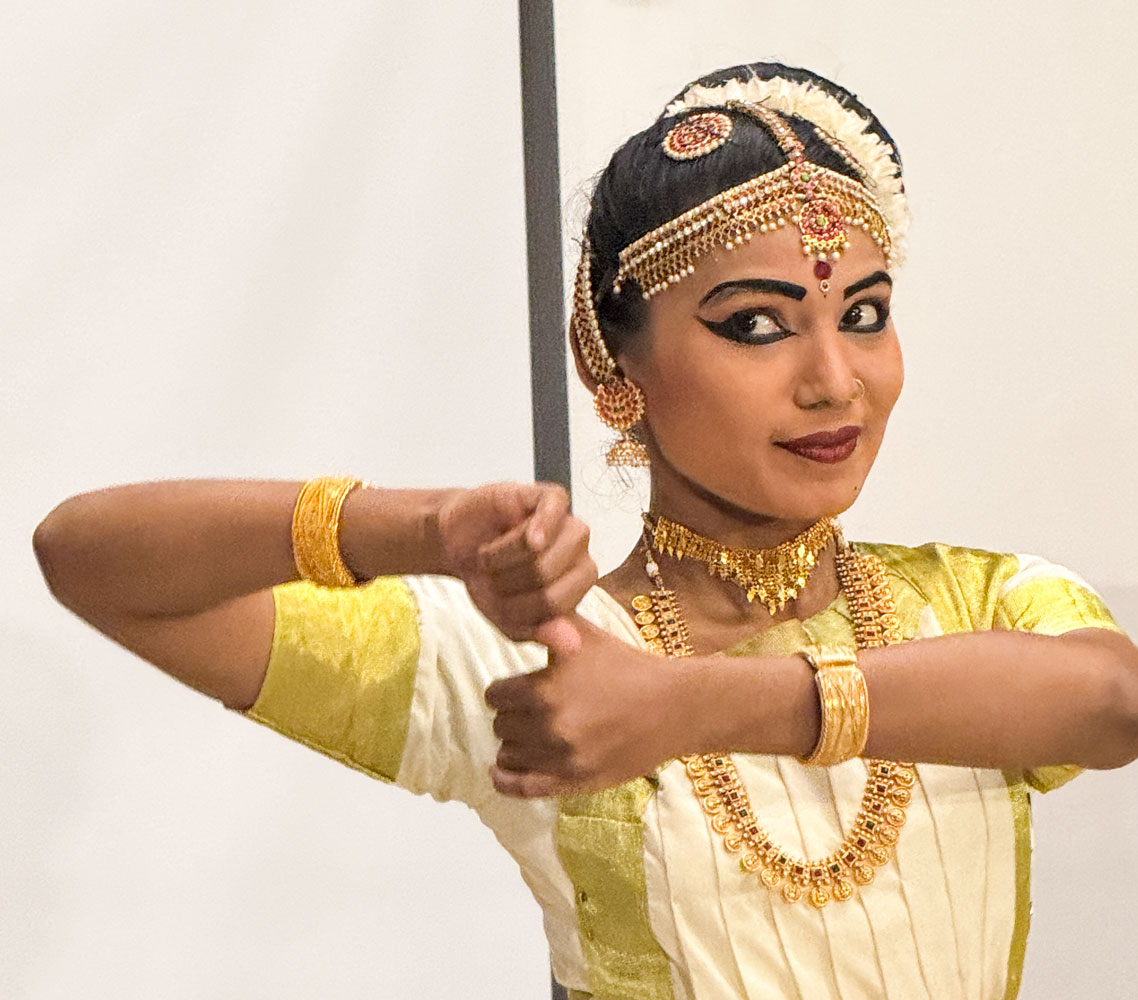
Then the two of them performed a duet.

After the dance presentation was complete, dinner was served.
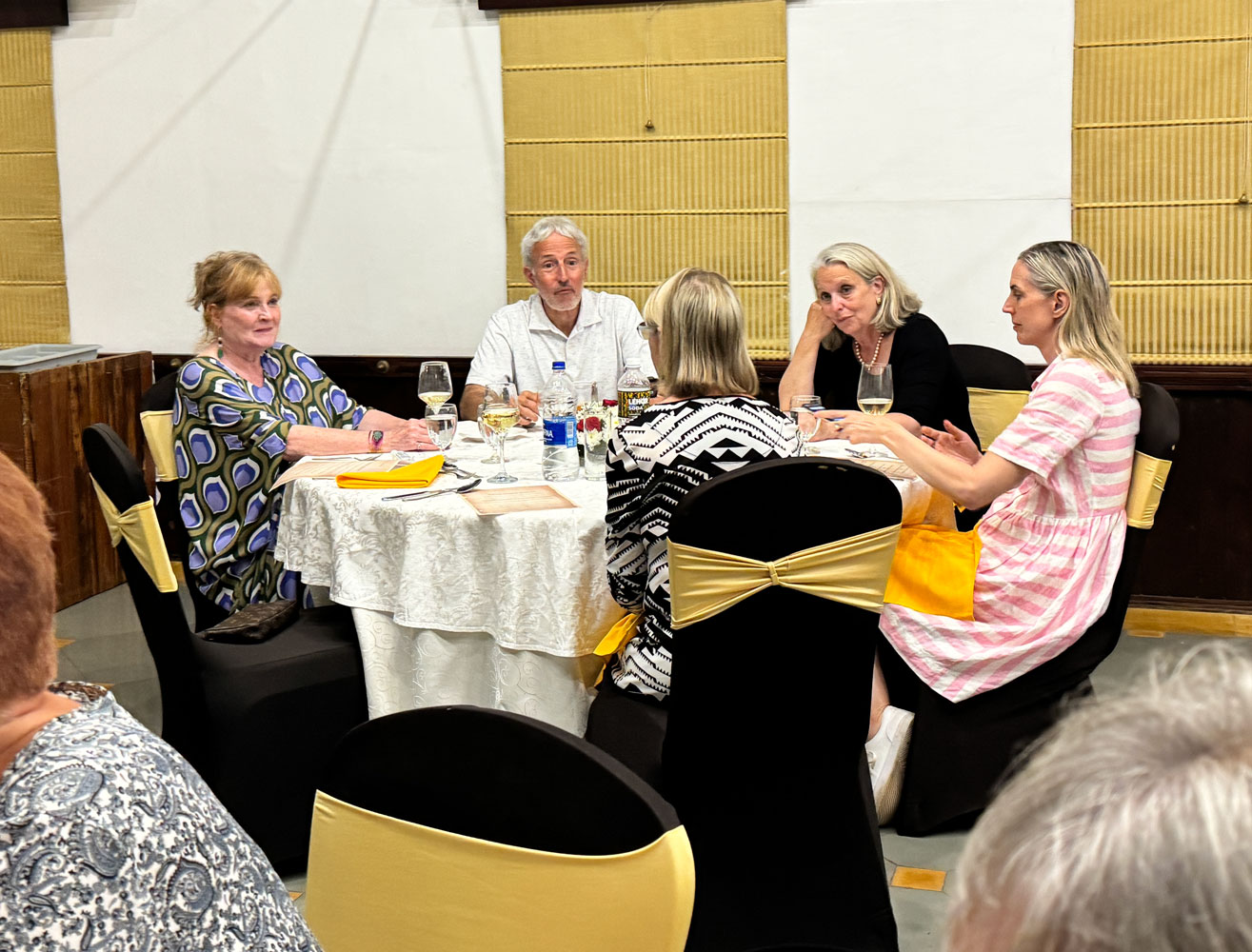
That was our day.
++++++++++++++++++++++++++++++++++++++++++++++
11/2/2024 (Saturday, Kumarakom) We don't have a lot on the agenda today. We'll visit some local people to see how they live, and be back to the hotel about 10am, in order to avoid the hottest part of the day.
After breakfast, we gathered in the lobby at 8am and went out to board the tuk-tuks they had waiting for us.
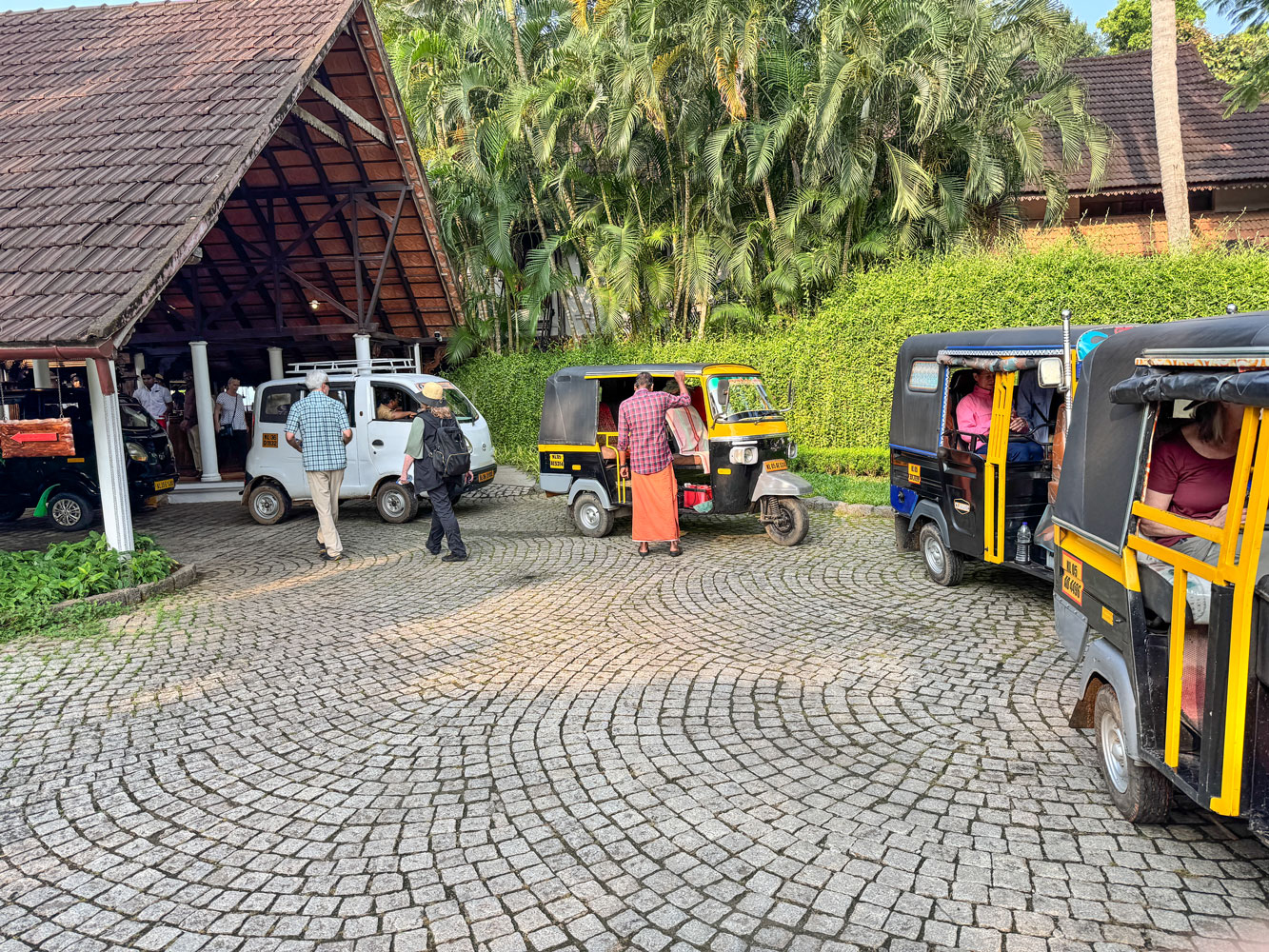
The tuk-tuks took us to a boat and we had to "walk the plank" to board.
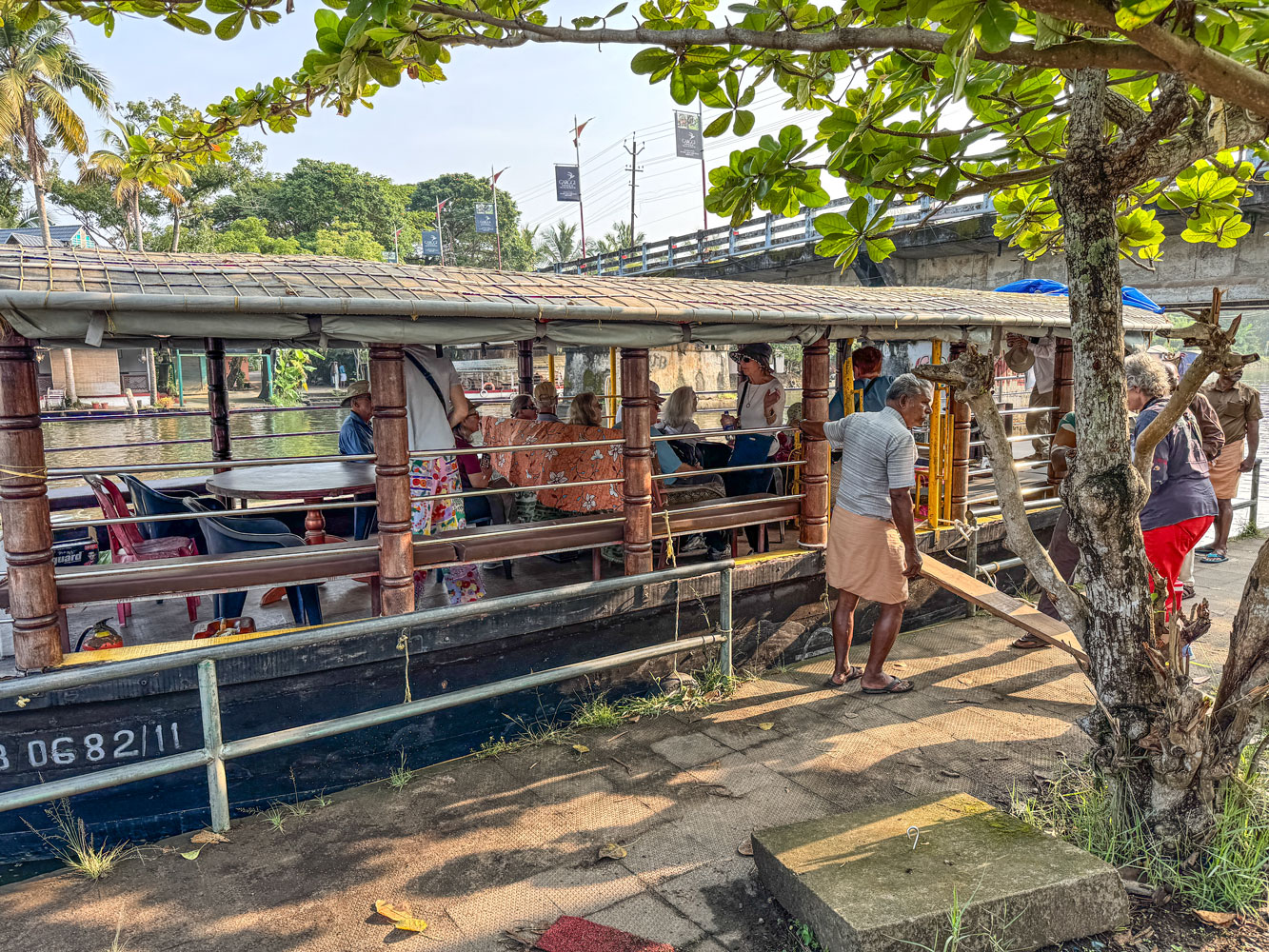
This woman was washing clothes in the canal. We had submitted some laundry this morning but I couldn't tell if it was ours she was working on (joke).
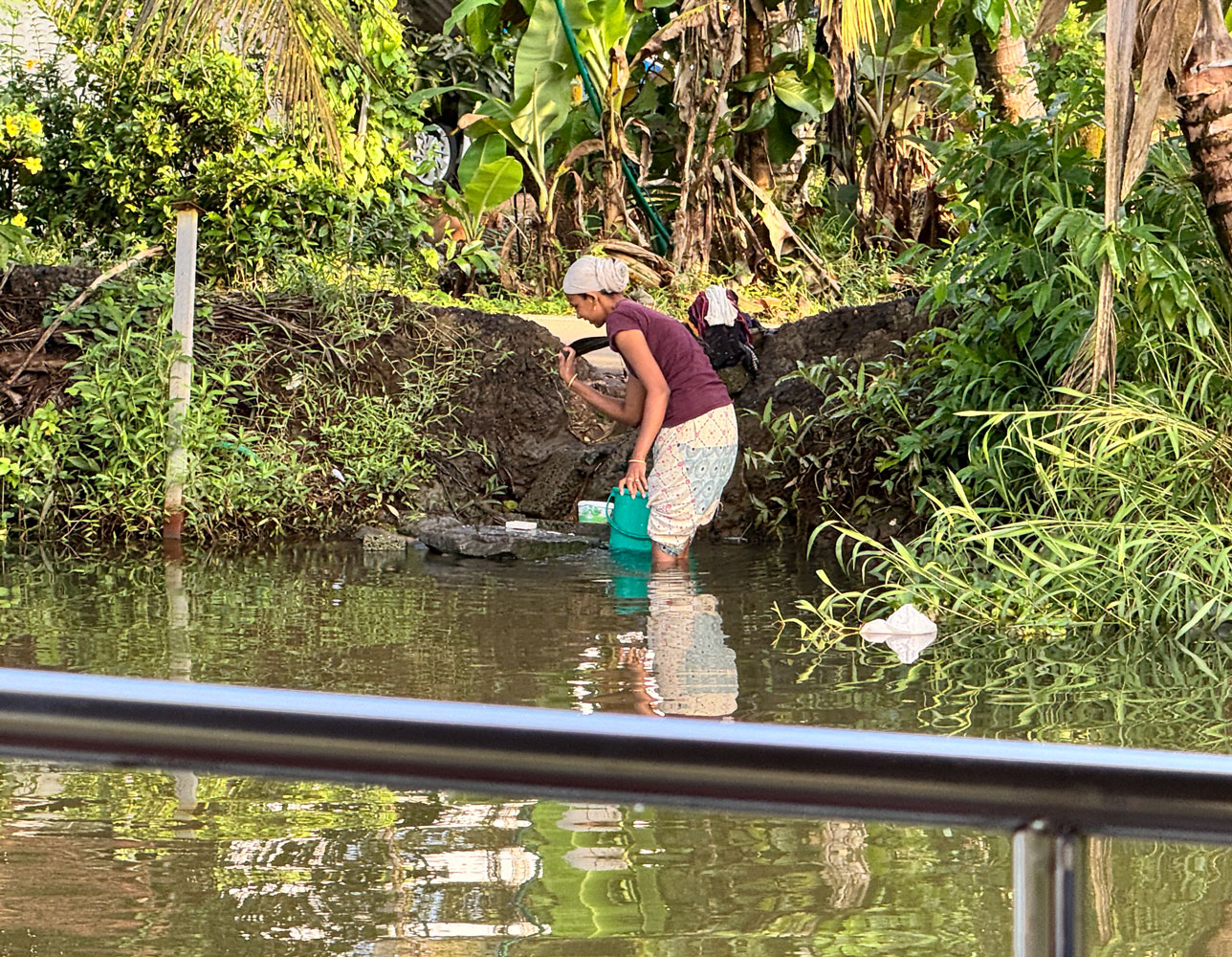
Eventually, the boat stopped and we had to "walk the plank" again.
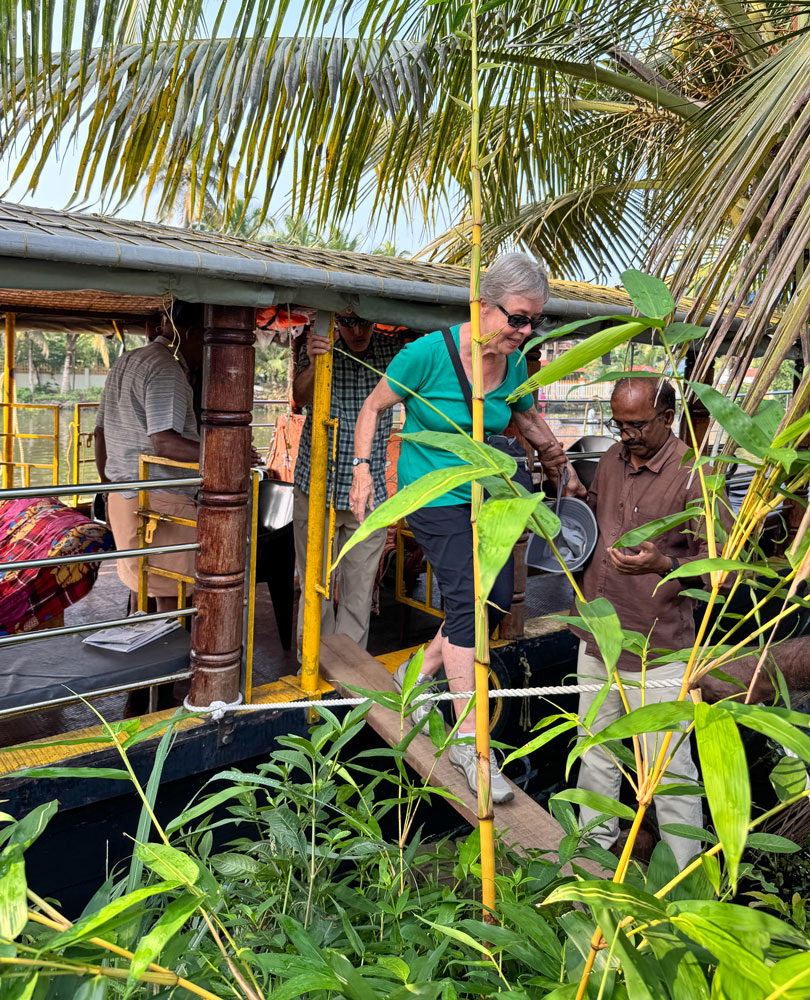
We had stopped at a house on the canal.
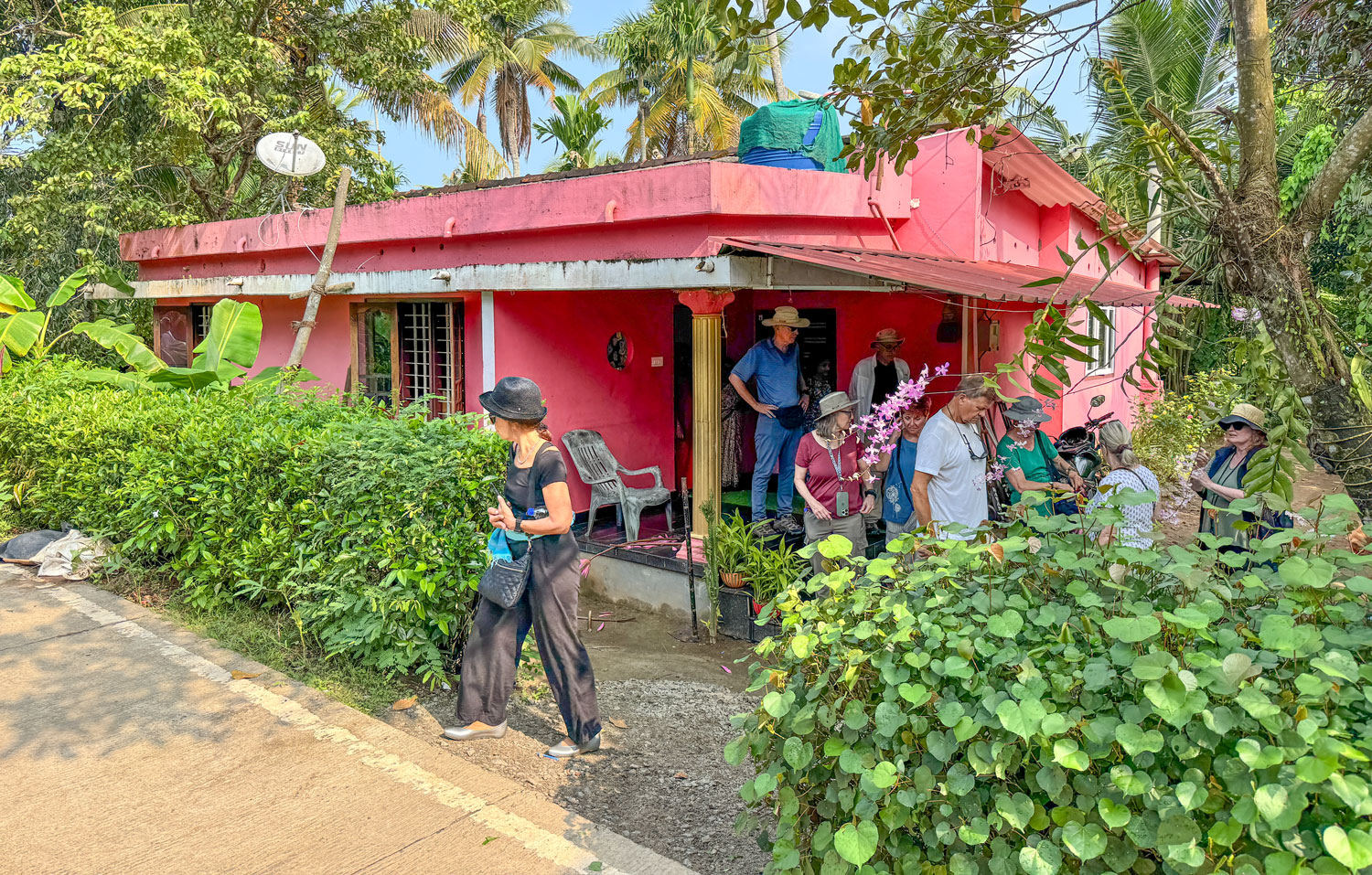
They will show some of the traditional activities of a family. We were hosted by three generations of women: the grandmother, the mother and the daughter. The mother's husband was also there but not in this picture. The 18 year old daughter is a twin.
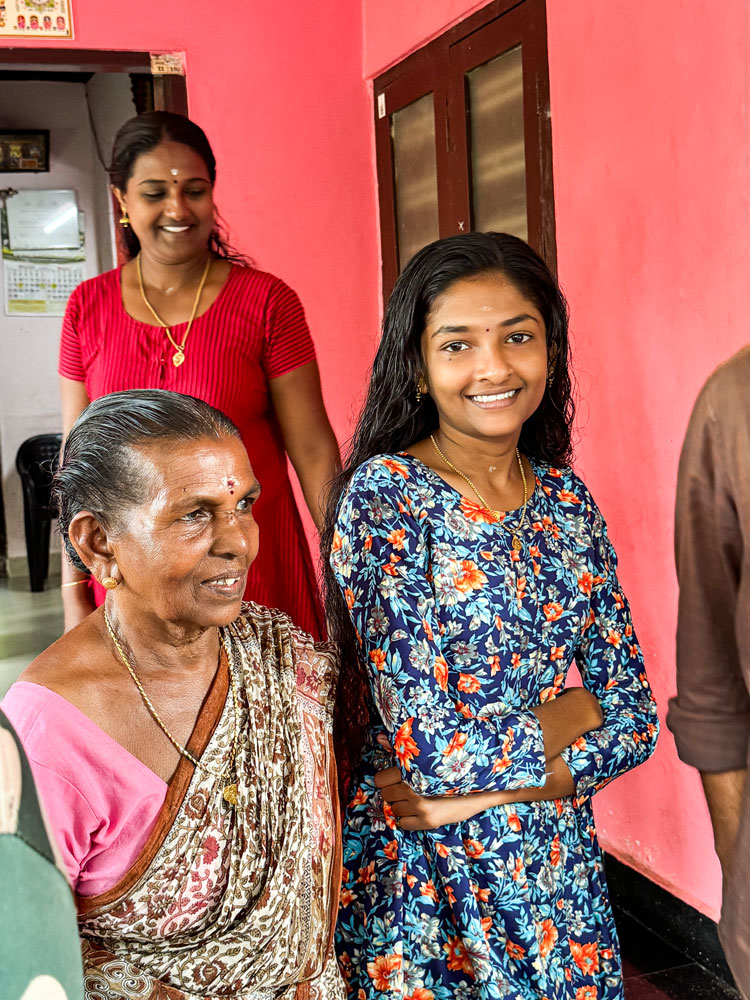
The husband demonstrated some of the traditional dress.
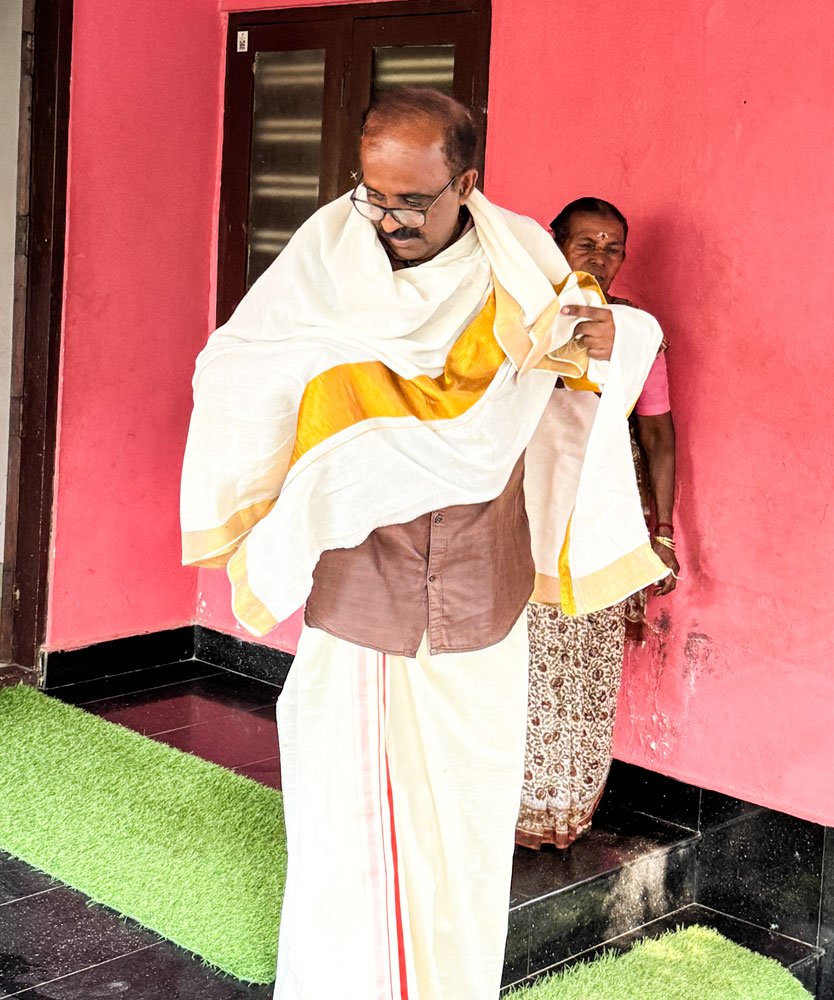
He asked for a couple to volunteer to model, and Judy jumped forward. Richard signaled me and I gave him my iPhone, so the next few pictures were taken by him. Thanks, Richard, you did a good job.
Judy has the sari, and is decorated with a water hyacinth necklace and earrings. The cord of the necklace was the stem of the flower that had been cut into segments connected by remaining strands of the stem, so it was alternatively thick and thin. The earrings were the flower buds, strung with a stiff cord that hung over the ear. She looks like an Indian princess, and indeed, she is.
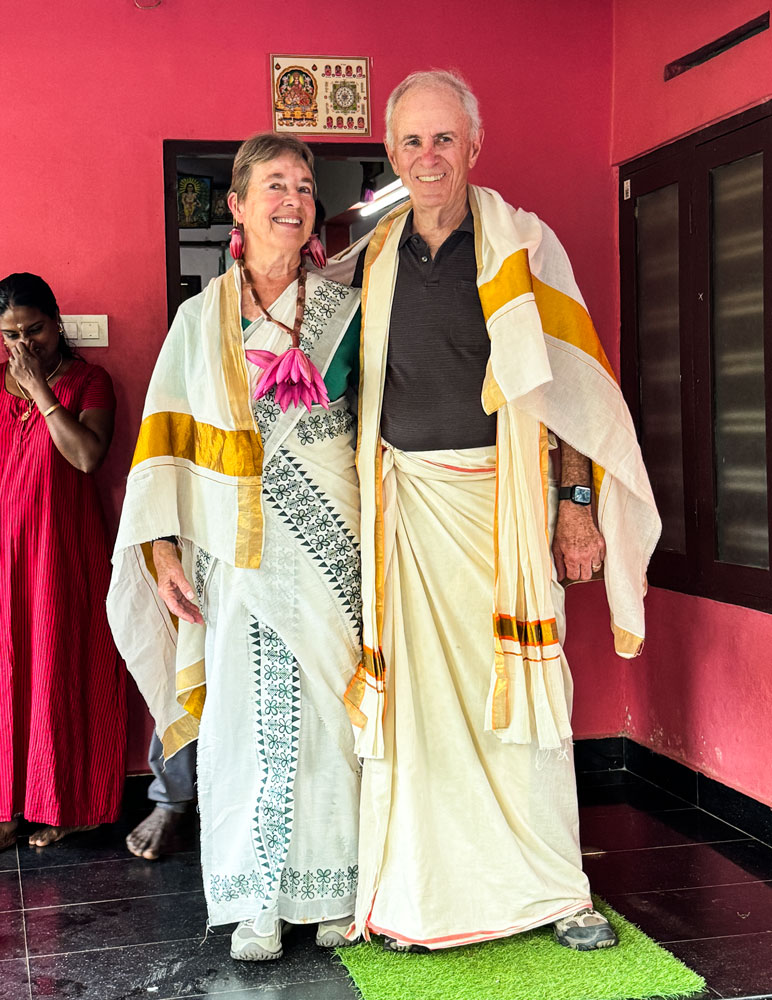
Then George and Mary Ellen came up and were dressed for work in the field. Finally, Kate was dressed in formal wear.
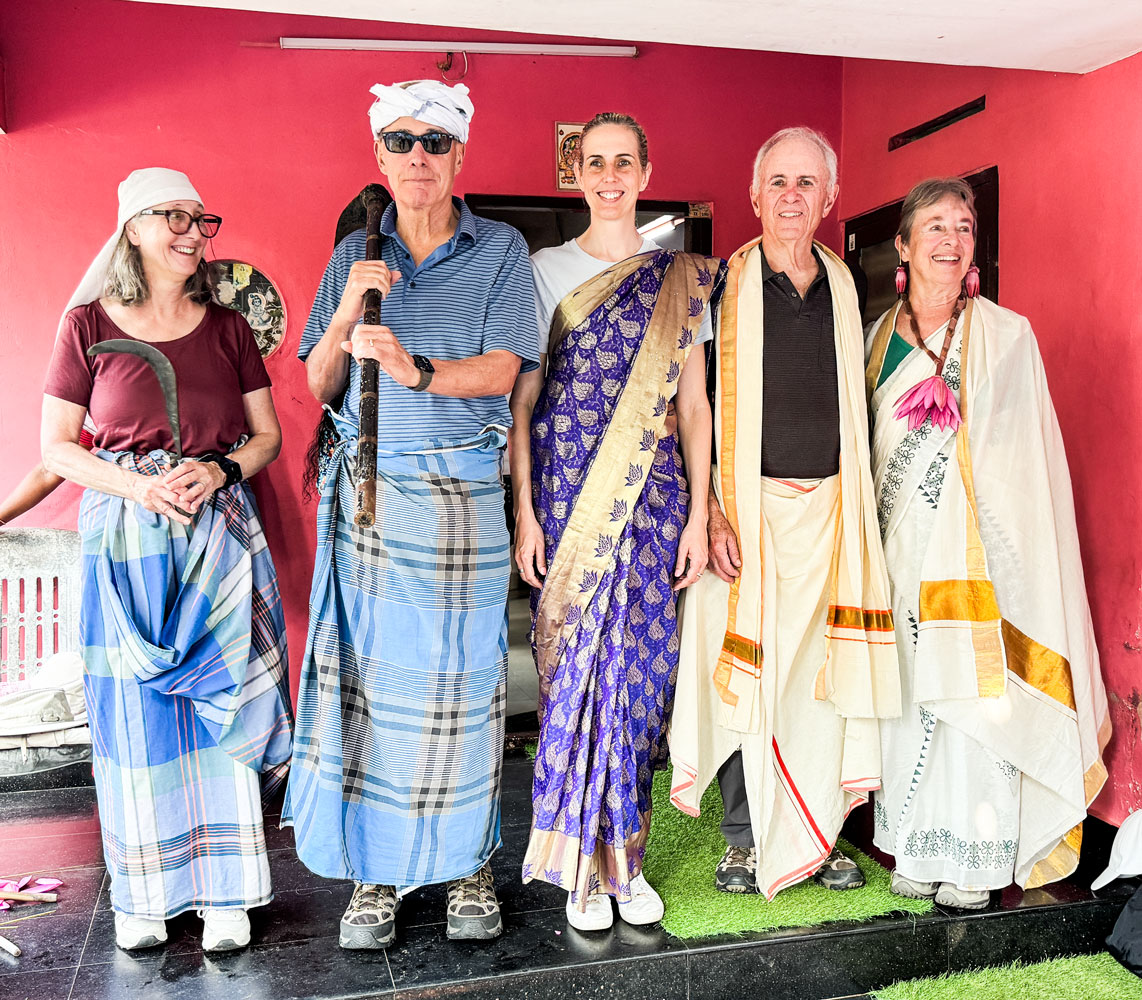
Next they demonstrated how they make products from the husk of the coconut. They soak the husk in the canal for a week or so. Then they beat the husk to get the fibers to separate.
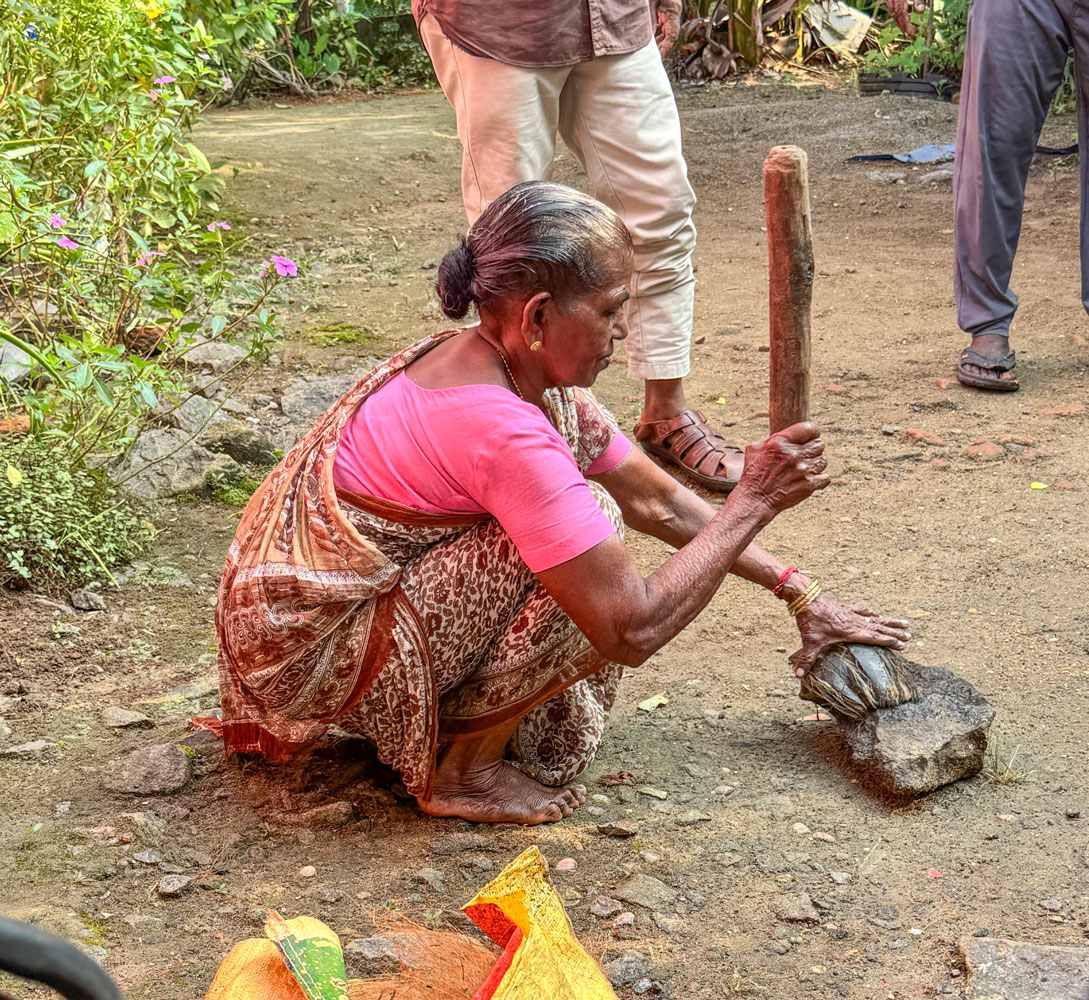
When the fibers are well dried, they will begin twisting the fibers together to make rope.
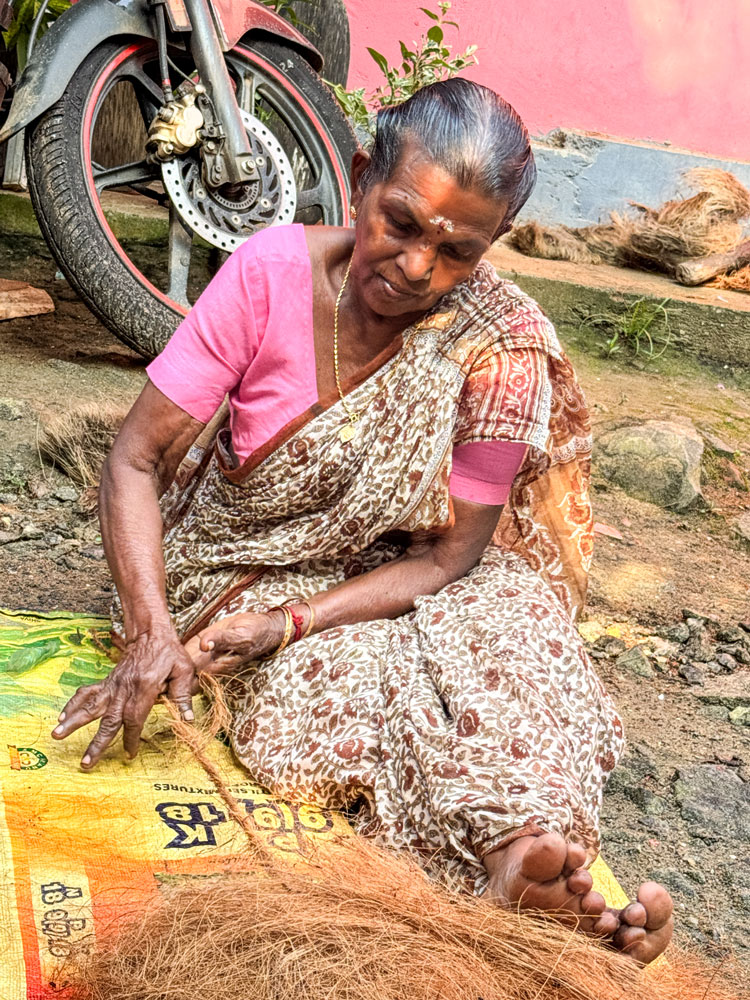
To speed things up, they have a motorized spinner that can spin two twines at the same time.
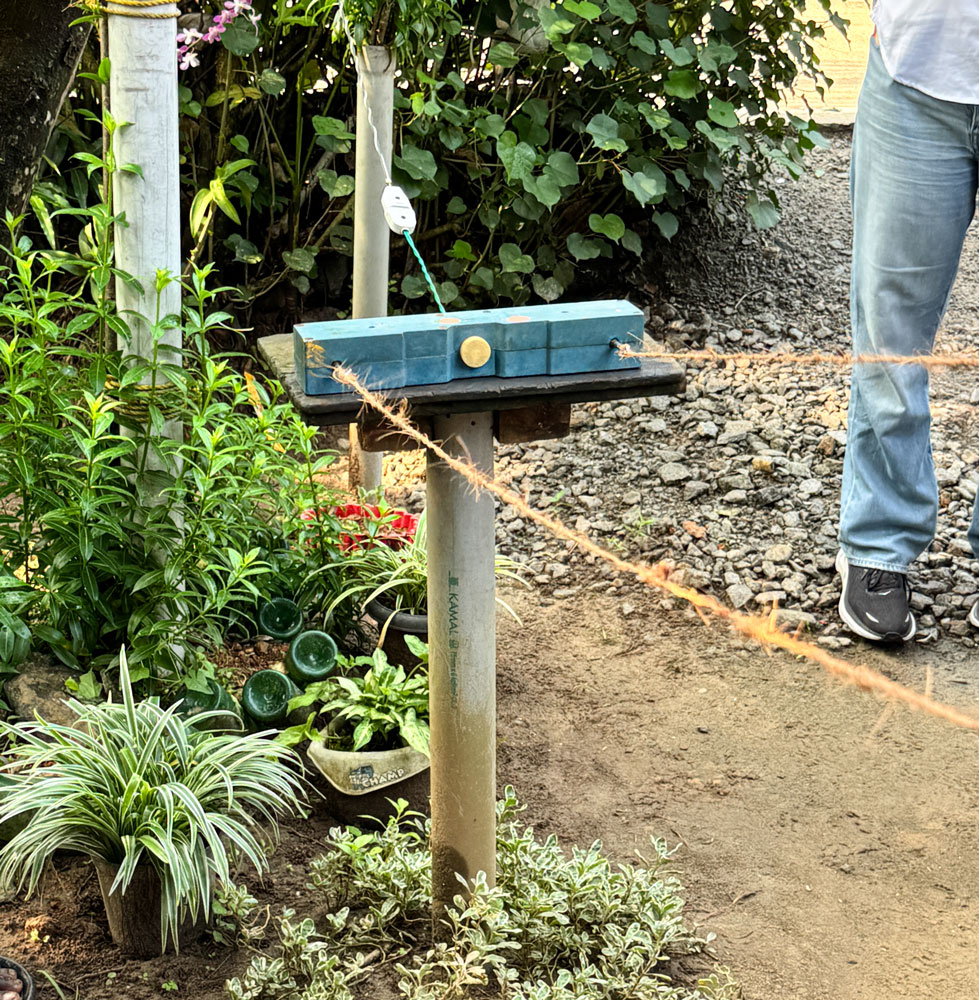
The mother demonstrated spinning two twines at the same time.

The twines can then be twisted together to make a thicker, stronger rope.
Lori gave it a try, helped by the mother. The unwound fiber is bunched in a pouch in the front ofthe sari and fed evenly as the spinning proceeds.
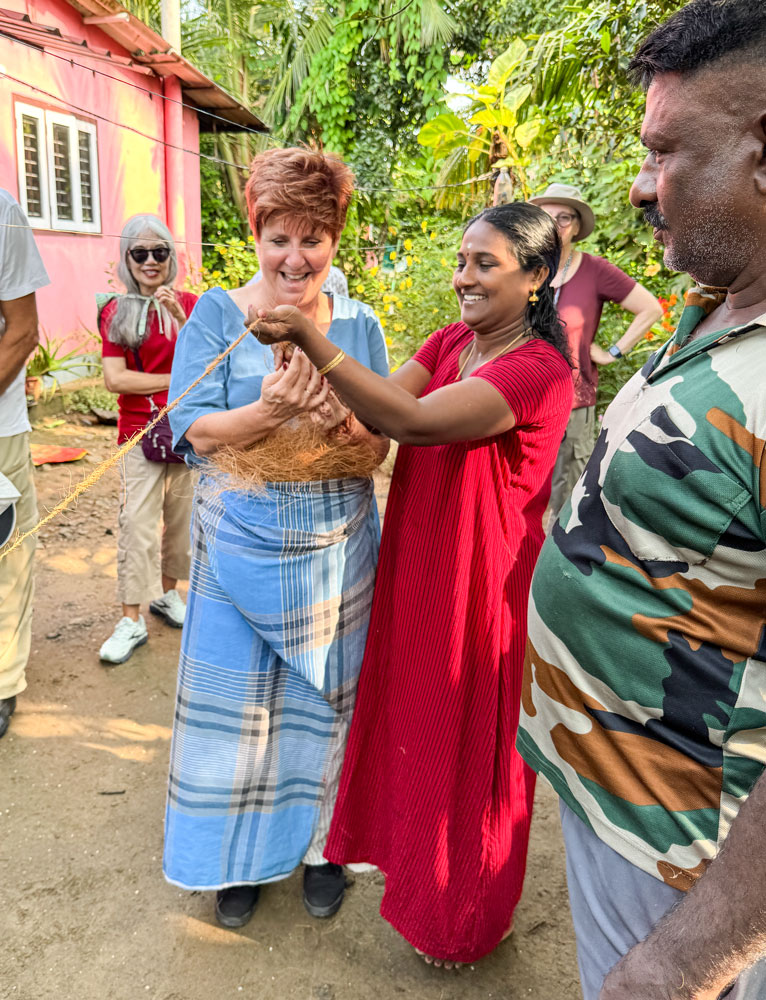
Grandmother demonstrated hulling the rice. Of course, they don't do this any more. It can only be done in small batches and the hulling is not very complete.
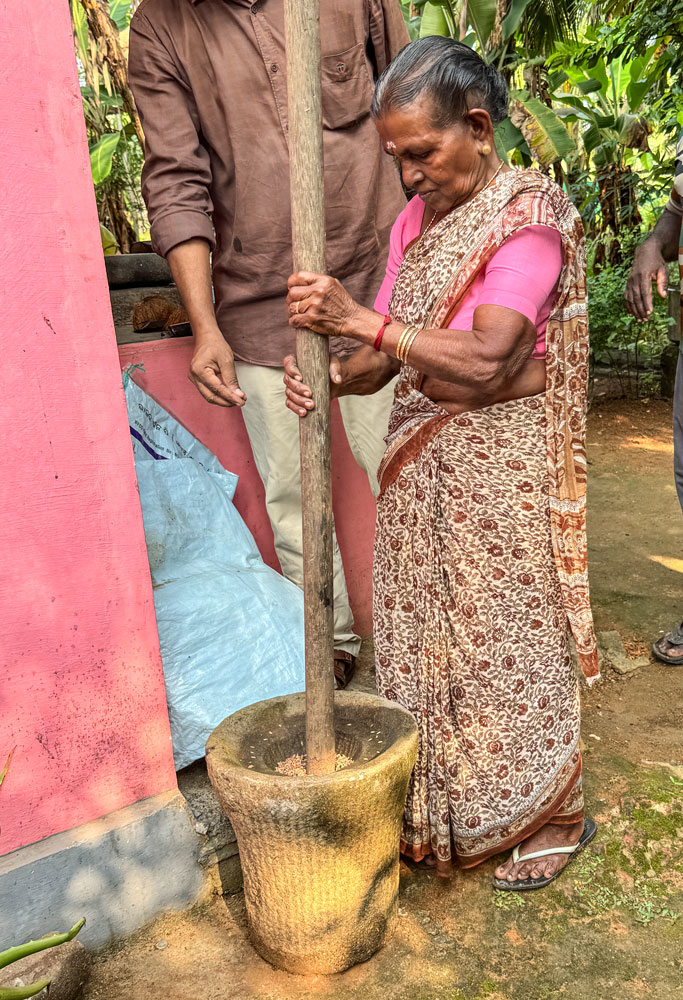
Mother demonstrated making a food, often chutney, by mashing the ingredients together with this stone.
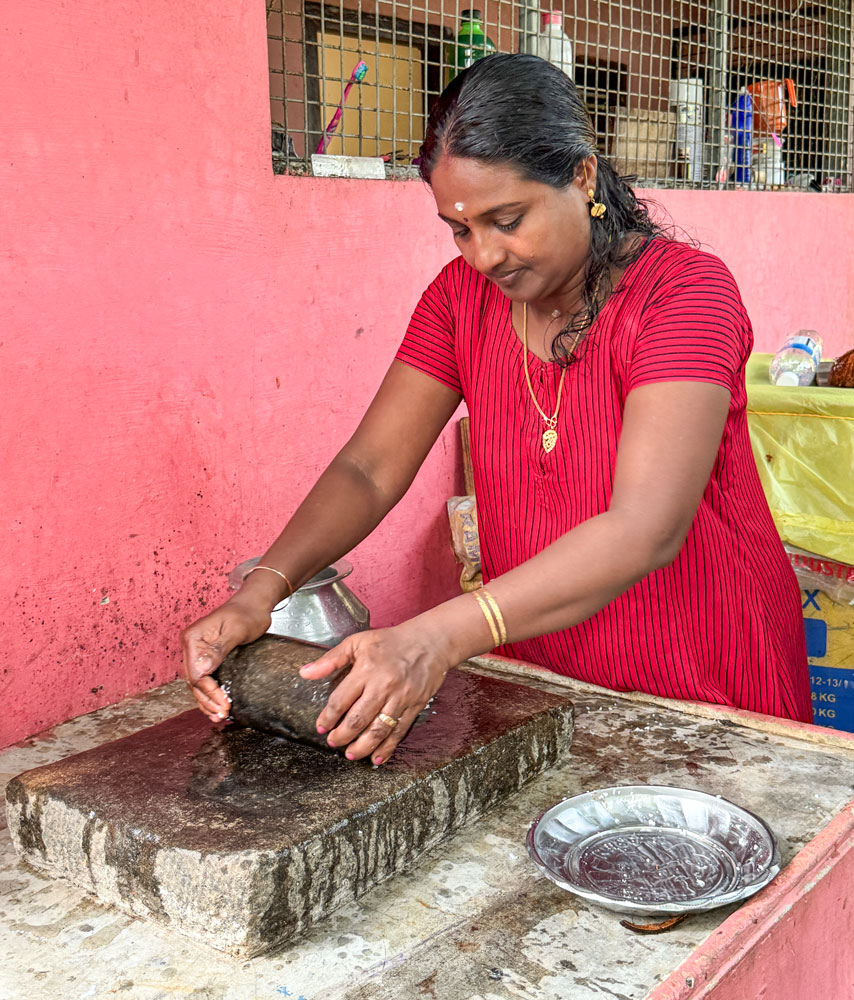
One of the men demonstrated the climbing equipment they use to collect coconuts. He didn't go very high in the demonstration, but the tree was really tall. You'd be a long way off the ground when you got to the coconuts. Not something I could do.
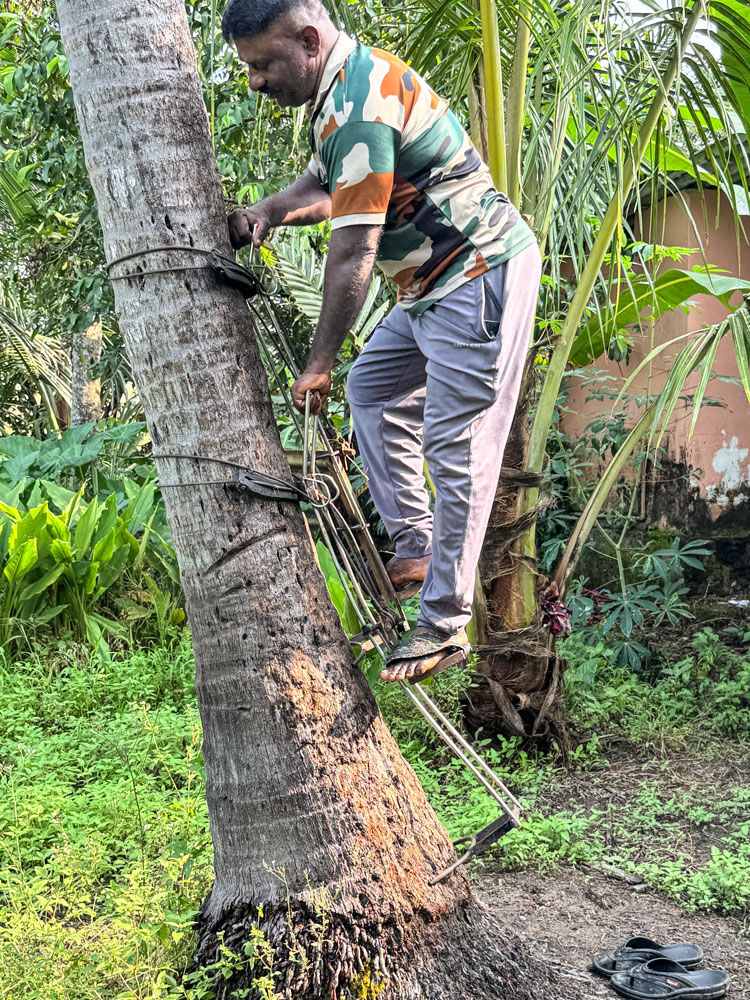
Louis gave it a try. We did get his emergency contact before he tried it:-)
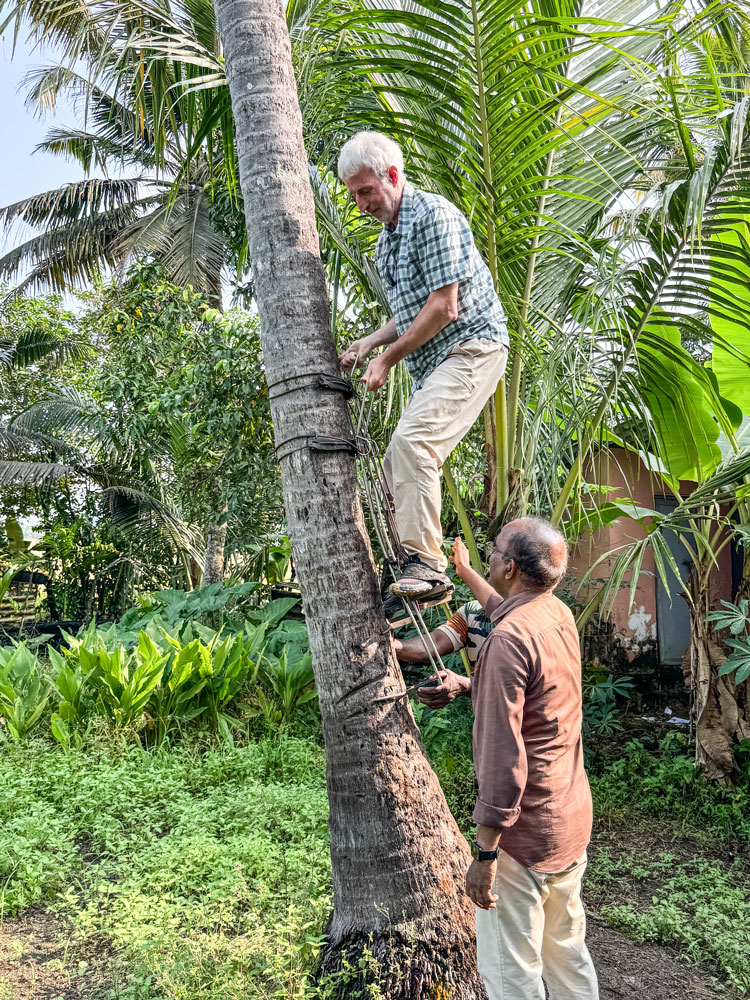
Lori also gave it a try.
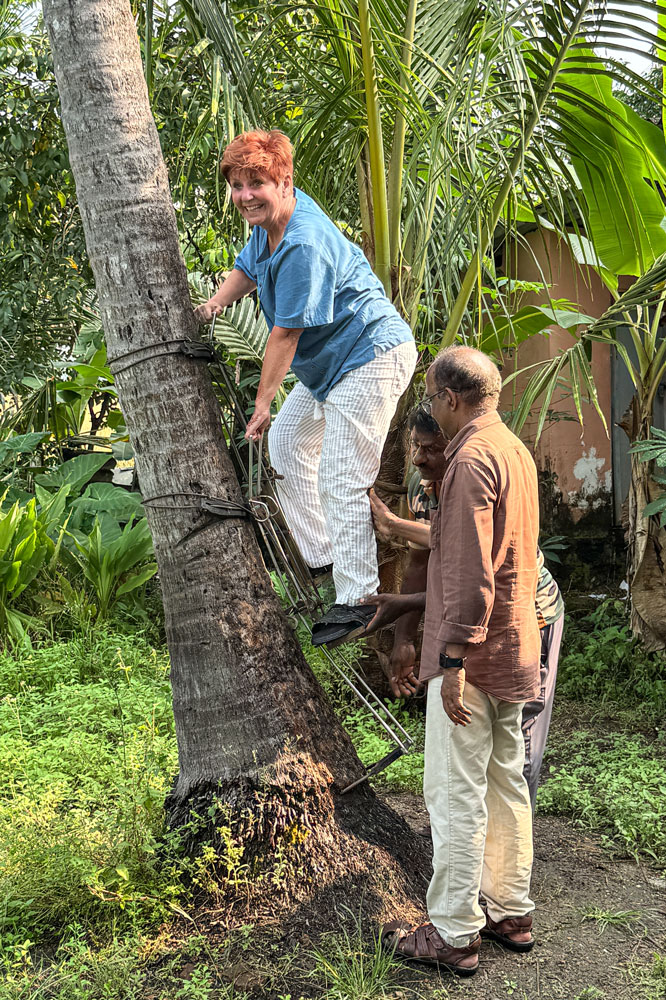
Here's their rice field. It's not all theirs. The field is marked off into each farmer's land, but they work the field together. At harvest time, they drain the fields and use a mechanical harvester that their farm society owns. This field is turning yellow, approaching harvest time.
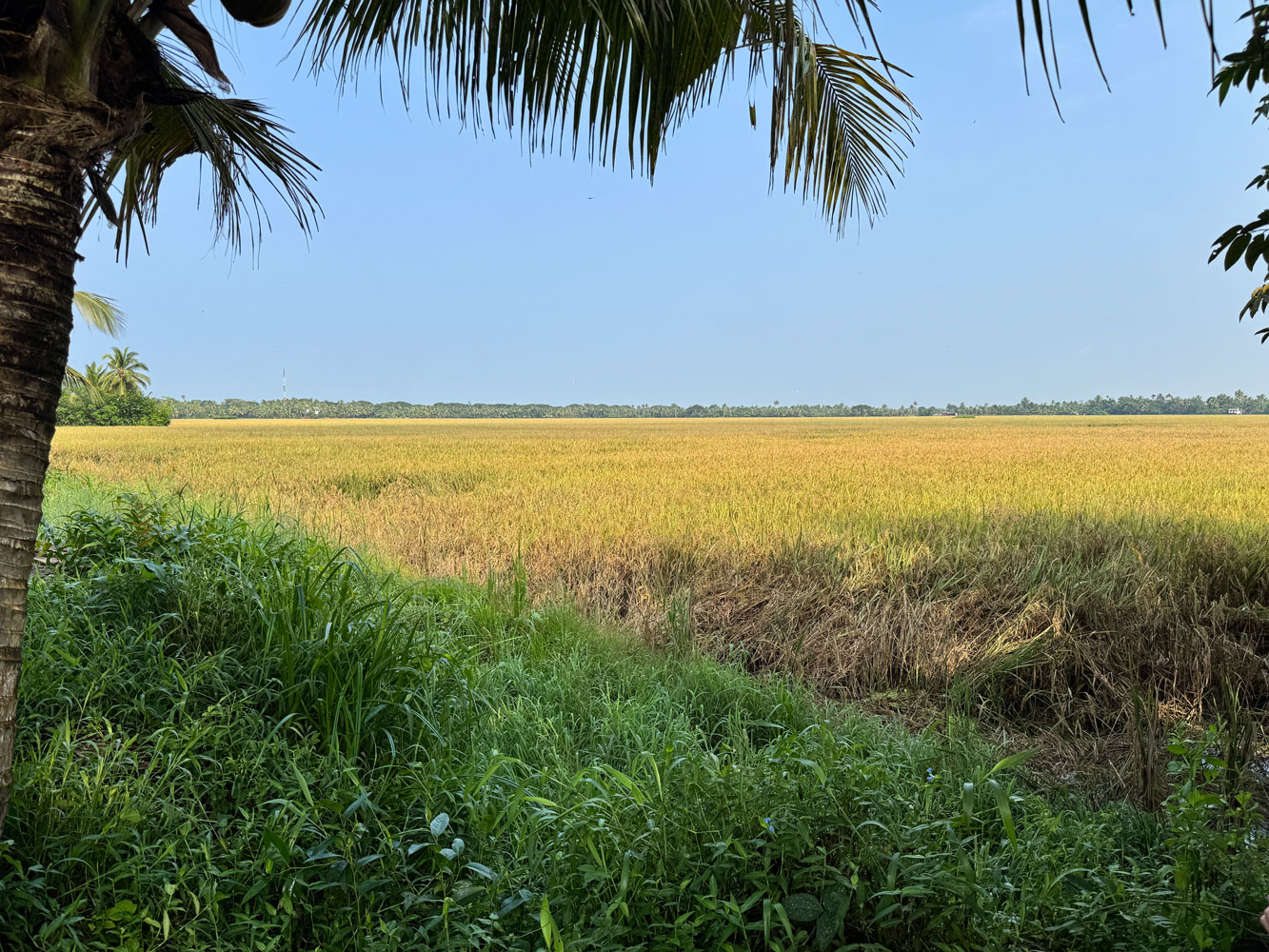
Rice fields in Vietnam are handled exactly the same way.
Then we went into their house. Here's the kitchen area. The family is clearly middle class.

A bedroom.
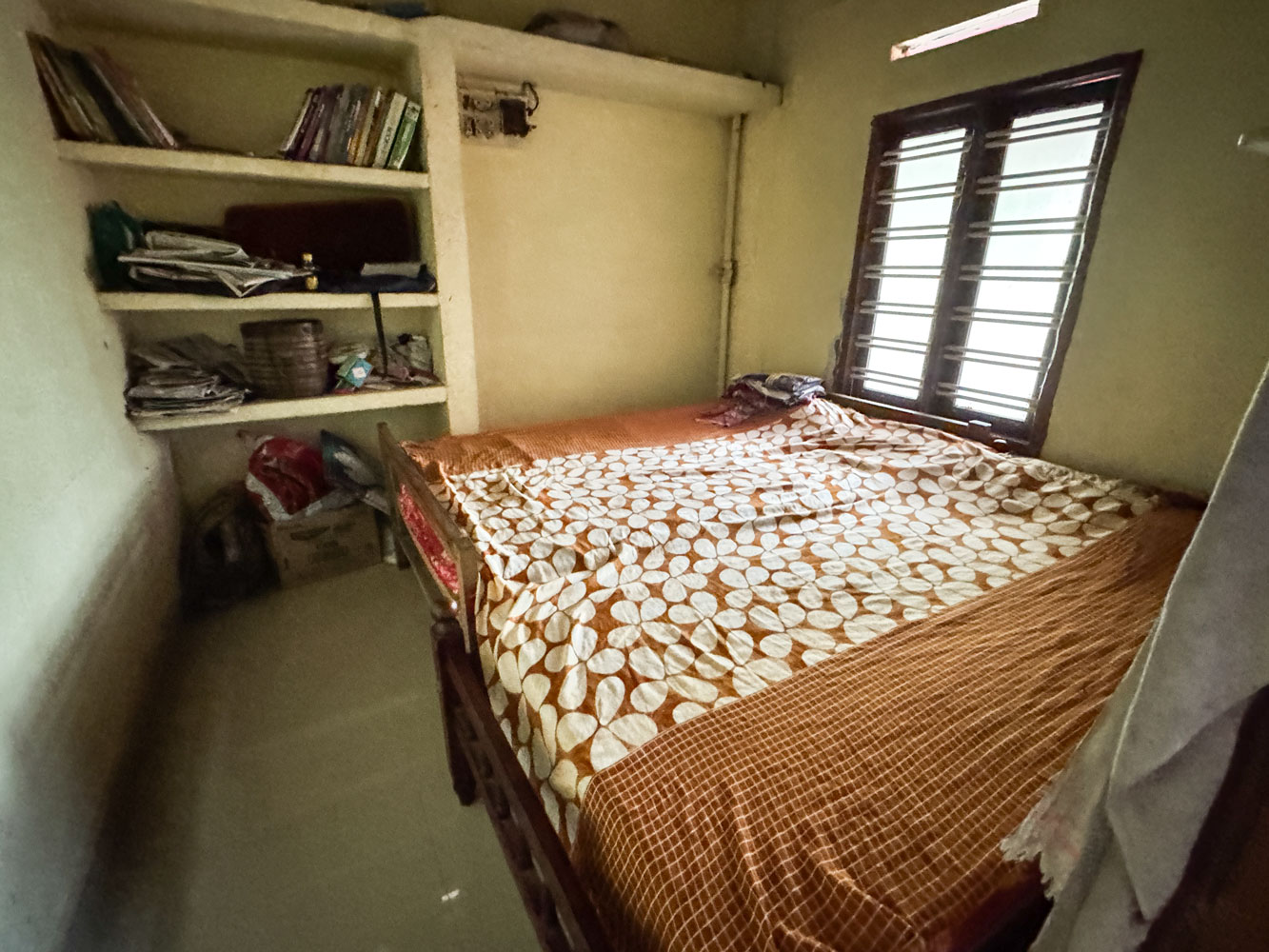
Their daughter is doing very well academically and will probably leave for college soon. She proudly showed us a cabinet displaying her medals and trophies.
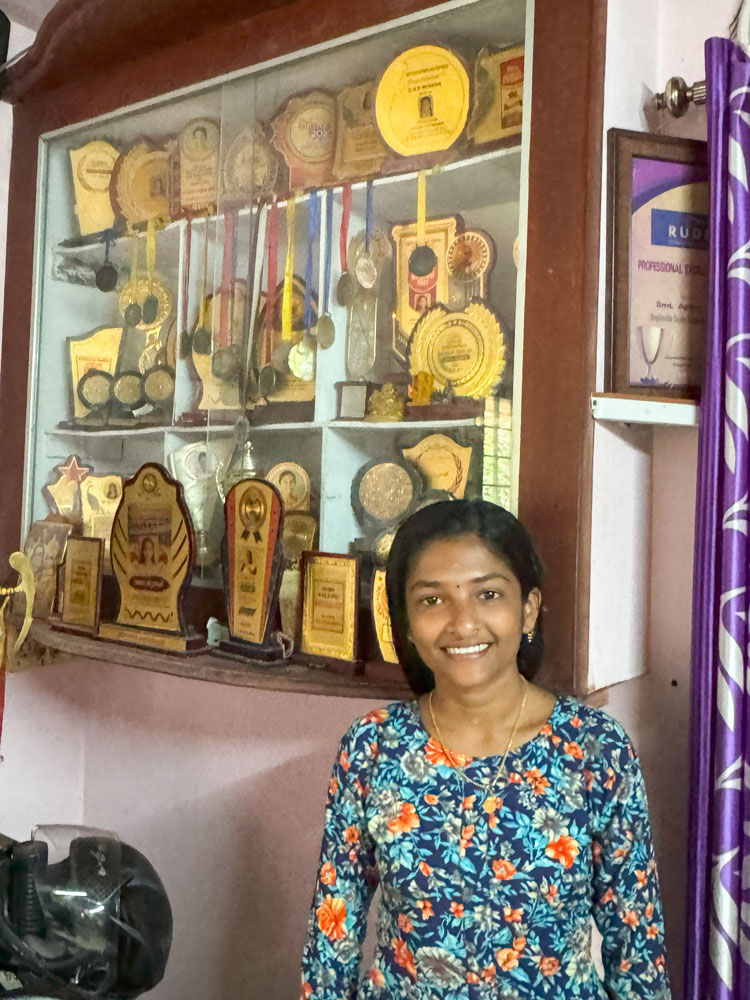
As we were leaving, we saw the family dog - so cute.
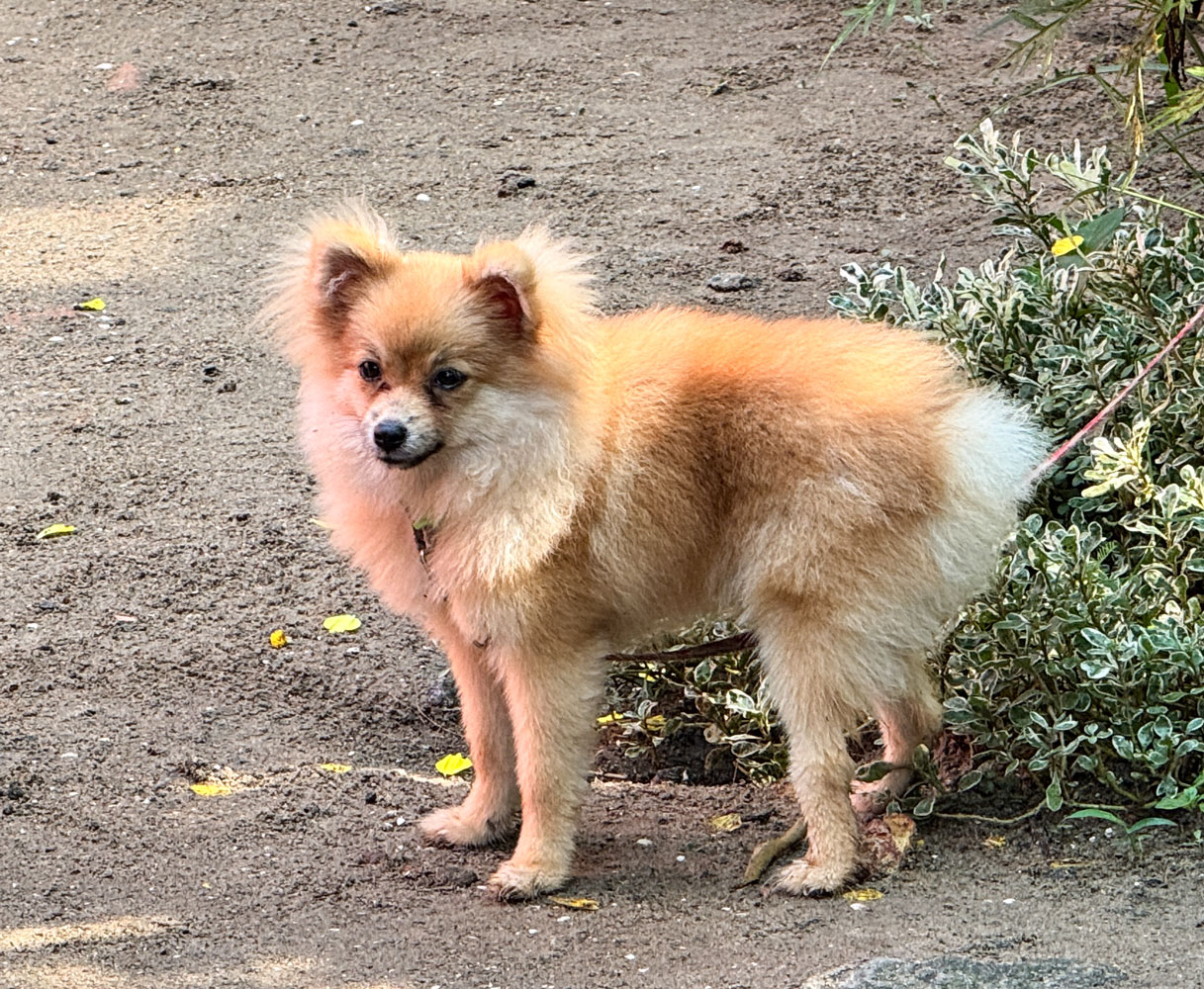
We walked the plank again and moved further along the canal.
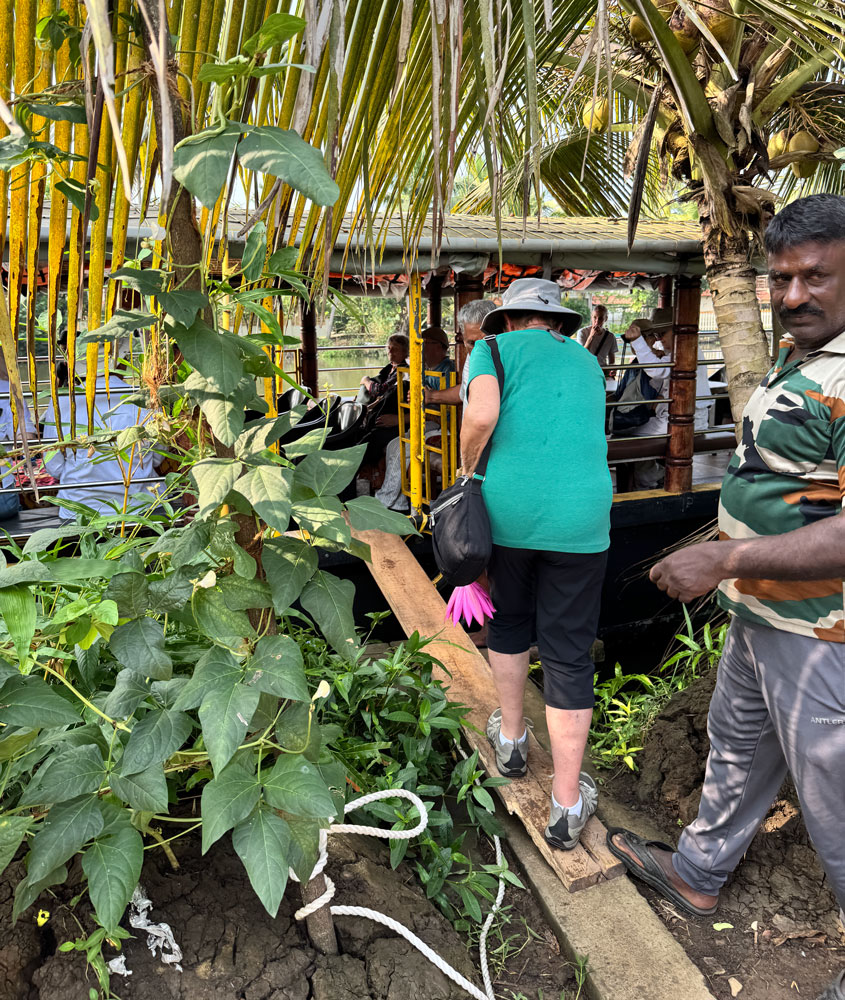
Unfortunately, it was getting hot. My shirt was wet from sweat and I wasn't feeling great.
We landed and walked along a rice field. This one is still green.
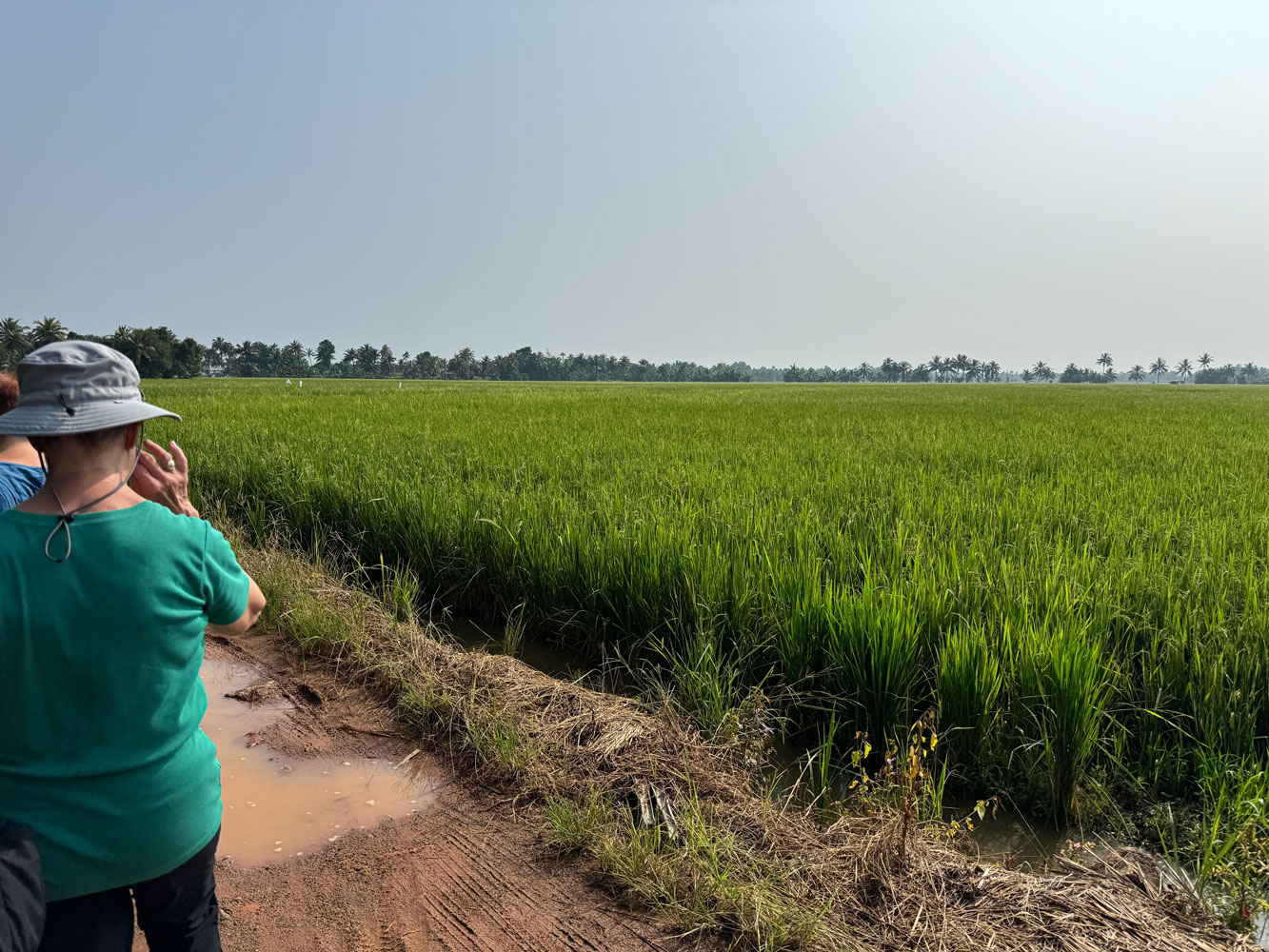
A close up of the rice grains.
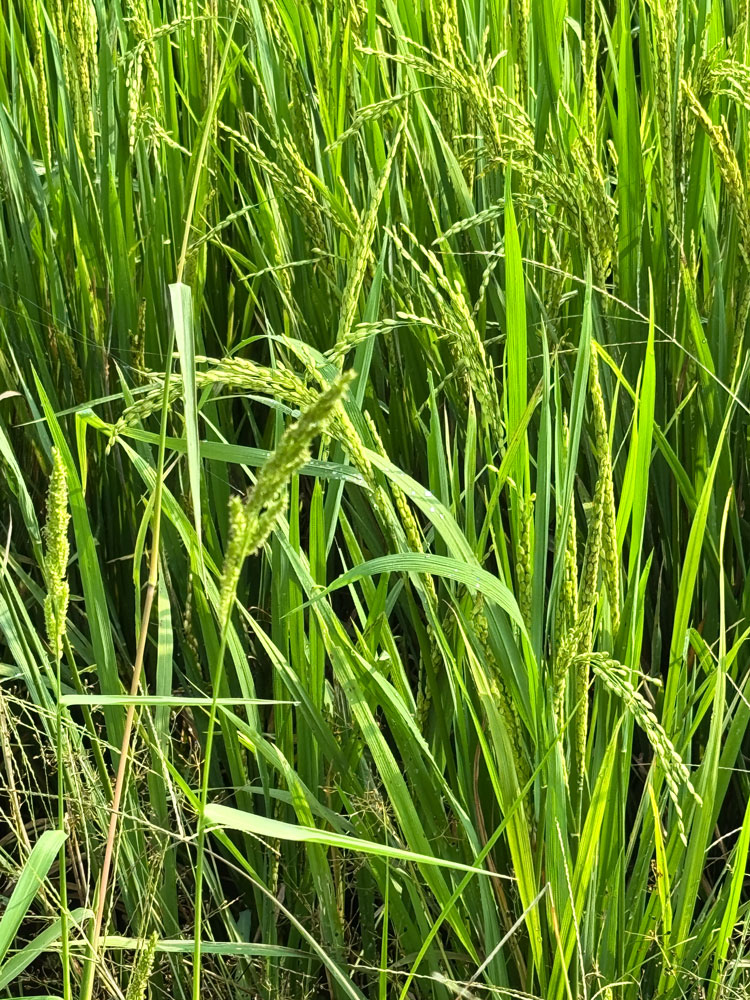
We went to a house to see a demonstration of the weaving of palm fronds into mats.

Here's one type of mat.
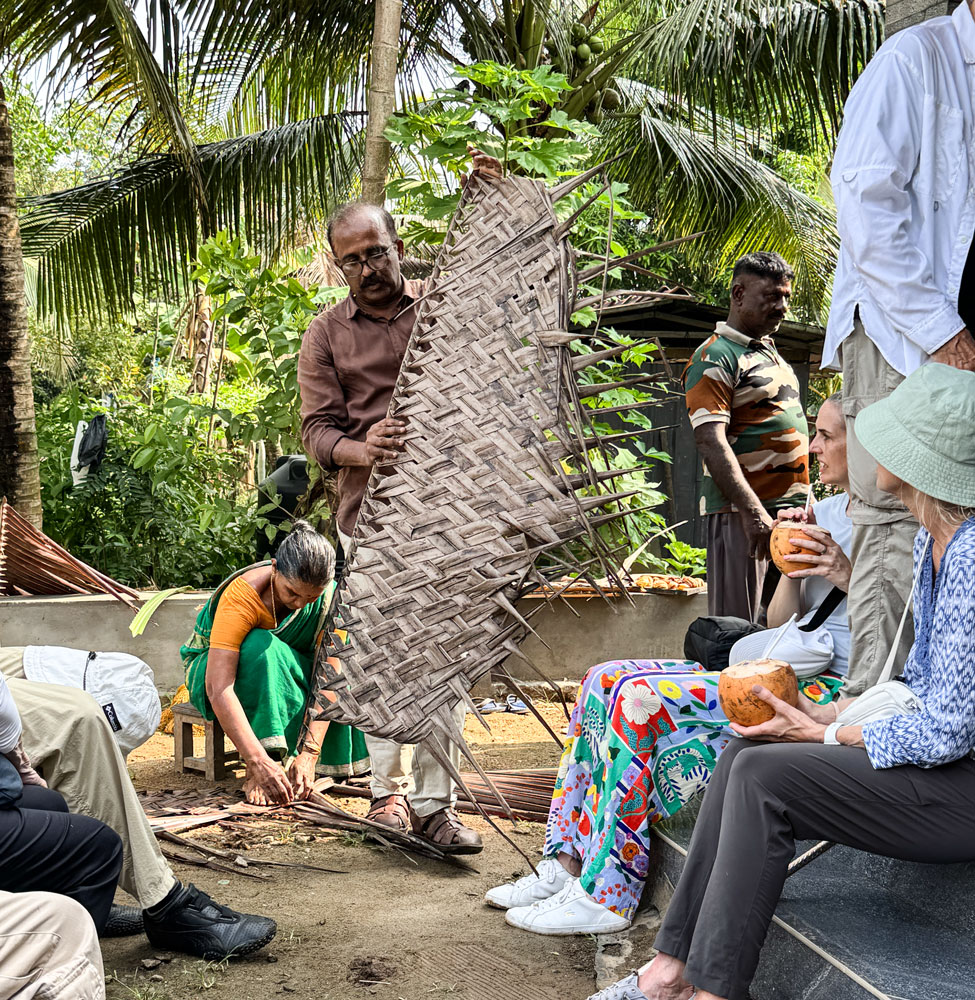
She also weaves yoga mats. A mat this size takes about a week to weave. She will get about ₹600 for a mat like this.
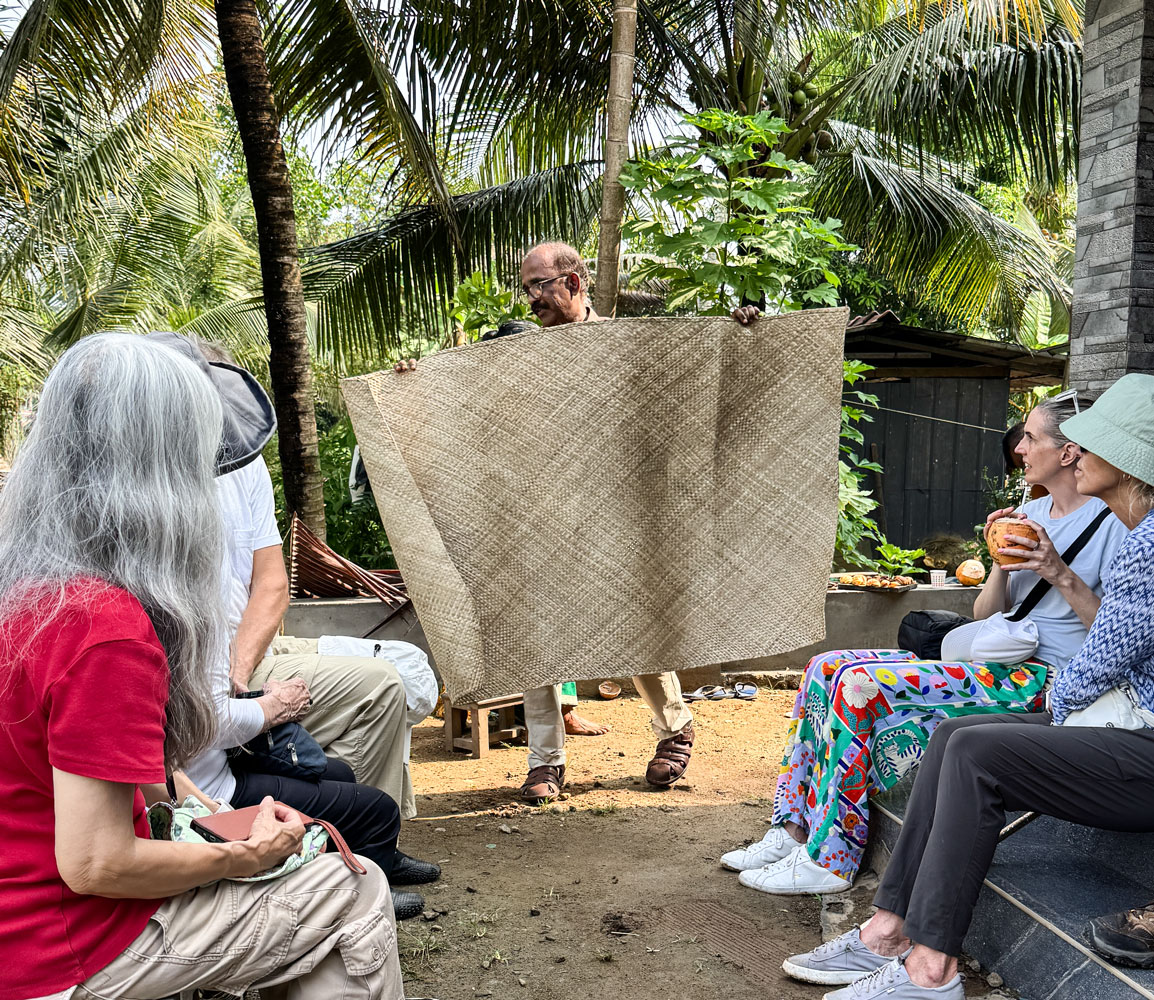
Here she is demonstrating the weaving of a yoga mat.
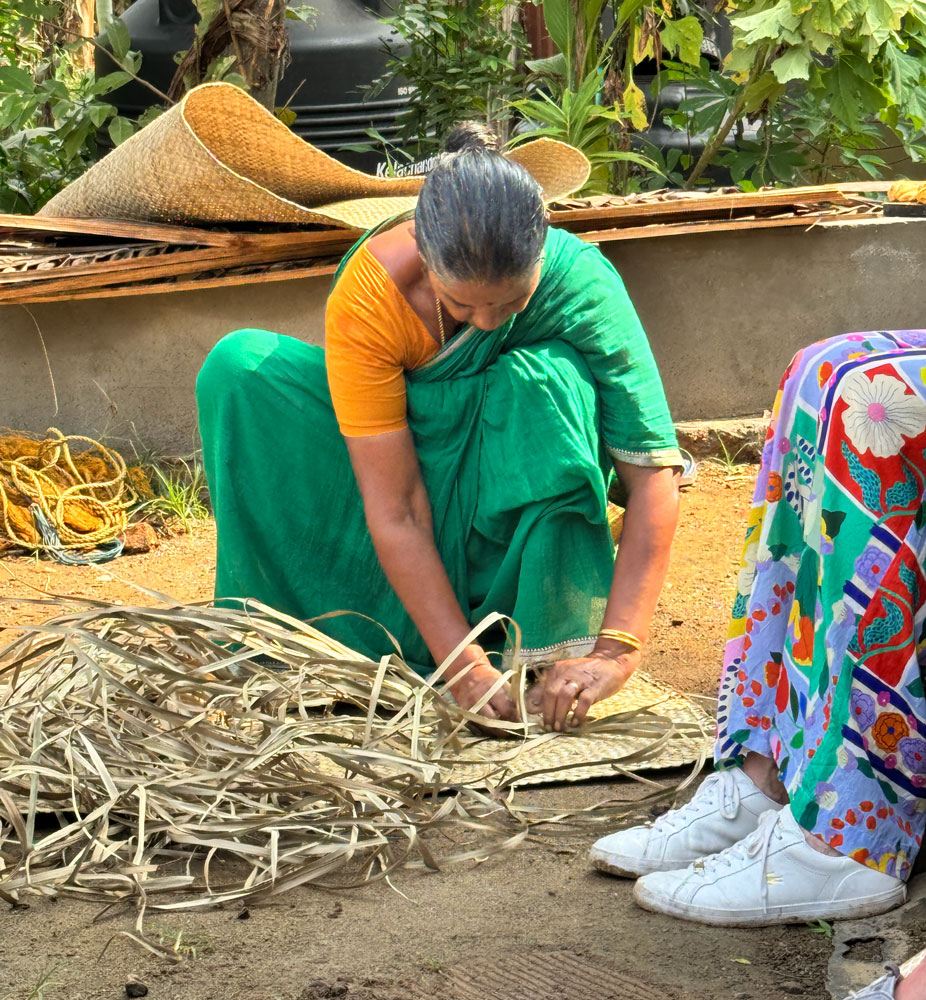
In the back of her house there was a black pepper vine growing on a tree. Judy got this picture of it. The vine climbs on the tree.
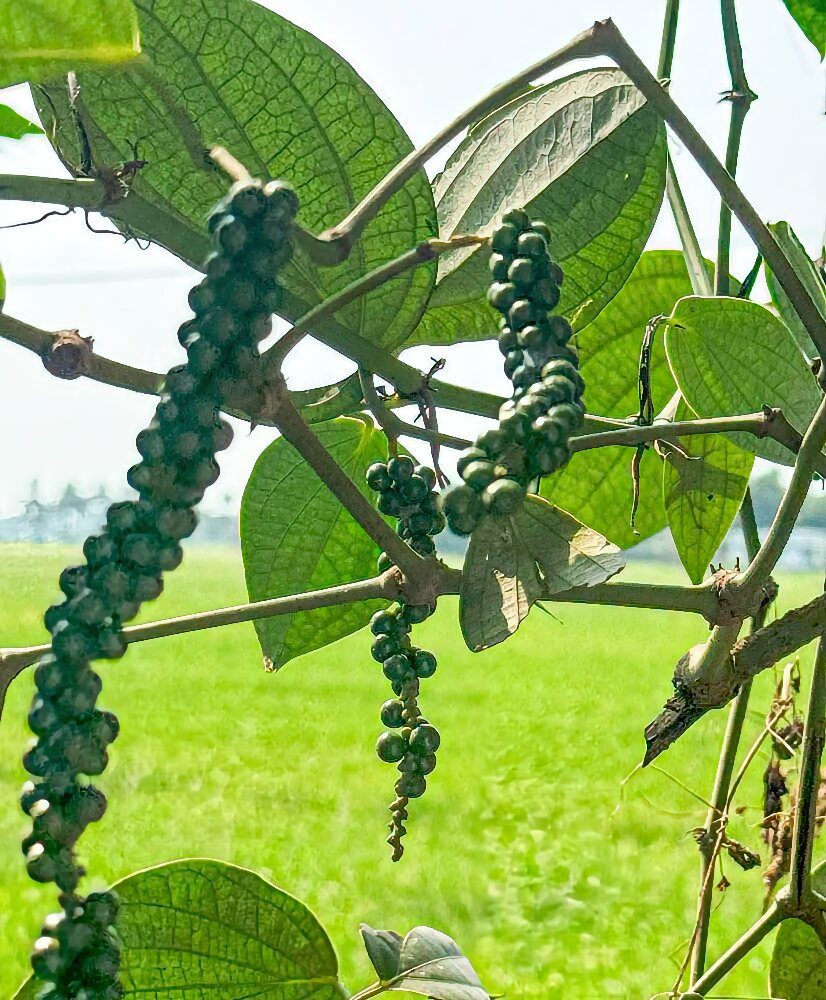
By now, I was really uncomfortable from the heat. My shirt was wet with sweat and sweat was getting into my eyes. Luckly, that was the end of the excursion and we began to head back toward the hotel.
Tuk-tuks were waiting for us.
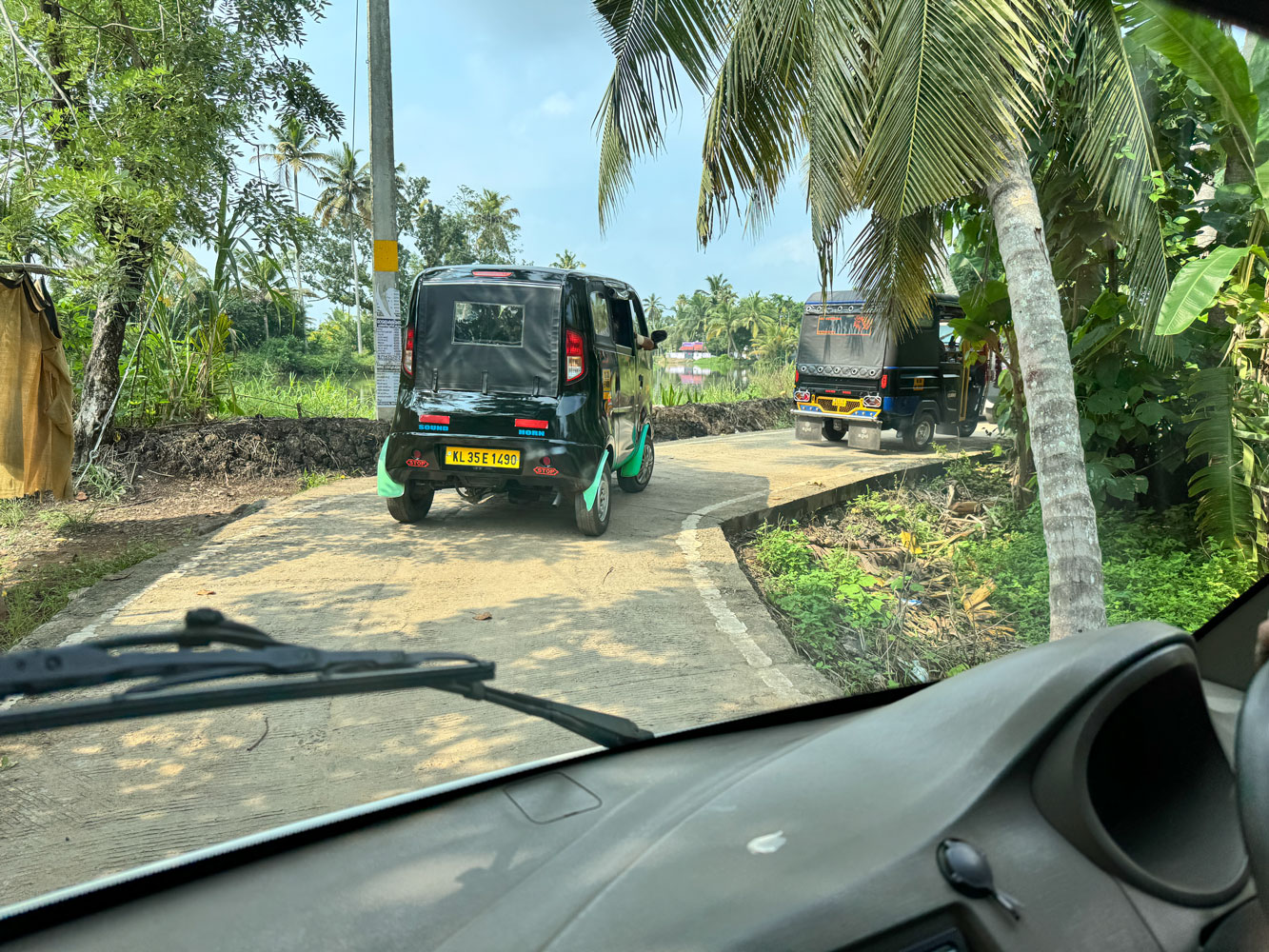
The gate to the hotel. It was just after 10am when we arrived back at the hotel.
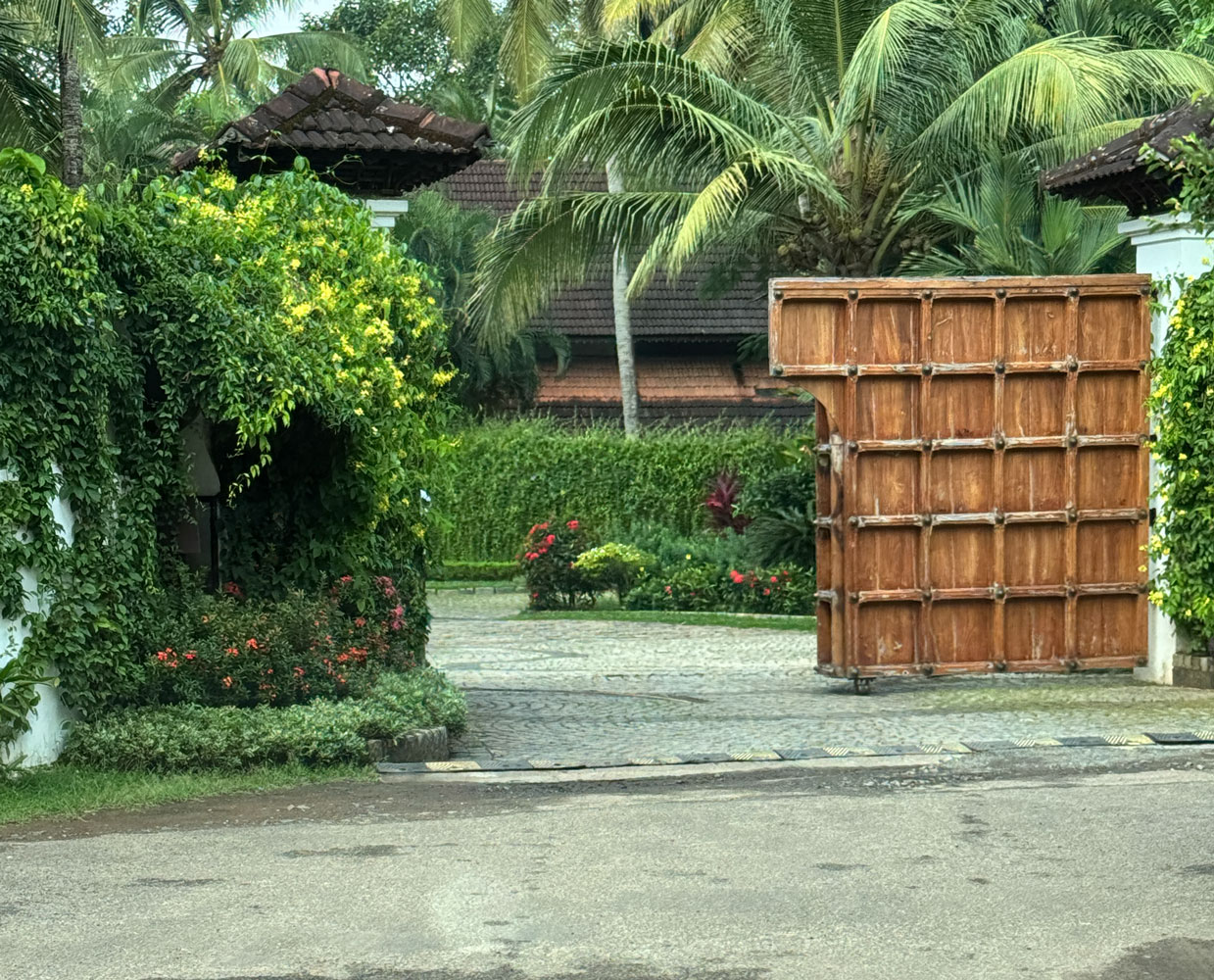
Other tuk-tuks were there dropping off members of our group.
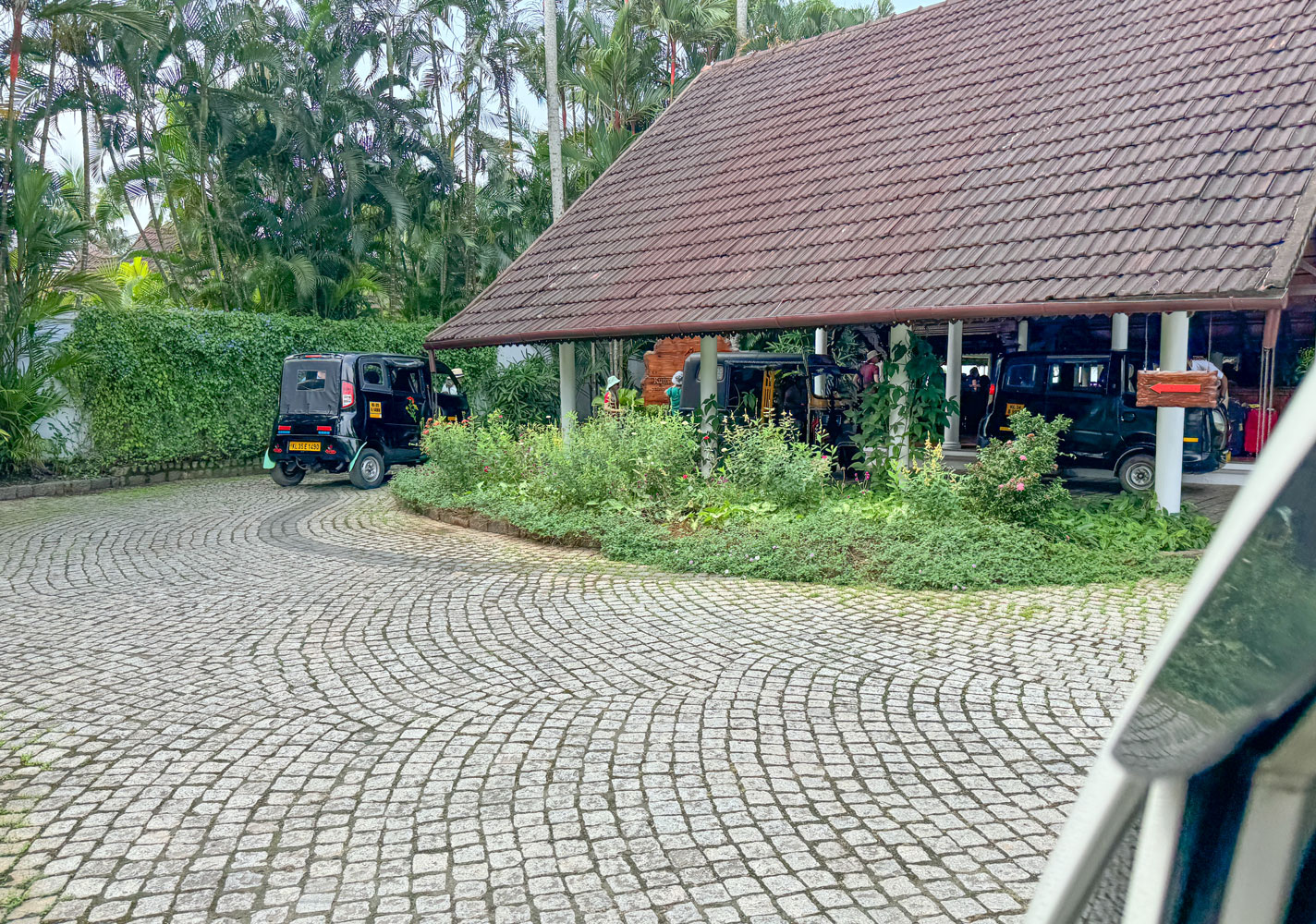
That was the end of our morning excursion. I went to our room, stripped off my sweaty clothes and stood in a cool shower for a while.
Other than lunch, we didn't have another event until the evening.
At 7pm we attended a demonstration of Indian martial arts. It seems to be more acrobatic than a self defense discipline, such as judo.
Here are some pictures.
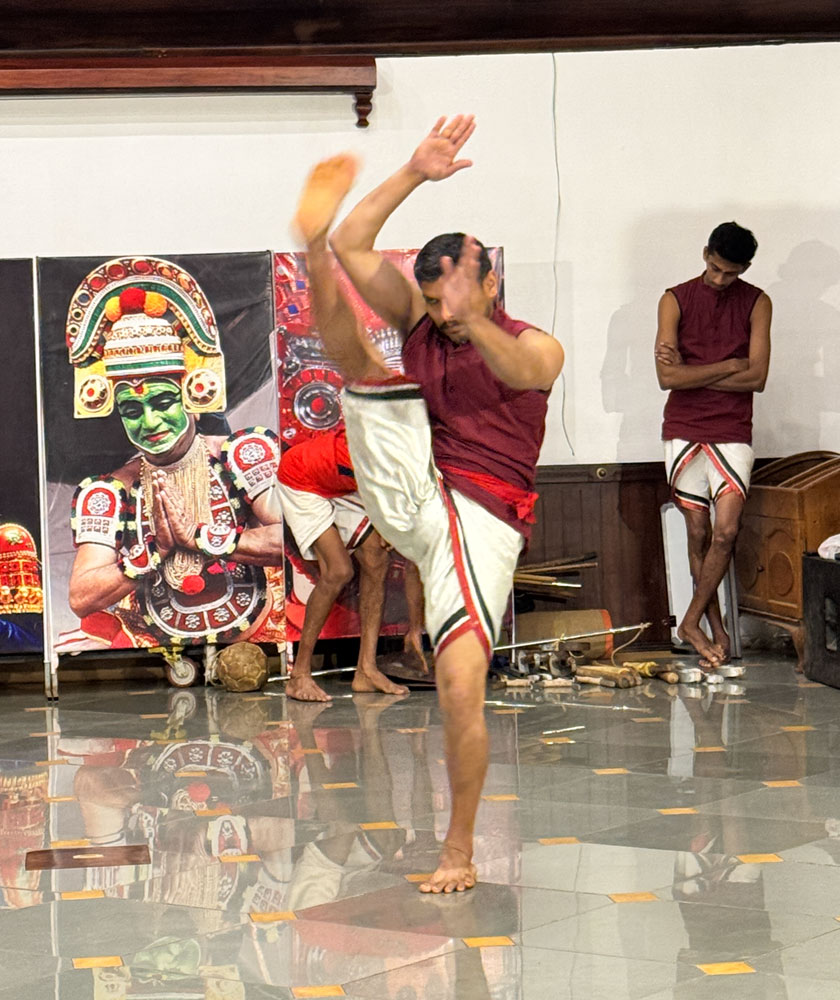
This is almost a yoga pose.
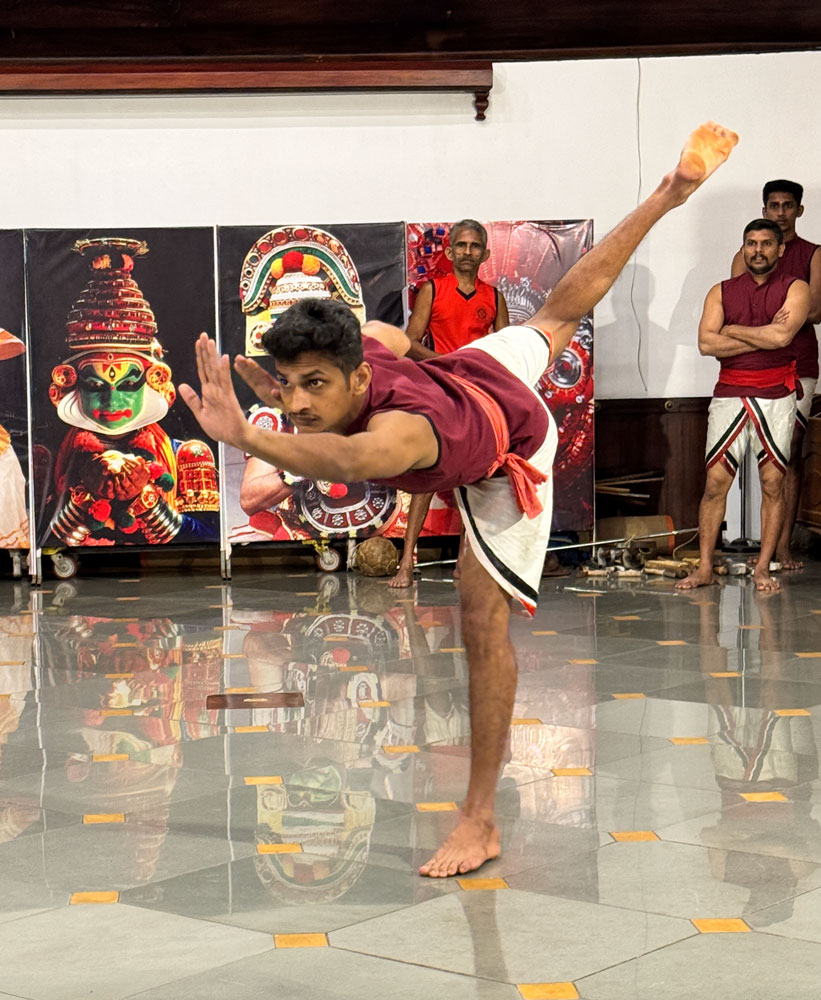
Here they were "fighting" with knives. It was highly choreographed. After all, they could do some real damage if they make a mistake.
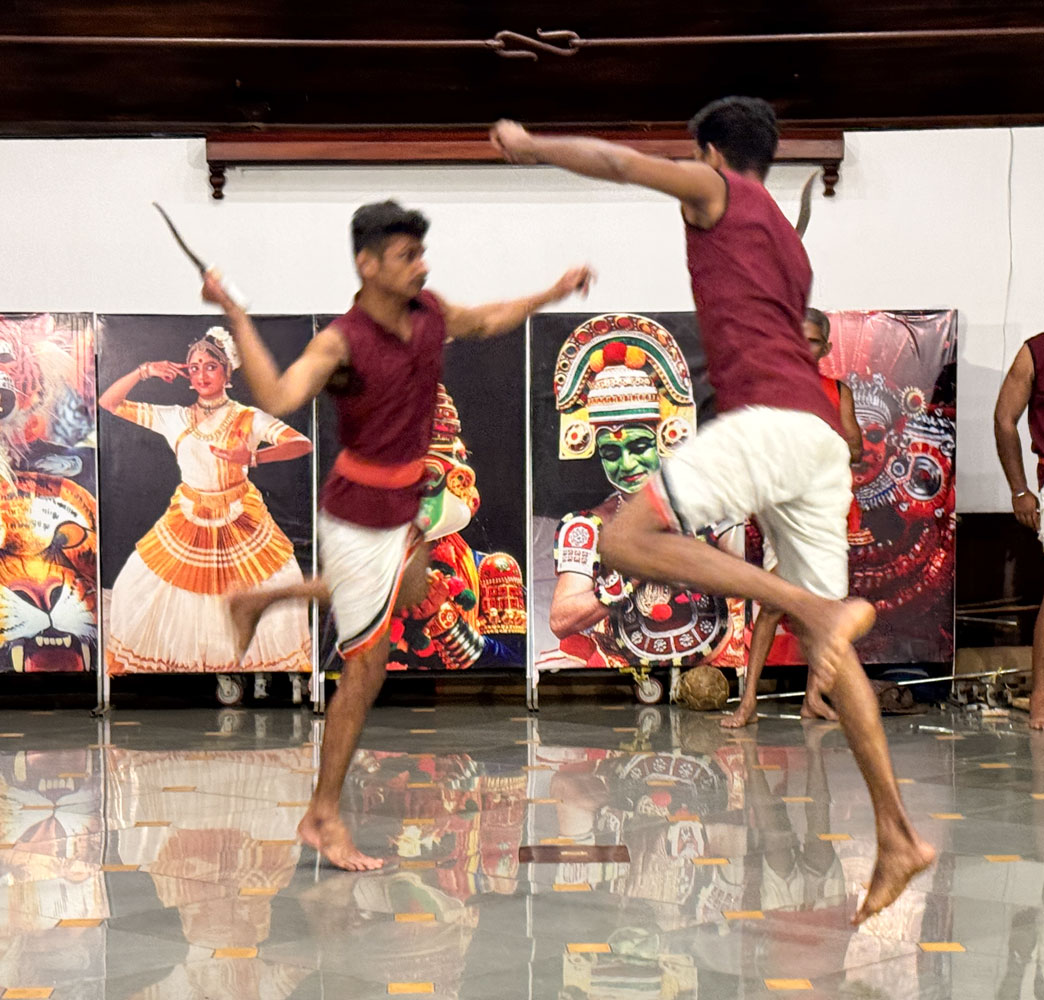
Here they were fighting with poles.
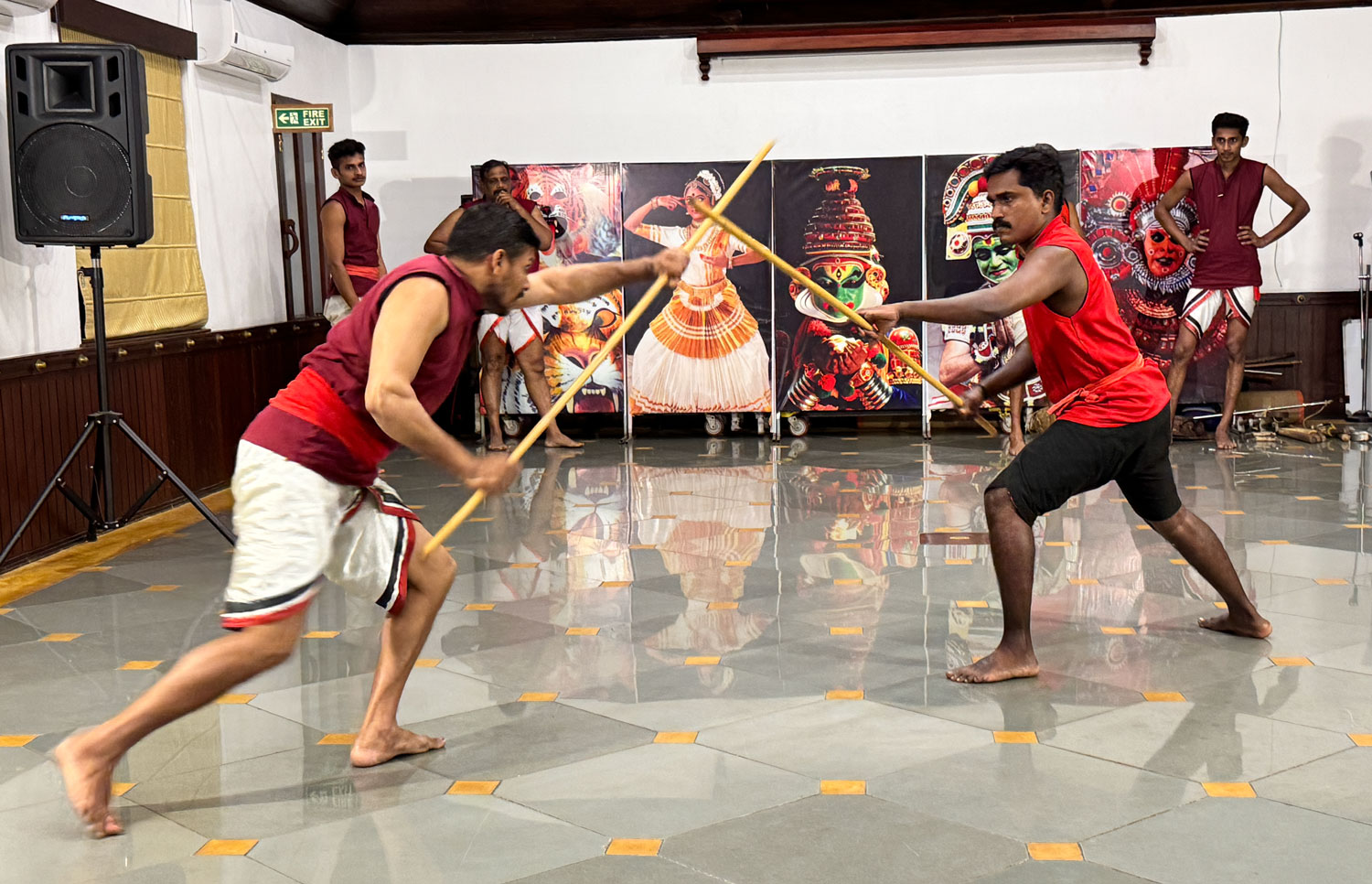
They had one member hold this pole with the ball, and the members attempted to jump and kick the ball with their foot. Very acrobatic.

Two members fighting with clubs.
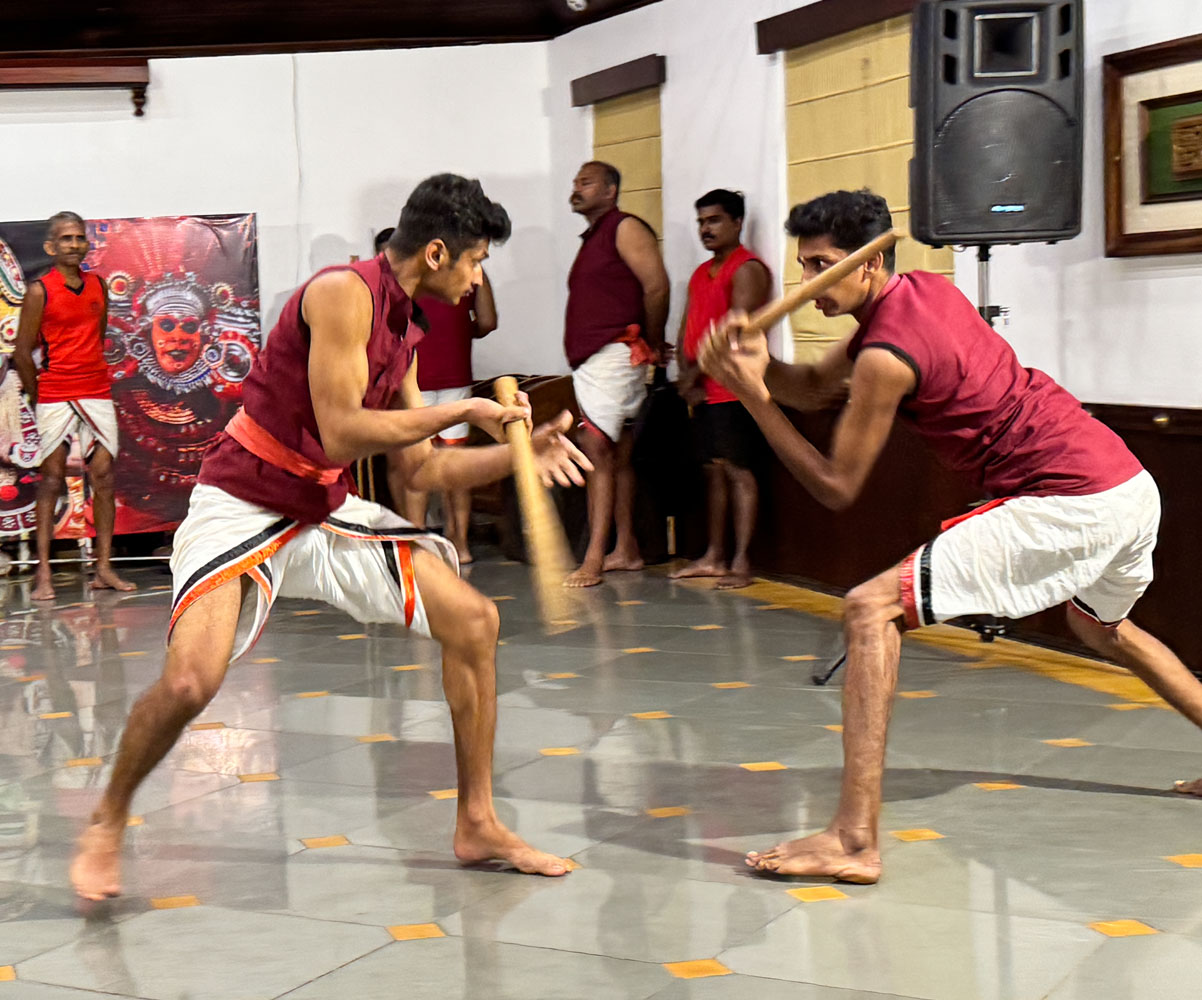
They went on with other weapons, but I think you get the idea. When they finished about 7:45pm we left for dinner. It was a buffet this evening.
Two musicians providing music for the diners.
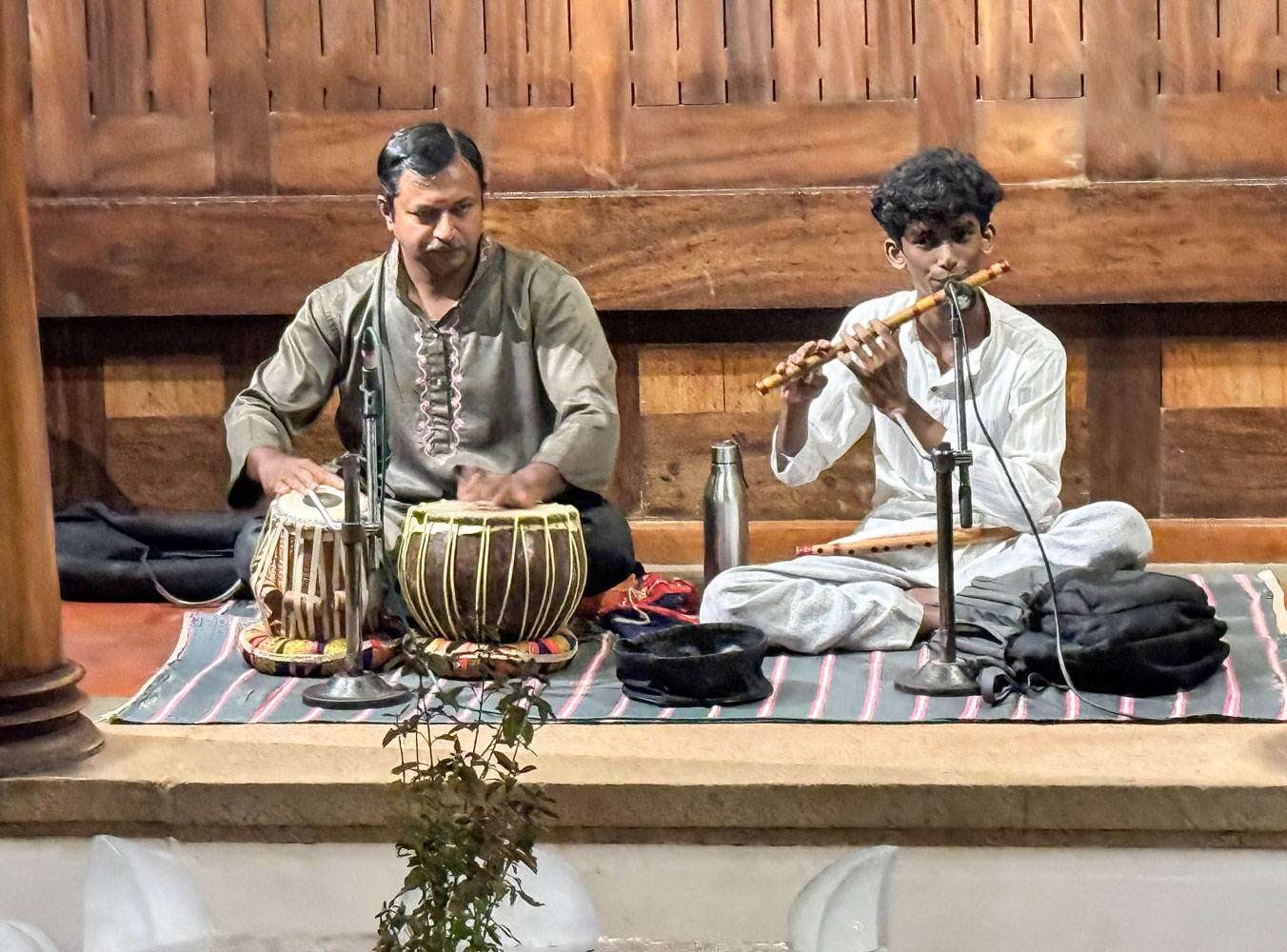
When we finished dinner, it was raining hard. The hotel people gave us two umbrellas and we made it to our room without getting too wet. I tried to photograph the rain, which is always difficult, but you can see it coming off the roof of our shower area.
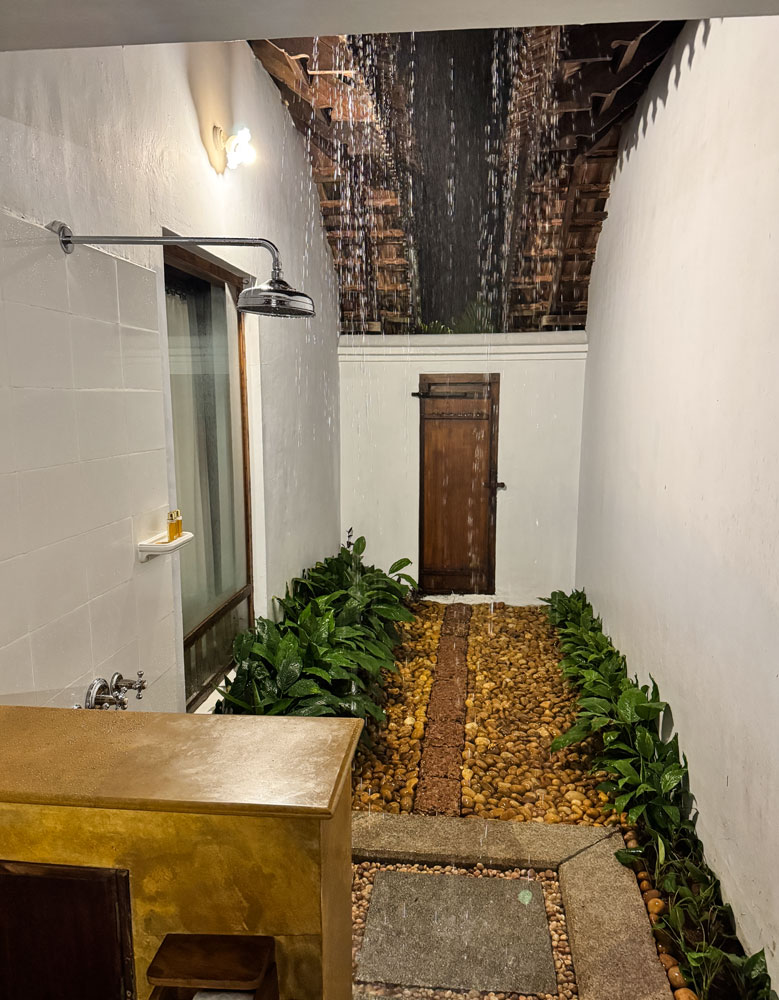
That was the end of our day. Tomorrow, we fly to Mumbai (Bombay), but that's a story for the next installment.